


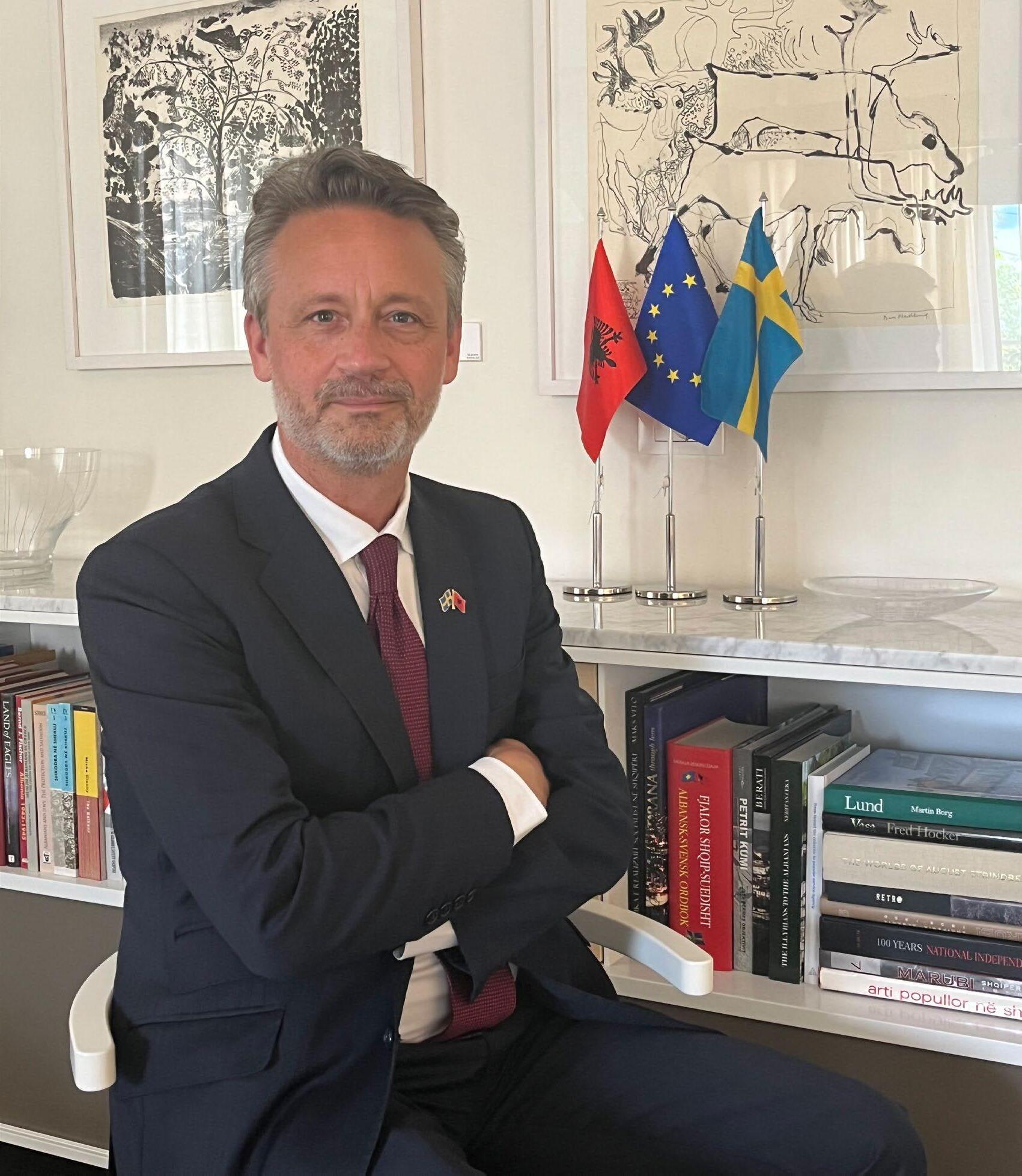

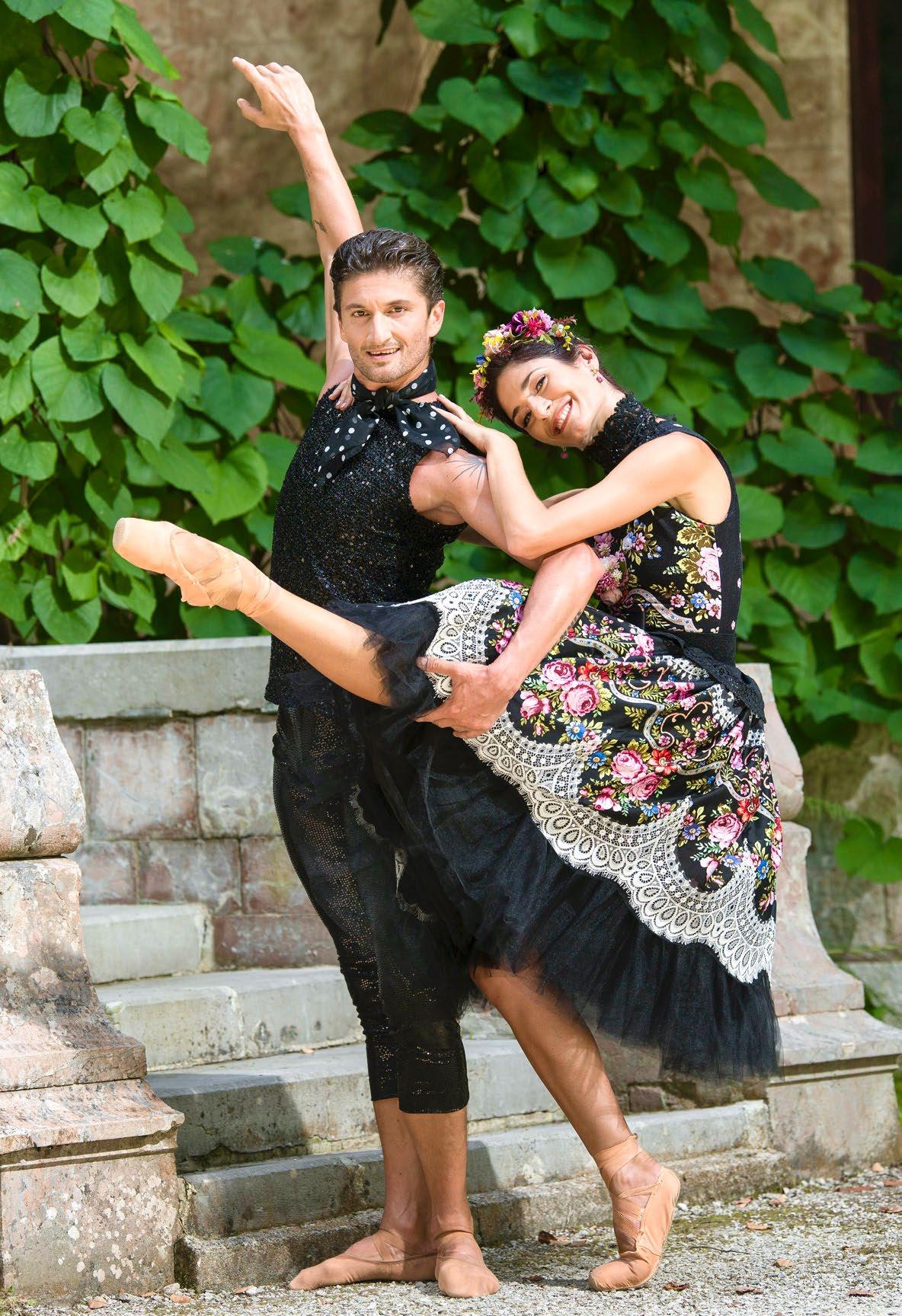
ENO PECI
Love with Dancing and Creating. New Cultures Always Lead me to Something New” MAY/JUNE 2024 MAY/JUNE 2024 TOURISM • HOSPITALITY • BUSINESS • DIPLOMACY • CULTURE TOURISM • HOSPITALITY • BUSINESS • DIPLOMACY • CULTURE TOURISM • HOSPITALITY • BUSINESS • DIPLOMACY • CULTURE MAY/JUNE 2024 INSIDE
XTRA
OF MBARESA DAÇI
Albania’s
EU
“In
THE
MISSION
AMBASSADOR STRÖM’S PRIORITY to Support
Efforts to Become an
Member



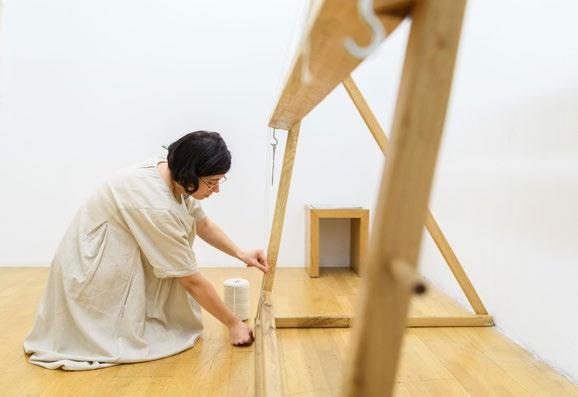


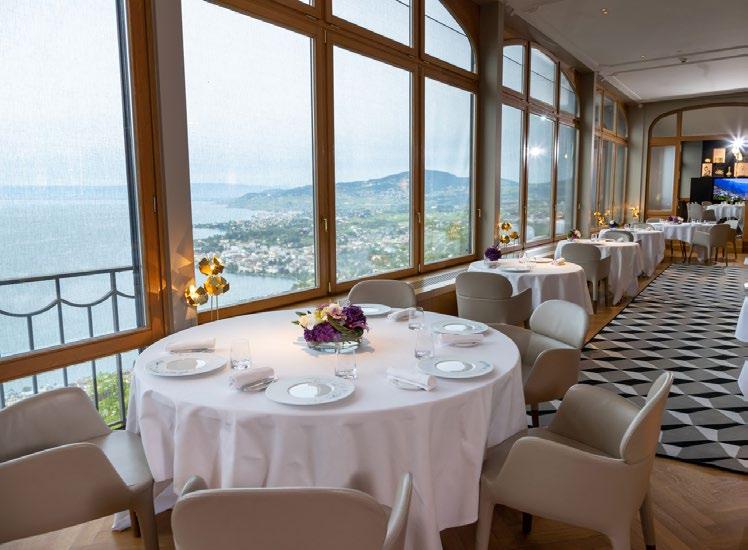
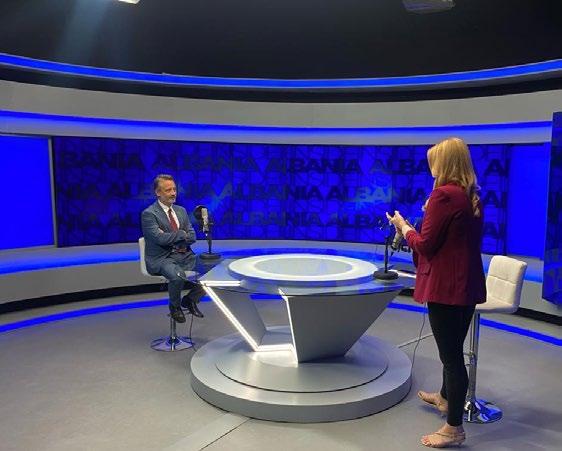

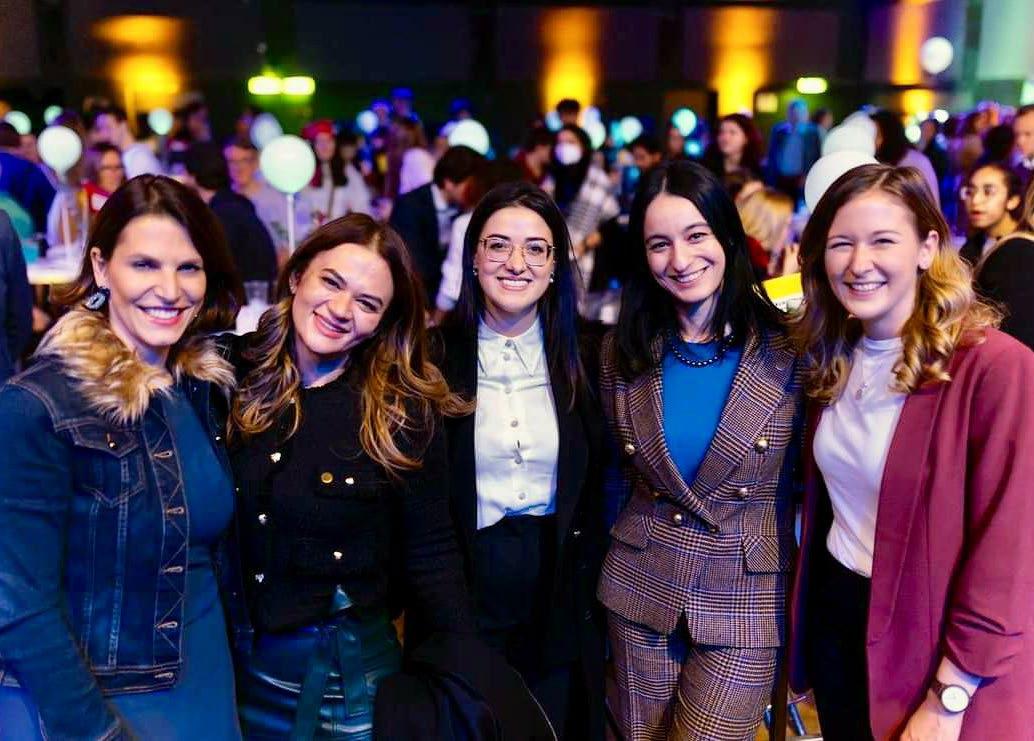
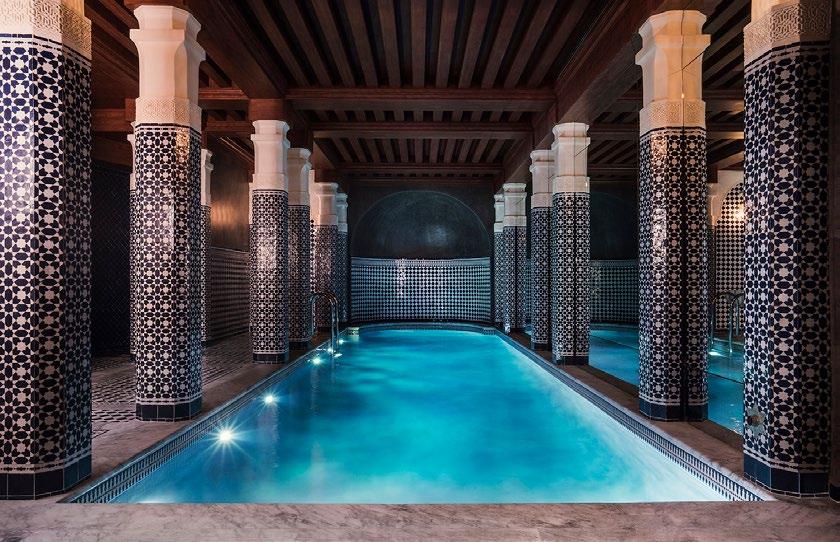

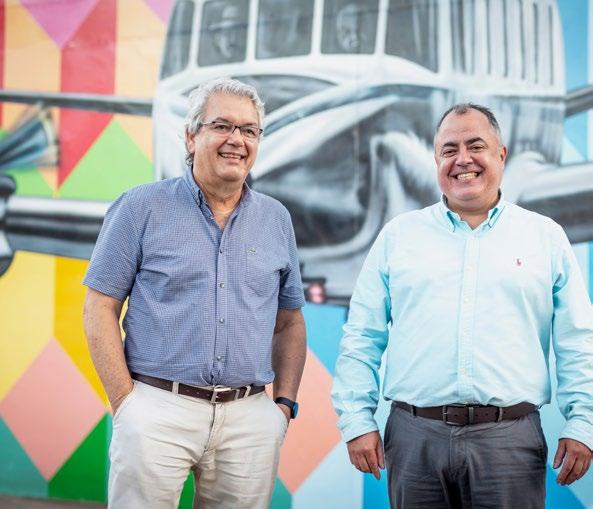

Dubai Dreams to Global Triumph: A Female Entrepreneur’s Path to Success in Luxury Retail, Real Estate, and Education 13 ARLINDA TOPÇIU: A Firm Believer of the Lifelong Learning Process 20 MUJA Law: Albanian Government Is Raising the Bar for the Future Tourism 28 Mastering the Art of Sales Insights from Over a Decade in the Field 34 Ambassador STRÖM’s Priority: to Support Albania’s Efforts to Become an EU Member 38 ANILA SHEHI (DOLLANI): “LEAD Albania Program Aligns with my Principles, where Responsibility, Readiness, and Commitment are the Foundation for a Rich and Sustainable Career” 46 JUNIDA KATROSHI: I NEEDED THE “RIGHT MOVE” IN MY LIFE and THIS WAS “THE LEAD Albania Program” 50 Crossroads of Expansion: the EU’s Enlargement Odyssey 56 ENO PECI: “In Love with Dancing and Creating 60 Art Shorties 68 ANDRIOLA KAMBO: When Inspired by NENE TOLA for MUZA Competition 72 Goran Yordanov: “The Students from Albania at Glion Understand Hospitality Very Well” 76 Shrines of Caucasian Albania in Karabakh 82 Unveiling Excellence European Inventor Award 2024 Finalists Revealed 92 “By Developing Quieter Aircraft, We Would be Able to Meet Customers and Society Needs.” 96 THE PERSPECTIVE OF YOUNG ARTISTS IN MACEDONIA AND ALBANIA: CREATIVE PASSION VERSUS HARSH REALITY IN THE ART WORLD 100 In Brief 106 CONTENTS
MAY/JUNE 2024

FOR ADMISSIONS AND PROGRAM INQUIRIES:
Goran Yordanov
Regional Director Central Europe and Nordics at Sommet Education goran.yordanov@int.sommet-education.com +359 89 688 8191 brochure.glion.edu/bachelors-programs

In the extravagant building, at the Pyramid of Tirana, where we began our journey in the Trade Fairs Industry, we return together with NAREA, from June 12 to 14, with the Properties, Homes, and Residences Fair – Global Real eXtate Fair.
This event caters to those who speak the language of real estate, including agencies and developers of the capital city and beyond!
Klik Ekspo Group and NAREA – the Albanian Association of Real Estate Brokers, bring the Global Real eXtate Fair, featuring surprising home offers and negotiated prices, for just three days.
Put your decisions on hold for a new home or a larger office, and first consult the real estate wizards at the Pyramid, on June 12, 13, and 14.
Tel: 00355 4227421; E-mail: info@globalrealextatefair.al; Web: www.globalrealextatefair.al eXplore. Discover. Own.
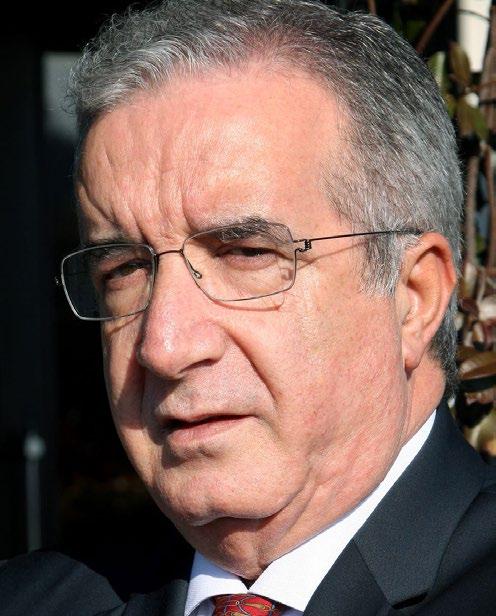
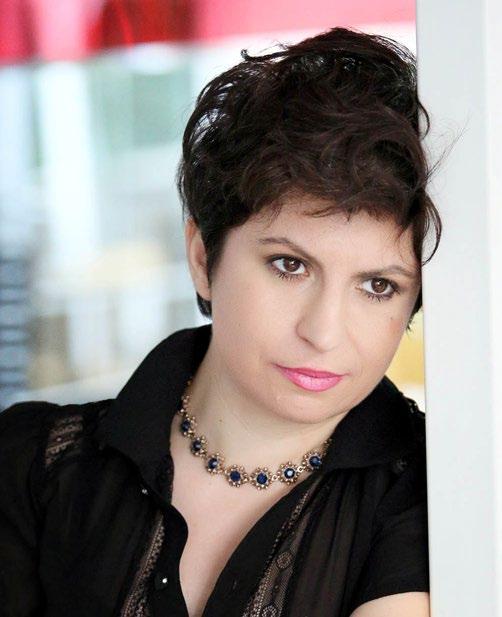
THE TRUE MEANING OF Luxury Travel
One key element of such luxury travel is the idea of a unique, personalized experience that money can’t buy anywhere else and the Unique opportunity to have once-in-alifetime experiences that are not available to all, rather than being driven by costs, therefore little crafted details are essential to any traveler.
The very much used term ‘luxury travel’ permeates all areas of the travel industry, so what that means or think about high end experiences.
A lot of the new luxury hotels have a totally different look, approach or feeling to those that were 20 or 30 years. Wealthy and elite consumers now want or are looking something else. It’s not about formality as it is about the money-can’t-buy experience.
Travelers are much savvier than they once were. Many of the things that were considered luxurious decades ago, are not today’s what they would want or are looking for. Hotels and Resorts can’t get away with just adding on spa & wellness, updated gym facilities or even an
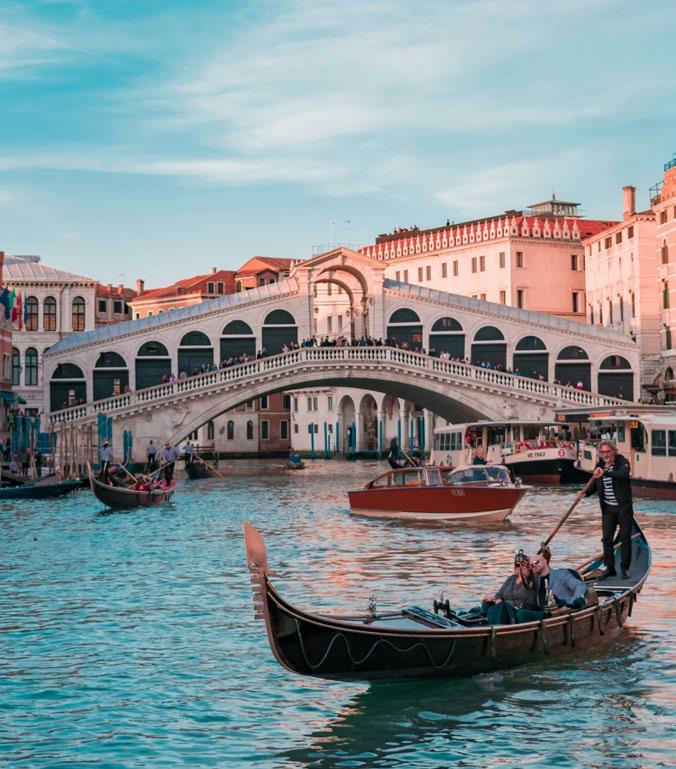


inside pool or airport pick up and hoping for the best.
The today-so-called ‘luxury travelers’ are more concerned on recognizing and identifying or perceiving immediately the concept rather than just look into the different kinds of expensive marble all over the Hotel/Resort to be considered a luxury property. It is much more challenging to be recognized as a luxury hotel or resort today than it was 2 or 3 decades ago. They are looking for authentic, unique, personal, and rewarding experiences and not for a vacation one-size-fits-all as a solution. They look and want something that is tailored specifically for them.
They want to have an experience that brings in regional culture or cuisine, a peek into the local community and traditions or even join locally the day-to-day affairs of the community.
It isn’t just any longer the finest free Champagne and Caviar that makes part of their decision. Yes, luxury means a lot and an impeccable room or suite crafted with local culture details and a super attentive service performed by a super skilled and trained employee.
Time is a luxury in our busy world – and when on vacation, time becomes even much more valuable. I see luxury travel being not only pampering and upscale experiences, but treating your time as an asset that it is.
A hallmark of luxury is when visitors forget what day it is, becoming fully immersed in their day / day’s experiences. Within the definition they love

something experiential, authentic and a trip as seamless as possible. They also want to have an experience that brings in regional culture or cuisine, a peek into the local community and traditions. In other words, luxury traveler wants something finely prepared and curated that make their time worthy.
No longer a destination and staying in a nice hotel is the only requisite. An elevated, personalized experience that is designed to provide travelers with the highest level of comfort, refinement, and exclusivity in all senses, not what is available for everyone. One aspect of luxury travel is the idea of escaping the day-to-day chaos and stress of our world and enjoy peace and relaxation. This greatly involves staying in a private villa or resort, or even taking a customized tour that is tailored to the traveler’s requirements, interests and preferences. One key element of such luxury travel is the idea of a unique, personalized experience that money can’t buy anywhere else and the Unique opportunity to have once-in-alifetime experiences that are not available to all, rather than being driven by costs, therefore little crafted details are essential to any traveler.
Luxury travel most certainly entails doing everything private. From private tours to a special table secured at lunch or dinner in the house of a local native or a top small unknown local restaurant. No lux traveler wants to be waiting or be worrying about logistics. For a reasonable amount of money, you get a tour guide to yourself, and you can often customize the tour to your liking and interests.
FOUNDER’S NOTE
Jose Pinto • Founder Rudina Hoxha • Co-Founder
10 JP TRAILBLAZING MAGAZINE 11 JP TRAILBLAZING MAGAZINE 10 JP TRAILBLAZING MAGAZIN0E

DUBAI DREAMS TO GLOBAL TRIUMPH
A Female Entrepreneur’s Path to Success in Luxury Retail, Real Estate, and Education
Balkan Real Estate: Our Opportunity to Flourish Real Estate Amidst Gulf Region and Balkans
By Rudina Hoxha
Mbaresa Daçi, an Albanian young success, left for Dubai 7 years ago. Today she, as smart as a whip, alongside with her husband, Kristian Cuku, a visionary entrepreneur and a globetrotter, are moving the mountains in the country, known as “Manhattan of the Middle East”. They are the organizers of Balkan Real Estate which was held in Tirana for the second year aiming to transmit their Dubai experience in real estate industry to their colleagues in Albania.
That’s where I met Mbaresa, a stunning lady, full of kindness and positive vibes. She is an accomplished luxury management expert with over 7 years of experience in leading dynamic sales teams where she has always exceeded targets and has driven brand growth. She has worked for world-known brands such as Louis Vuitton and Maison Valentino as sales manager and now she works as Store Director for Prada Group.
Let’s read her full interview to learn more about her life decisions and career.
Full interview follows:
1. As a female entrepreneur, please can you tell us more about yourself and what you do? Can you identify the highlight success in your career that remains key to your excellence in business?
I moved to Dubai 7 years ago to pursue my career in retail management and I can say that it was the best decision I have taken for myself. Dubai has been nothing but a great city for my personal and professional

The bustling city of Dubai is a wonderful mix of commerce, fashion and culture and of course an impressive skyline, dotted with multitudes of skyscrapers. (Credit: Unsplash.)
ENTREPRENEURSHIP
13 JP TRAILBLAZING MAGAZINE


life. It feels like home, far from home. As a female entrepreneur, I’m passionate about empowering others and making a positive impact through my ventures. My background spans various industries, from Luxury Retail Management, Real Estate and Education.
I have worked as sales manager for worldknown brands such as Louis Vuitton and Maison Valentino. Currently I’m working as a Store Director for Prada Group in The Dubai Mall and will continue to have a focus on my career in Luxury Management because it is something I love to do despite all the challenges and diversity it has. Apart from that I have a dedicated team working on my other passion, Education. The highlight of my success in my career it has been my commitment to self-development, exploring new opportunities for growth and innovation and never stop working and learning in life.
2. What was the spark to initiate this exciting journey? Or was there any role model to push you forward? The spark to initiate this journey I found it within myself. I always wanted more for myself, in school, at work, my own personal development and the more I learn the better opportunities comes on the way. Experience has shown us that the ideal is to learn from the mistakes of others. It is precisely here that Extra Education comes into play, where we provide our children with the opportunity not to repeat all the steps of learning from mistakes but to have the chance to be educated in childhood with the most advanced programs in science, art, and sports. Extra Education is playing a very important role in all three fields currently in the communities where we are present in the United Arab Emirates, bringing the most innovative programs licensed by Harvard, Cambridge and the New York State
15 JP TRAILBLAZING MAGAZINE
Curriculum, and we want to offer the same opportunity in communities in Albania. Being part of Extra Capital through Extra Education, we offer also the investors the opportunity to be part of this initiative and to diversify their investments not only in long-term or shortterm rental income but also in the field of education.
3. How would you describe Dubai while we notice day by day that it is a haven of emerging and successful entrepreneurs in various fields? In what ways has it stimulated your business to flourish? To what extent, Dubai has contributed to your business success?
Dubai epitomizes a haven for emerging and accomplished entrepreneurs across a multitude of industries, with its vibrant and dynamic business landscape. Its strategic location, world-class infrastructure, and supportive regulatory environment have collectively fostered an environment conducive to business growth and innovation. For our business, Dubai has served as a catalyst for flourishing in several ways. Firstly, its strategic location as a global hub has provided us with unparalleled access to international markets, enabling us to expand our reach and forge valuable partnerships on a global scale.
Secondly, Dubai’s commitment to fostering entrepreneurship and innovation has provided us with access to a diverse talent pool and resources, facilitating our ability to recruit top-tier talent and leverage cuttingedge technologies to drive our business forward.
Dubai’s contributions to our business success cannot be overstated. It has provided us with a fertile ground for growth, access to global markets, and a supportive ecosystem that continues to fuel our

entrepreneurial journey towards greater heights of success.
4. You and your husband are the organizers of Balkan Real Estate Summit whose second edition was held in Tirana recently. Is this platform a way you as a couple have chosen to convert your experience from Dubai to Albania?
Yes, organizing Balkan Real Estate Summit in Tirana is indeed a way for my husband and me to leverage our experience from Dubai and apply it to the real estate market in Albania. This is the second year to organize such a great event and we are very excited for the layoffs our new corporate in Dubai XTRA Capital, where we will operate in 4 main different sectors, Real Estate, AI Media and Marketing, Education and Healthcare. Having gained valuable insights and expertise in Real Estate Industry through our experiences in Dubai, we saw an opportunity to contribute to the development of the real estate sector between Gulf Region and Balkan.
By bringing together industry professionals, investors, and stakeholders through Balkan

Real Estate Summit, we aim to create a platform for networking, knowledge sharing, and collaboration, similar to what we have witnessed in Dubai’s real estate sector. Our goal is to facilitate investment opportunities, showcase innovative projects, and promote sustainable development practices within the Balkan Real Estate market and not only.
Through our combined experiences and passion for investment, we hope to make a meaningful contribution to the growth and prosperity of the real estate industry in all the countries that XTRA Capital operates, while also creating opportunities for economic advancement and community development through EXTRA Education.
5. Can you elaborate more on the results of the Balkan Real Estate - second edition?
What makes this platform so attractive and productive in your view and how do you see its future?
The second edition of Balkan Real Estate in Tirana was a resounding success, exceeding our expectations in terms of participation, engagement, and outcomes. The platform proved to be highly attractive and

productive due to several key factors: Networking Opportunities: Balkan Real Estate brought together a diverse array of industry professionals, investors, developers, and government representatives, providing ample opportunities for networking, collaboration, and partnership building.
Knowledge Sharing: The event featured insightful panel discussions, keynote speeches, and presentations by experts in the real estate sector, facilitating knowledge sharing and the exchange of best practices. Attendees gained valuable insights into market trends, investment opportunities, regulatory frameworks, and innovative development strategies.
Project Showcase: Balkan Real Estate served as a showcase for innovative real estate projects and developments in Albania and the broader Balkan region. Participants had the opportunity to explore
ENTREPRENEURSHIP ENTREPRENEURSHIP
16 JP TRAILBLAZING MAGAZINE 17 JP TRAILBLAZING MAGAZINE
With her husband, Kristian Cuku, a visionary entrepreneur and a globetrotter
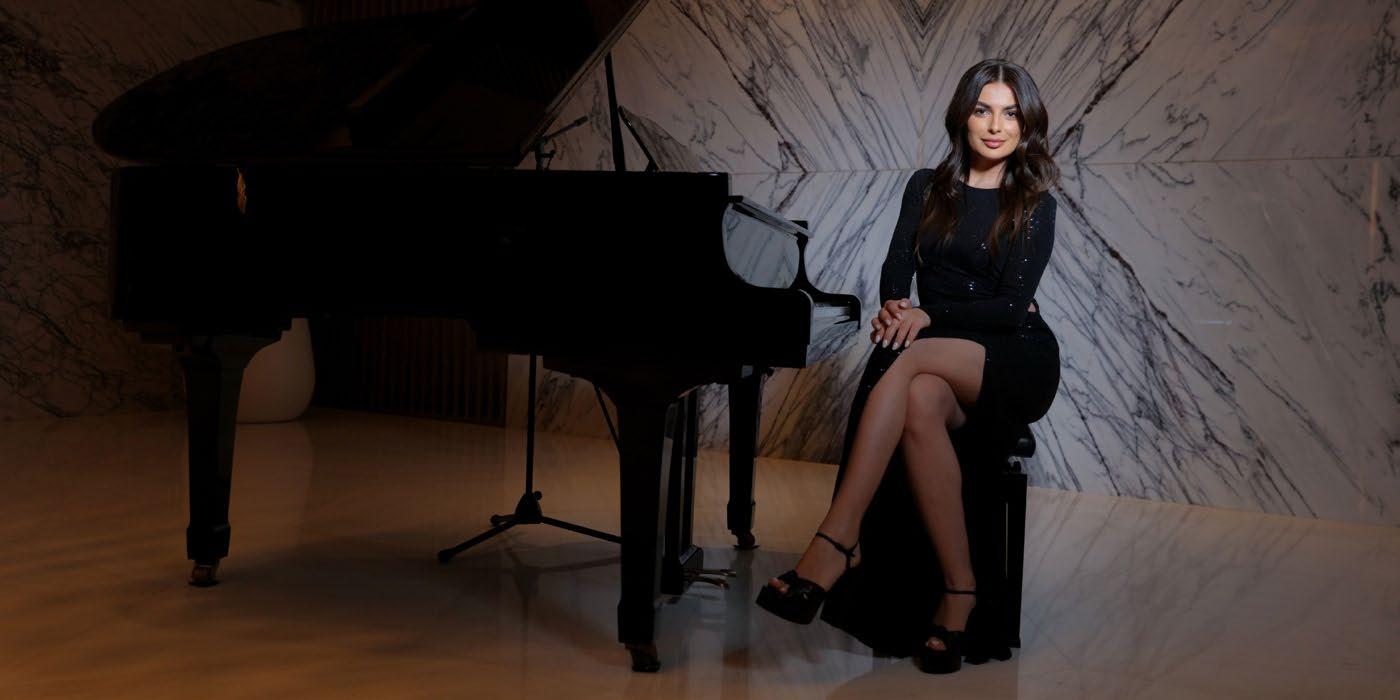
investment opportunities, discover new projects, and engage directly with project owners and developers.
International Perspective: The event attracted participation from international investors, developers, and industry leaders, bringing a global perspective to the local real estate market. This international presence not only enhanced the event’s prestige but also opened up new avenues for crossborder collaboration and investment.
Forward-Thinking Approach: Balkan Real Estate embraced a forward-thinking approach to address emerging trends and challenges in the real estate sector, including sustainability, technology integration, urban planning, and community development. This forward-looking perspective resonated with participants and positioned the platform as a leading forum for innovation and progress in the industry.
Looking ahead, we envision a bright future for Balkan Real Estate as a premier platform for driving growth, investment, and development in the Balkan real estate market. By continuing to foster collaboration, innovation, and knowledge exchange, we
believe that Balkan Real Estate will play an instrumental role in shaping the future of the real estate sector in the region, driving sustainable development, economic prosperity, and social impact.
6. Are you creating awareness for the investors in the Balkans to come to Dubai? Is this another objective of the Balkans Real Estate?
Promoting investment opportunities in Dubai to investors in the Balkans is indeed one of the objectives of Balkan Real Estate. By showcasing successful real estate projects, discussing market trends, and facilitating networking opportunities, Balkan Real Estate aims to raise awareness among Balkan investors about the potential benefits of investing in Dubai’s dynamic real estate market.
Dubai’s strategic location, robust infrastructure, business-friendly environment, and diverse investment opportunities make it an attractive destination for international investors, including those from the Balkans. By highlighting the advantages and opportunities available in Dubai, Balkan Real Estate seeks to encourage cross-border
By highlighting the advantages and opportunities available in Dubai, Balkan Real Estate seeks to encourage cross-border investment and collaboration, fostering mutually beneficial partnerships between investors from the Balkans and stakeholders in Dubai’s real estate sector ”
investment and collaboration, fostering mutually beneficial partnerships between investors from the Balkans and stakeholders in Dubai’s real estate sector.
In addition to promoting investment in Dubai, Balkan Real Estate also serves as a platform for Dubai-based developers, real estate agencies, and service providers to engage with potential investors from the Balkans, facilitating dialogue, information exchange, and business development opportunities.
Overall, by promoting Dubai as an attractive investment destination and facilitating connections between Balkan investors and Dubai’s real estate market, Balkan Real Estate contributes to fostering economic growth, diversification, and international collaboration in both regions.
7. You are a supermodel for the other women entrepreneurs who want to follow your suit. What is your advice for them to thrive?
Thank you for the compliment! My advice for aspiring women entrepreneurs is to embrace the following principles to thrive:
Confidence: Believe in yourself and your abilities. Confidence is key to overcoming challenges, taking risks, and seizing opportunities in the entrepreneurial journey.
Resilience Entrepreneurship comes with its ups and downs. Stay resilient in the face of setbacks, failures, and obstacles. Learn from setbacks and use them as stepping stones to success.
Vision: Have a clear vision for your business and what you want to achieve. Set ambitious yet achievable goals, and stay focused on your long-term objectives while remaining adaptable to changing circumstances.
Continuous Learning: Never stop learning and growing. Invest in acquiring new skills, expanding your knowledge, and staying updated on industry trends and best practices.
Network: Build a strong support network of mentors, advisors, peers, and collaborators. Surround yourself with positive and supportive individuals who can offer guidance, feedback, and encouragement along the way.
Persistence: Success often requires perseverance and determination. Stay committed to your goals, and be willing to put in the hard work and effort required to overcome challenges and achieve success.
Balance: Strive for a healthy balance between work, family, and personal well-being. Prioritize self-care, maintain boundaries, and seek harmony in all aspects of your life to sustain long-term success and fulfillment.
By embracing these principles and staying true to yourself, you can thrive as a woman entrepreneur and make a meaningful impact in the world.
ENTREPRENEURSHIP
Mbaresa Daçi: “The spark to initiate this journey found it within myself.”
ENTREPRENEURSHIP 18 JP TRAILBLAZING MAGAZINE 19 JP TRAILBLAZING MAGAZINE
ARLINDA TOPÇIU: A Firm Believer of the Lifelong Learning Process
By Rudina HOXHA
TRAILBLAZING MAGAZINE was honored to have had the opportunity to interview Mrs. Arlinda Topciu, Head of Cabinet, Minister of State for Youth and Children and shed light on this category which stands for the future development of the country.
As part of the Inter Institutional Working Group, drafting and preparing the Albanian National Youth Strategy 2022-2029, she has had the chance of closely monitoring the UN Youth Strategy and the EU Youth Strategy. “I can say it strongly that the Albanian Youth Strategy is fully aligned with the goals, objectives, measures and activities of these two important policy documents reflecting our commitment to deliver to our youth, opportunities and programs comparable and aligned with them,” Topciu said.
Back from Kuwait in 2021, where she has been working for almost 5 years as a full-time lecturer at the American University of Middle East, teaching accounting and finances courses, Arlinda Topciu thinks that Albania has made substantial strides in enhancing its education system and ensuring equitable access to education for all children.
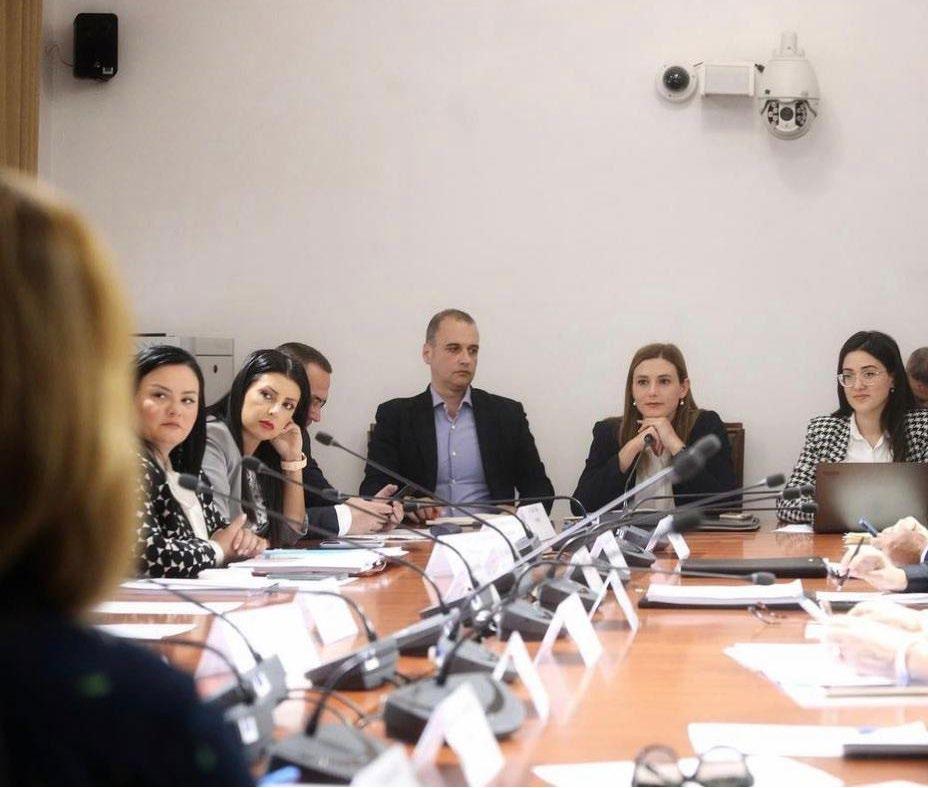
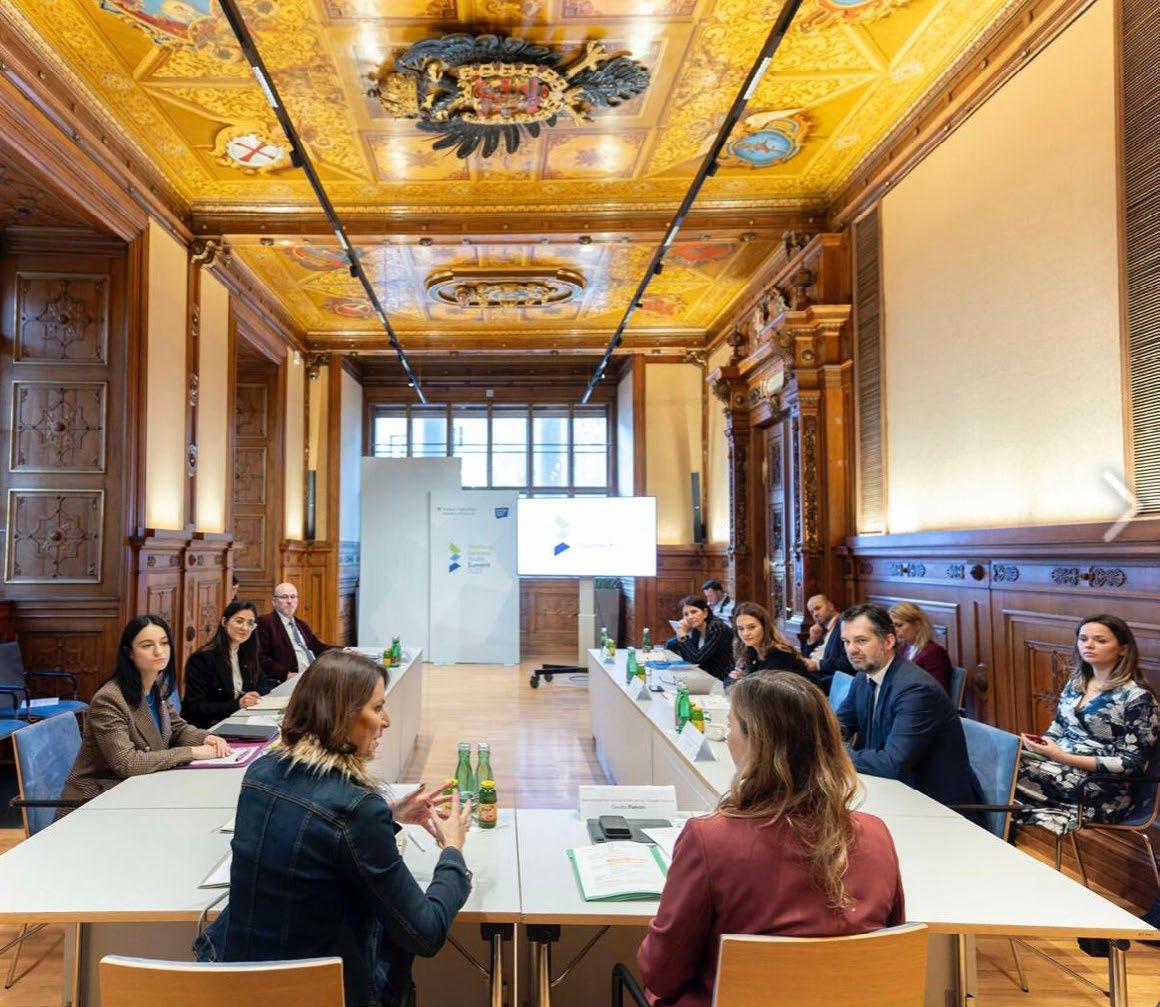

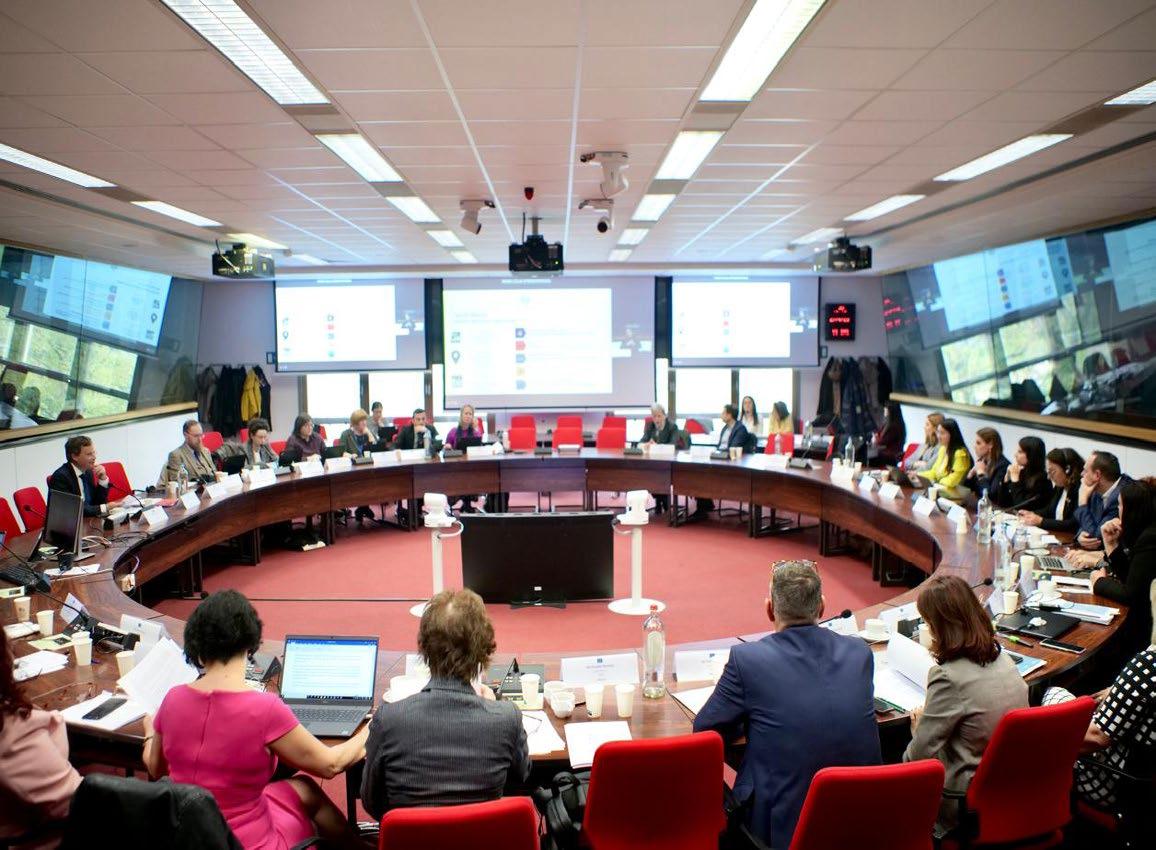 Albert Borschette, Conference Centre, Brussels
Place the caption here: Participation in the WB Youth Summit 2022 in Vienna.
Participation in the WB Youth Summit 2022 in Vienna.
Albert Borschette, Conference Centre, Brussels
Place the caption here: Participation in the WB Youth Summit 2022 in Vienna.
Participation in the WB Youth Summit 2022 in Vienna.
20 JP TRAILBLAZING MAGAZINE
Albert Borschette, Conference Centre, Brussels

She also reveals that financial education will be soon updated in the pre-university curricula. “More recently MoSYCh, together with Ministry of Education and Sports, Bank of Albania, and many other key stakeholders from the public and private institutions, is working on updating and improving the Financial Education curricula, in the preuniversity education. We believe that this will be a major milestone for the Albanian youth and children.”
In this interview, she also talks on the specific initiatives and projects, launched by the Ministry of State for Youth and Children in collaboration with other relevant ministries as well as on the international youth exchange programs which have turned out a success for the Albanian youth.
Full interview below:
Please can you tell us more about your role as Head of the Cabinet of the Minister of State for Youth and Children, and how do you think this position has impacted your career so far?
Being part of the Cabinet of the Minister of State for Youth and Children (MoSYCh) has been a major step in my career so far, especially after returning from Kuwait, where I had been working for almost 5 years in the Academia. During 2021, the Government of Albania launched a call named “Gati per Shqiperine/ Ready for Albania”, as an opportunity for Albanians living and working abroad who were willing to return to their homeland and contribute to country’s development. At the time, I was working as a full-time Lecturer at the American University of Middle East, in Kuwait (AUM is ranked No.1 in Kuwait from the QS Global Ranking for 2025 and 611620 globally, hosting 14’000 +students),
teaching accounting and finances courses. I took the call to my heart and applied, and since October 2021, I have had the privilege of being part of the Cabinet of the Minister of State for Youth and Children, and it has been a lifetime privilege to work with Minister Muzhaqi and the team, to contribute to many programmes and projects the Albanian Government and the MoSYCh has successfully implemented.
At my capacity as a Chief of Cabinet, characterized by a fast-paced working style, and a cross-sectorial working content (youth and children), I’ve had the opportunity to network with key stakeholders from central and local governmental institutions, observe and address social issues related to youngsters and children from a decision-making perspective and manage complex issues under time pressure. With regards to Policy Development and Implementation, I’ve assisted the MoSYCh in developing policies related to youth and children’s welfare, education, health, and rights, by analyzing data and research to inform policy decisions, as well as oversee the implementation of these policies to ensure they achieve their intended outcomes.
During my last years, amongst other duties, I have had the chance to work closely with experts, officials and members of institutional working groups on several strategic documents such as National Youth Strategy, National Agenda on the Rights of the Child, Strategy on Decentralization, Budgeting for Youth, Youth Guarantee, to name but a few, I can surely state that; There is an increasingly important need to use policies, resources and capacities for a better tackling and addressing of issues related to youth empowerment, child
poverty and vulnerability, social protection and capacity strengthening. Quite often I’ve had the opportunity to represent the Minister’s Office in public forums, meetings, and conferences in Albania, or abroad and I’ve had the opportunity to advocate for the rights and empowerment of youth and children at various levels.
In parallel with the above, I am an adjunct lecturer at the Luarasi University, in Tirana, teaching accounting and finances courses.
To me, these experiences have been a prestigious and impactful role that has significantly shaped my career trajectory by providing valuable experience, skills, and networking opportunities.
What is the motto of your work?
In my work, I am a firm believer of the lifelong learning process and that small steps can lead to bigger results. I believe that social issues such as those related to youth and children, are of an unmatched importance globally and we need to develop data and means to address them accordingly by evidence-based and effective methodologies and programmes. A better decision making provides spill-over effects and will lead to economic growth, job growth and improved lives.
Considering the importance of education in Albania and our country’s efforts to provide education to all Albanian children equally, what initiatives and projects this Ministry has undertaken? Can you mention some of the major ones?
Albania has made substantial strides in enhancing its education system and ensuring equitable access to education for all children. While specific initiatives and projects may evolve over time, several
YOUTH & CHILDREN YOUTH & CHILDREN
22 JP TRAILBLAZING MAGAZINE 23 JP TRAILBLAZING MAGAZINE
Together with Minister Muzhaqi in one of the Parliamentary Sessions, discussing the Law in Budget 2022

noteworthy programs have been launched by the Ministry of State for Youth and Children in collaboration with other relevant ministries. To name a few:
Smart Labs for First and Second Graders: This initiative focuses on integrating ICT, smartboards, and educational games into classrooms for young students. By providing digital devices and training for teachers and pupils in the first and second grades, the program aims to enhance digital education from the early ages. It is slated for a nationwide rollout to all pre-university schools soon.
Afterschool Programs: Designed to enhance arts and crafts skills, these programs offer children and youth in pre-university education opportunities to explore and develop their creative abilities in arts, crafts, environment, self-defense, technology, sports etc.
Sports Teams Program: With approximately 10,000 youngsters registered, this program
provides training and opportunities to participate in local and national volleyball and basketball championships.
More recently MoSYCh, together with Ministry of Education and Sports, Bank of Albania, and many other key stakeholders from the public and private institutions, is working on updating and improving the Financial Education curricula, in the pre-university education. We believe that this will be a major milestone for the Albanian youth and children, and this initiative will equip our youth and children with both theoretical knowledge and practical skills in financial concepts, to be at the forefront and enabling them to compete globally with peers from more advanced economies.
These initiatives and projects demonstrate Albania’s commitment to improving its education system and ensuring that all children have equal opportunities to learn and succeed.
Should teachers and parents be more
aware and better understand the mental health issues that children could likely suffer from due to various reasons such as family-related, social reasons and others? How important is the role of the psychologists, stationed at the schools for this category of children?
Nowadays children and youth face a myriad of mental health issues, including anxiety, depression, and behavioral disorders, often exacerbated by social pressures, academic challenges, and family dynamics. The National Youth Strategy of Albania, under its 3d Policy Goal related to welfare, addresses these concerns through a comprehensive approach encompassing several line ministries and institutions, that integrates mental health support from the schooling system/psychologists at school, and promoting early identification and referring system, and ensures access to counseling and psychological services. The strategy emphasizes the importance of creating a supportive environment within schools and communities, training educators and parents to recognize and respond to signs of mental distress, and fostering resilience and well-being among youth and children. Additionally, collaboration with healthcare providers and NGOs is prioritized to deliver specialized care and support, ensuring that mental health care is accessible and effective for all children.
The international youth exchange programs represent a key component in the education development of children and youth. What are some of the programs which have turned out successful for Albanian children and youth and why?
On my role as Chief of Cabinet, I have had the chance to closely work with many other colleagues from other central institutions, with regards to the screening process for Albania’s accession to the European Union
(EU). It involves a thorough examination of its compliance with EU standards and regulations, and Youth, more specifically falls under Chapter 26. This chapter addresses the alignment of national policies with EU objectives in education, youth, sport, and culture. International youth exchange programs play a pivotal role in the educational and personal development of children and youth by fostering cultural understanding, enhancing language skills, and providing valuable global perspectives. In Albania, several programs have proven particularly successful:
Erasmus+ Youth Exchanges as one of the most prominent programs facilitating youth exchanges, offering Albanian students many opportunities to study, train, and volunteer across Europe.
RYCO - Superschools Western Balkans School Exchange Scheme aims to support the peacebuilding and reconciliation process and intercultural learning and dialogue among schools, students and their communities. It aims at providing the ground for creating strong and sustainable bonds between secondary schools within the region and building longterm partnerships. By participating in this initiative, secondary schools will have the chance to apply and, if selected, implement school to school exchanges as well as to participate in the scheme’s activities dedicated to their capacity building, networking and cooperation.
CDEJ- I have the privilege to represent Albania at The European Steering Committee for Youth (CDEJ), which brings together representatives of ministries or bodies responsible for youth matters from the 48 States Parties to the European Cultural Convention. The CDEJ fosters
YOUTH & CHILDREN YOUTH & CHILDREN
24 JP TRAILBLAZING MAGAZINE 25 JP TRAILBLAZING MAGAZINE
“Deputies club” session on digital safety online for children.
co-operation between governments in the youth sector and provides a framework for comparing national youth policies, exchanging best practices and drafting standard-setting texts. Under the auspices of CDEJ and CMJ, several ad hoc exchange programmes are launched and encouraged from all member states where different topics are being discussed such as youth empowerment, youth rights, youth for democracy, equality, culture, inclusiveness etc.
What ways are being encouraged to stimulate employment? Is it worrying the percentage of young people who are neither employed nor involved in other forms of training or education?
Encouraging employment in Albania, particularly among the youth, is a critical priority of the Albanian Government, considering the high percentage of young people composing Albanian population and a significant number of young people not engaged in education, employment, or training (NEET). The Government of Albania is actively implementing a range of strategies to stimulate employment, with a particular focus on addressing the high rates of youth unemployment and NEET. By enhancing vocational education and training, promoting entrepreneurship, reforming labor markets, and providing targeted support for NEET individuals, the country aims to create more opportunities for young people and integrate them into the workforce. Continuous efforts and investments in these areas are essential to ensure the long-term economic and social well-being of the nation. Various strategies and initiatives have been initiated to address this issue, such as:
Expanding and enhancing Vocational Education and Training (VET) to equip
young people with practical skills that are in demand in the labor market.
Support of Entrepreneurship amongst youngsters with governmental financial aid, such as the Start-up Grants of 10 million euros distributed in 4 years by developing a supportive ecosystem for startups, including incubators and accelerators, to foster innovation and business creation
ICT Programes for youngsters, promoting information and communication technology (ICT) training programs to prepare young people for jobs in the digital economy with governmental subsidy. So far 1200+ youngsters have finished these training courses and are ready to join the job market.
Youth Guarantee, targeting NEET (Not in Employment, Education, or Training) which aims to ensure that young people receive a good-quality offer of employment, continued education, an apprenticeship, or a traineeship within a specific period after becoming unemployed or leaving formal education.
National Internship Programme, where youngsters are provided the opportunity to conduct a 3 months internship in Governmental/public administration after finishing their Bachelor studies, and the most successful ones, are being held with an employment contract. This programme is coordinated by the Minister of State for youth and children for the past 3 years, and this year, marks its 9th year of being implemented.
Which aspects of the Youth 2030 plan are you most enthusiastic or optimistic about? How will it be adapted for Albania?
As part of the Inter Institutional Working

Group, drafting and preparing the Albanian National Youth Strategy 20222029, I have had the chance of closely monitoring the UN Youth Strategy and the EU Youth Strategy. I can say it strongly that the Albanian Youth Strategy is fully aligned with the goals, objectives, measures and activities of these two important policy documents reflecting our commitment to deliver to our youth, opportunities and programs comparable and aligned with them.
The 2030 UN Youth Strategy is based on the global vision of a world in which the human rights of every young person are realized and it states that every young person is empowered to reach their full potential; and which recognizes the capacity, resilience and positive contribution of youth as agents of change.
More connected to each other than ever
before, youth nowadays also wish to contribute to the sustainability of their communities, by proposing innovative solutions, urging social progress and inspiring political change. They are also agents of change, mobilizing to further the Sustainable Development Goals to improve human lives and the planet’s health.
Equipped with the necessary skills and opportunities to reach their potential, youth can be a driving force supporting development and contributing to peace and security. Based on the developments of this strategy, youth-led organizations are expected to be encouraged and empowered to participate in the translation of the 2030 Agenda into local, national and regional policies. Through political engagement and suitable resources, youth have the potential to most effectively transform the world into a better place for everyone.
YOUTH & CHILDREN YOUTH & CHILDREN
26 JP TRAILBLAZING MAGAZINE 27 JP TRAILBLAZING MAGAZINE
Representing Ministry of State for Youth and Children, in Committee of the Rights of the Child in Geneva, September 2023, reporting on the progress Albania has made in this field.
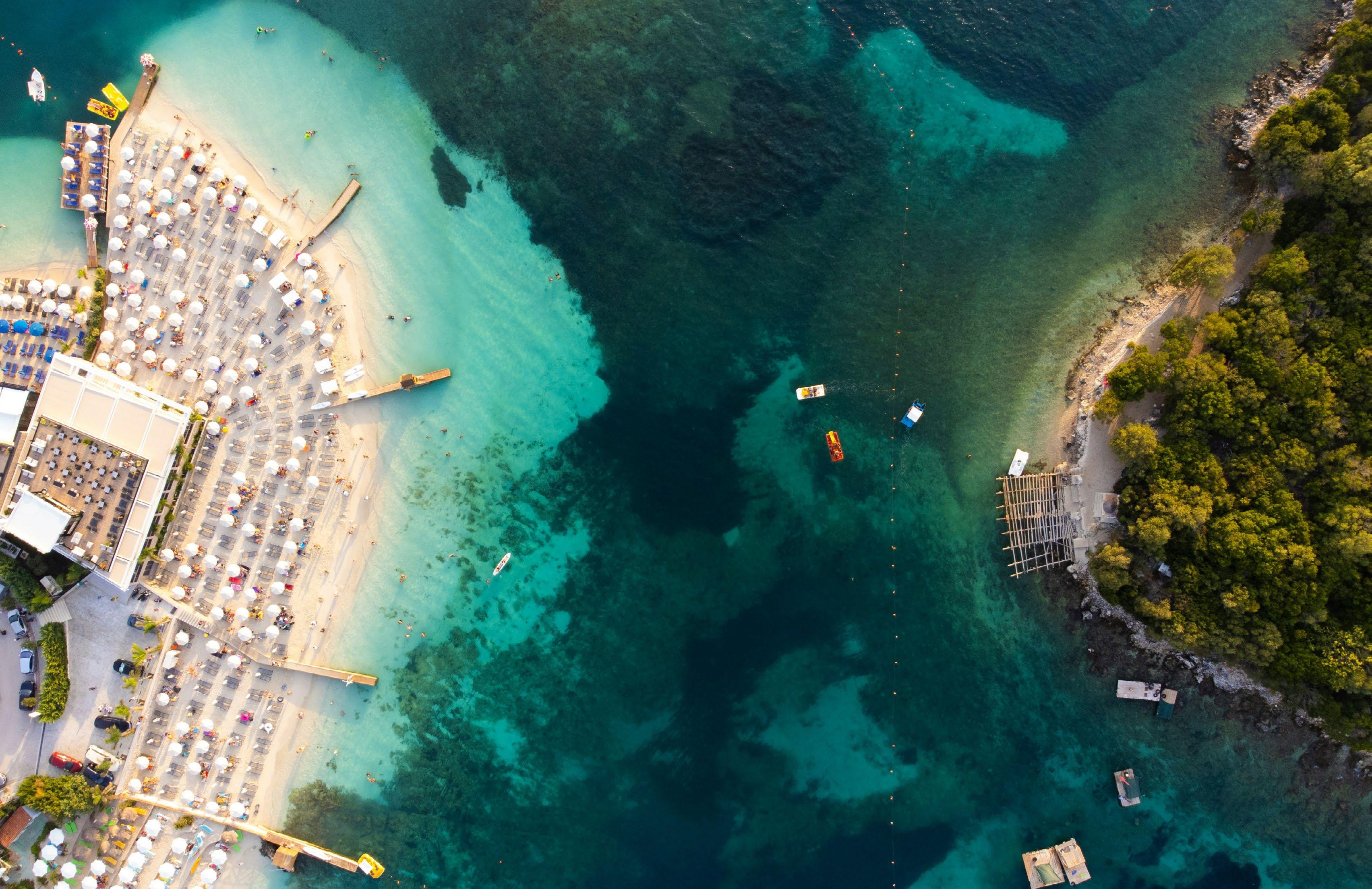

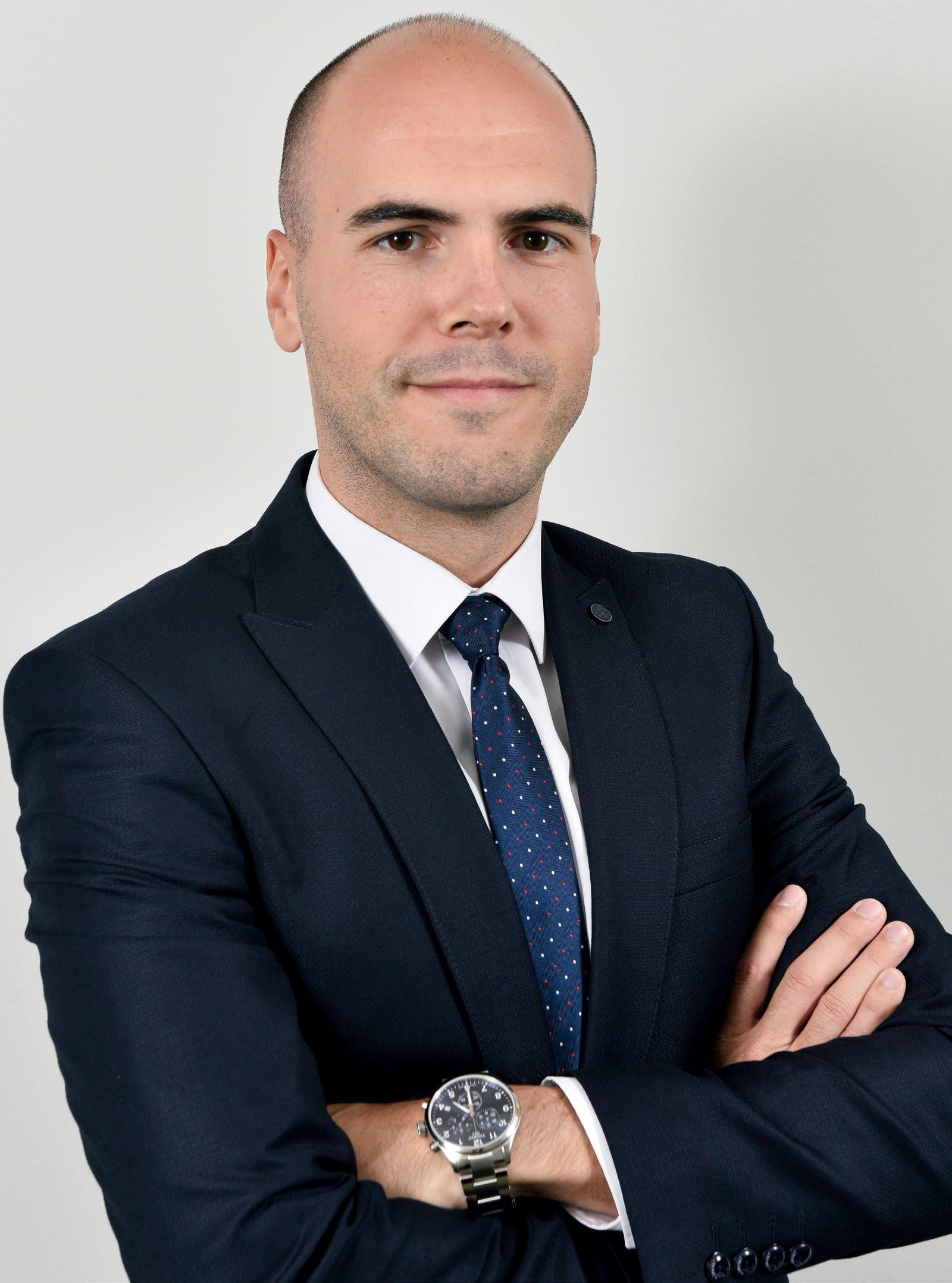
MUJA LAW Albanian Government Is Raising the Bar for the Future Tourism
In this issue of TRAILBLAZING MAGAZINE, Eno Muja, Partner at MUJA Law analyzes the newly approved decision of the Albanian Council of Ministers which establishes the criteria, procedures, and documentation necessary for entities wishing to apply for the special status of investor in a 4 or 5-star accommodation structures.
Read the full interview with Mr. Muja below to understand the ins and the outs of this decision:
Hi Eno, thank you for taking your time in discussing with us about the latest trends in tourism industry in Albania. Lately in Albania there has been an increasing positive trend in tourism and the Albanian government is aiming at inviting as many big companies in this field as possible. Could you give us an overview in this regard? Rudina, as always, it is a pleasure to be part of Trailblazing Magazine and I thank you for that.
It is indeed true that Albania is facing an increase in tourism, especially during the last year. The official figures from the state authorities responsible in this regard, indicate that tourism in 2023 has experienced the best historical moment.
Referring to the data, the summer season was reported as quite good, but not only, since the positive figures reflected an extension of the summer season into the fall as well. During the January-December period, a total of approximately 10 million foreigners who visited the country were registered. The indicators of the movement of citizens and accommodation structures for the month of January of this year also spoke of a good start of the year.
Such figures have also sparked interest not only from companies operating in the field of tourism, but also from the government in order to facilitate such investments, be those from local companies or foreign ones.
As for the above, the Council of Ministers has recently approved a new decision, which establishes the criteria, procedures, and documentation necessary for entities wishing to apply for the special status of investor in a 4 or 5-star accommodation structures. Also, such decision outlines the framework for the application review.
Through this act, it seems that the Albanian government is not only trying to facilitate investments in tourism, but also is trying to raise the bar for the future in this regard.
“During the January-December period, a total of approximately 10 million foreigners who visited the country were registered”
29 JP TRAILBLAZING MAGAZINE
Could you kindly explain how can this status be obtained?
In order to obtain the aforementioned status, each applicant must invest in the construction of a 4 or 5-star accommodation structure which is situated in priority areas designated for tourism development and has an investment value of no less than €8,000,000 for a 4-star accommodation structure and no less than €15,000,000 for a 5-star accommodation structure.
What is also very important, is that the accommodation structure shall be managed by an operating entity registered as a trademark or internationally recognized “brand name” with 4 and/or 5 stars, accredited by the competent authorities of the respective countries, and maintains a valid agreement with the applicant throughout the duration of the status. This shall serve to attract world renowned brands in Albania.
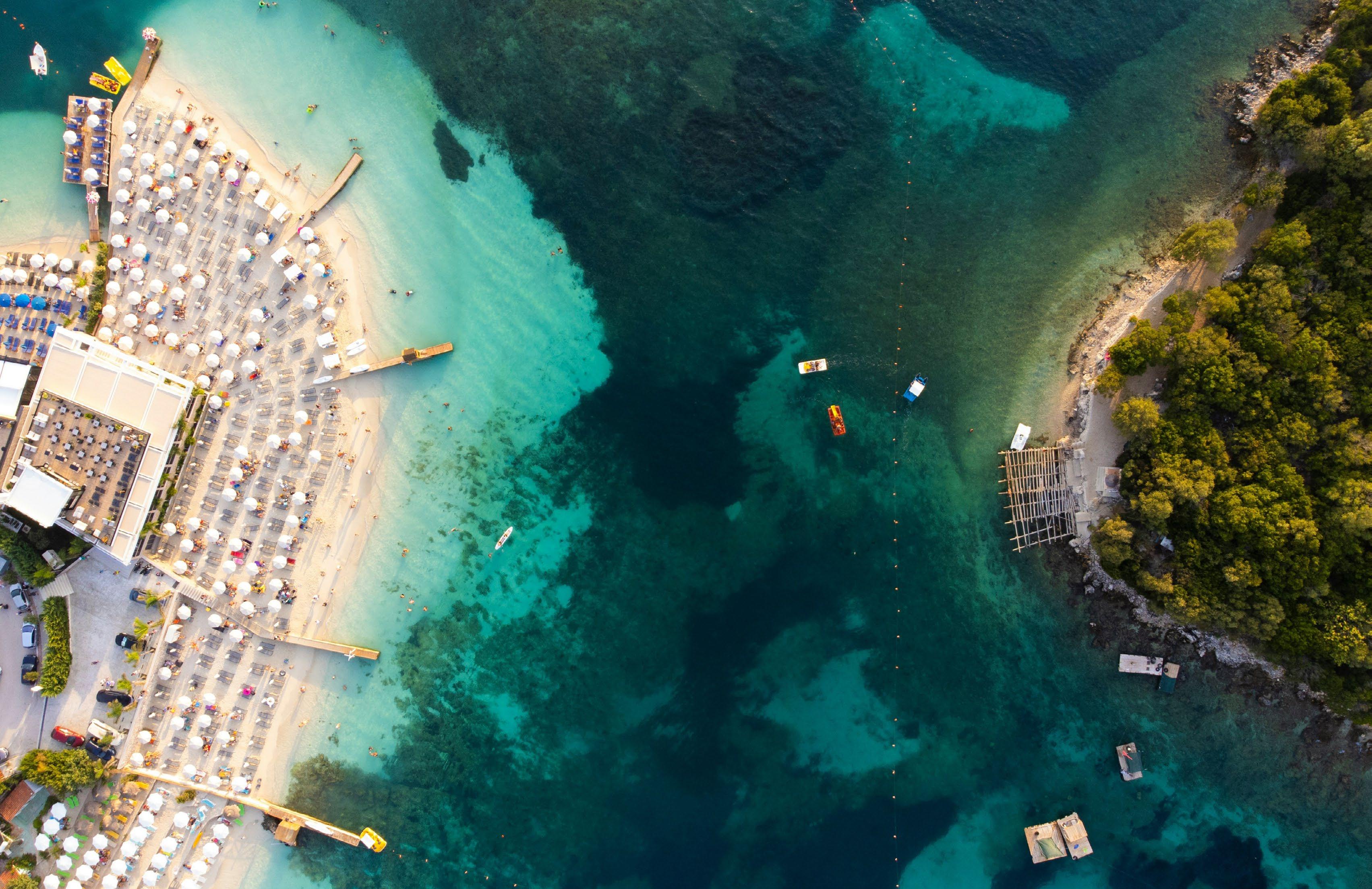

30 JP TRAILBLAZING MAGAZINE 31 JP TRAILBLAZING MAGAZINE

There are also other criteria, which are more specific in relation to the documents to be filed with the application and which basically deal with the image and financial integrity of the investor. More specifically, the applicant shall not be under bankruptcy proceedings, nor subject to forced liquidation or administration orders by the court or any similar procedures. Also, the applicant shall not have been convicted by a final court decision for criminal offenses and shall have fulfilled tax obligations in compliance with Albanian legislation or applicable provisions in their country of origin.
So, overall, there is a checklist to be completed by the applicant aiming to obtain such status, in order for them to benefit.
That is all?! It sounds a little easy for anyone to apply for such status. Do you see such provisions serving as a motor to generate foreign investors in tourism? Well, as easy as it may sound at first, the decision elaborates in further details the criteria to be met by the applicants. So, the above-mentioned aspects, are just the beginning.
The decision has made sure to set up a small initial bar to be passed by any applicant when applying. That is the application fee. Upon submission of the application, the applicant shall pay an application fee of approximately 2000 EUR for acquiring the special status of investor status in a 4-star accommodation structure and approximately 3000 EUR for acquiring the special status of investor status in a 5-star accommodation structure.
Furthermore, the applicant must submit a technical project concerning the accommodation structure, comprising of
an architectural project, accompanied by a cost estimate, schedule, phases, and deadlines for investment realization, information regarding the tourism standards to be implemented, operational plan for the accommodation structure’s management and maintenance, etc.
Also, in the end, if the applicant is given the special status, prior to signing the agreement on granting such status, the investor must secure an insurance policy, serving as a guarantee for state institutions in case of agreement violation. The insurance for 4-star hotels shall be in the value of 240,000 euros, while for 5-star hotels in the value of 450,000 euros.
So, in the end we can safely come to the understanding that such decision can serve as a motor to generate foreign investors in high end brand names in relation to accommodation structures when it comes to tourism.
Ok, but obtaining such status is only the first step. Do you think Albania has sufficient human resources to supply such potential market in tourism in terms of employees and qualified ones at that? This is indeed a topic which in fact needs a lot of attention especially nowadays in Albania. Given the late international media recognition on Albania’s tourism, it is at the same time necessary to focus on the labor market in this regard. We are facing a situation where hotels and other operators in Albania are hiring foreign employees. Such necessity comes because of a lack in qualified personnel in Albania in this area. Therefore, I believe it is safe to say that there is an evident gap in this regard.
As I said, hiring foreign employees is only one solution to this situation. But there
“Lately, we are proud to be also part of Visadb.io, an international platform that makes immigration simple for global citizens and companies”
needs to be an added effort, not only from the government, as regards qualifying the required personnel to fill this gap in the future.
You mentioned the hiring of foreign employees. Is Albania becoming an attraction in general only to seasonal employment, or is this also seen in other types of residence requests as well?
Seasonal employment and employment reasons in general are of course the main reason behind residence permits applications in Albania. However, there are also other motives which are becoming more and more evident by the day for foreigners to come and live in Albania.
For example, Albania is trying to become a hotspot for digital nomads. A remote worker can now live in Albania, rightfully considered as the “Balkan jewel” for the long term and enjoy the beaches, museums, and community. In Albania a digital nomad can find an affordable cost of living, fast and reliable internet, as also a beautiful scenery.
On the other hand, there is also a category of pensioner residence permit. So, foreigners who are already retired in their country of origin can come and live in Albania.
Additionally, also investors aiming to invest in Albania can benefit from a residence permit for such category. There are many reasons why someone might consider investing in Albania, such as the economic growth, attractive investment climate,
competitive labor costs and strategic location.
So, overall, I believe that in terms of legal provisions there are sufficient means to attract foreigners in Albania, be that for investment reasons, or even for living in Albania.
Interesting Eno, seems that you touched on a lot of points. For any of our readers who are currently looking to invest and potentially live in Albania, how can they make sure to follow with the necessary legal requirements?
Well, we at Muja Law are more than accustomed with the implications of the law on foreigners and relevant bylaws and we continuously assist foreigners with such applications and procedures. Lately, we are proud to be also part of Visadb. io, an international platform that makes immigration simple for global citizens and companies. Through such platform we provide our services to clients from all around the world.
On the other hand, we also specialize in corporate law and a great deal of our work includes assisting companies with licenses and other relevant needs that they may have in the Albanian market. Tourism industry is one of those areas where we provide our services.
Therefore, anyone reading this article and looking to invest or potentially live in Albania can contact us at Muja Law by email at the email address: contact@mujalaw.com, or at the phone number: +355692828562. We will make sure to properly address their legal queries and make it as easy as possible for them to live or invest in Albania.
32 JP TRAILBLAZING MAGAZINE 33 JP TRAILBLAZING MAGAZINE
Mastering the Art of Sales Insights from Over a Decade in the Field
By ERIGERS DAÇI
In the dynamic world of sales, success is not just about closing deals. It’s also about building relationships, trust, understanding customer needs, and adapting to changing market conditions. For over a decade, I have been at the forefront of the industry, navigating challenges and embracing opportunities with skill and tenacity.
At the core of my approach lies the art of listening. By understanding clients objectives and concerns, I customize my solutions to meet their unique needs, encouraging trust and loyalty along the way. This commitment to customer-centricity has been instrumental in my success, enabling me to create lasting relationships and drive sustainable growth.


Adaptability is another basis of my sales philosophy. In an era of rapid technological advancement and shifting consumer preferences, I remain agile and responsive, constantly refining my strategies to stay ahead of the curve. Whether it’s embracing new technologies, exploring innovative sales channels, or refining communication techniques, I am always one step ahead.
My journey started a long time ago as a simple salesperson in a retail store. My first steps were not easy as everything I had to learn was new to me. I was coming from a different profession as a musician. I accepted all the challenges, set many goals along the way, and worked hard for each one of these goals. As my experience grew so did
my objective. I started understanding more about sales and the clients, their needs, requirements and also their expectations. I changed the products but never my selling methods, which were based on building relationships, trust and loyalty. These methods have created many great relationships with people that are still my clients today, even
CONTACT ERIGERS at Email: erigers.extra@gmail.com Mob: +355692090617 Real estate beat by ERIGERS
34 JP TRAILBLAZING MAGAZINE 35 JP TRAILBLAZING MAGAZINE
though I have changed the industry of what I’m selling. From a retail store salesperson, I am now a real estate agent. With a database of growing clients, I have begun my journey in Real Estate and I am determined to achieve success in life and as a realtor.
Every day, I continue to challenge myself to grow, learn and become the best version of myself.
But perhaps the most valuable lesson I have learned over the years is the importance of continuous learning and improvement. Sales is a field that rewards those who are willing to evolve and innovate. Whether it’s attending training workshops, seeking mentorship from industry experts, or staying updated on the latest trends, I am committed to honing my craft and pushing the boundaries of what’s possible in sales.
As I reflect on my journey, I am filled with gratitude for the opportunities I’ve had and excitement for the road ahead. In an industry as dynamic and ever-changing as sales, one thing is certain: with passion, perseverance, and a relentless commitment to excellence, success is always within reach.
 With Mr. Kristian Cuku, founder of XTRA Real Estate LLC and co-founder of various startups.
With Mr. Kristian Cuku, founder of XTRA Real Estate LLC and co-founder of various startups.
 By Rudina Hoxha
By Rudina Hoxha
Ambassador STRÖM’s Priority to Support Albania’s Efforts to Become an EU Member
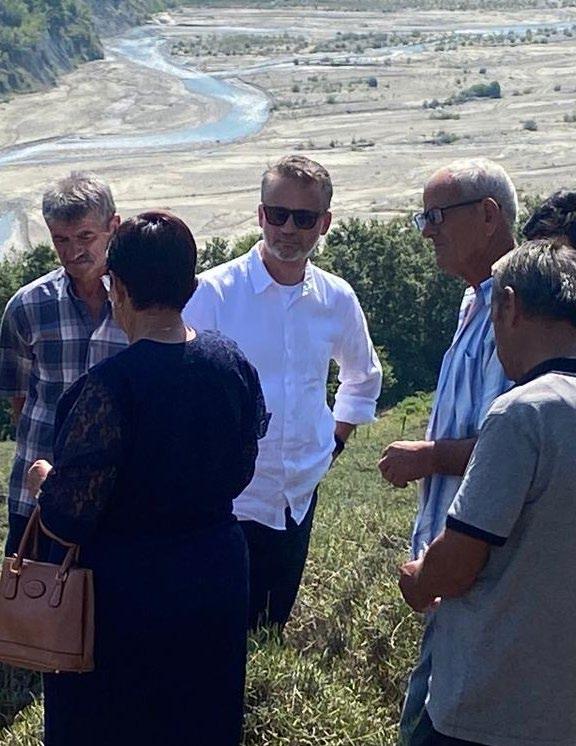
“Sweden and Albania have excellent bilateral relations and good cooperation in multilateral organizations, but the trade and investment figures do not yet reflect this. Approximately 20 Swedish companies are present in Albania, mostly through sales offices, and I would like to see the number grow. The Swedish brand is very strong, and our companies have a good reputation worldwide.”
This is how the conversation starts with the Swedish Ambassador to Albania, H.E. Mr. Niklas Ström who presented his credentials to the President of the Republic of Albania, Mr. Bajram Begaj on August 30, 2023.
Ambassador Ström has enlisted his objectives and has been working on them at full swing. He is eager to see Albania in EU. In this regard, he and his country are trying to boost Albanian businesses to be prepared for entering the EU’s Single Market.
“We are supporting several projects related to competitiveness and innovation, the most significant one being EU4Innovation, worth 11.7 million Euros. The overall aim of the project, which is funded by the EU, Sweden, and Germany, is to develop and boost the Albanian innovation and start-up sector and to assist the Albanian government in achieving objectives related to economic development,” Ambassador underlines for TRAILBLAZING MAGAZINE.
In addition, he talks of all the fields Albania and Sweden cooperate together. “We are here as a dedicated partner to Albania and its people. As a development partner we cannot assist in everything, we have to choose areas where we have the greatest possibility, in cooperation with Albanian partners, to create the best development effect for Swedish taxpayers’ money,” he

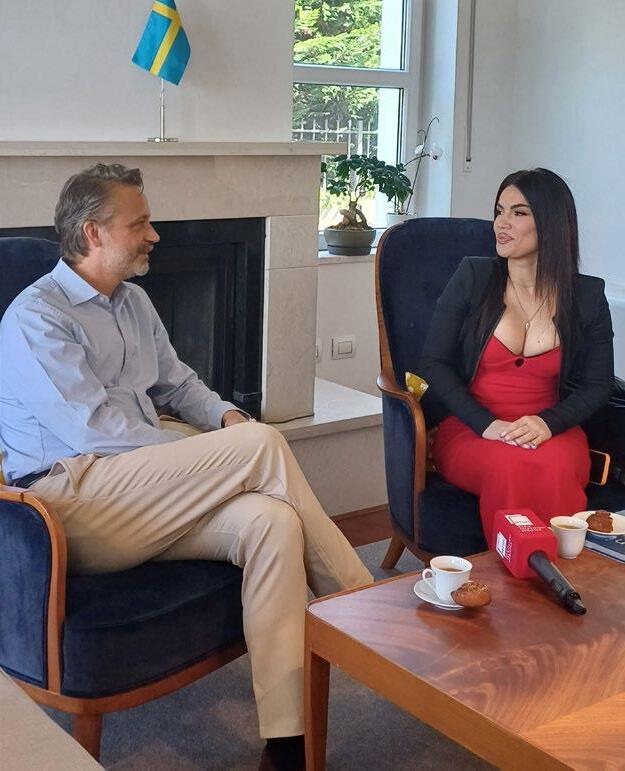 With the Albanian singer, Ms. Besa Kokedhima who represented Albania in Eurovision 2024 in Malmo, Sweden
With the Albanian singer, Ms. Besa Kokedhima who represented Albania in Eurovision 2024 in Malmo, Sweden
DIPLOMACY 41 JP TRAILBLAZING MAGAZINE
Ambassador Ström enjoying Ballakume, a traditional Albanian cookie eaten on Summer Day (celebrated on March 14).
Ambassador Ström (C) during a field trip in Albania
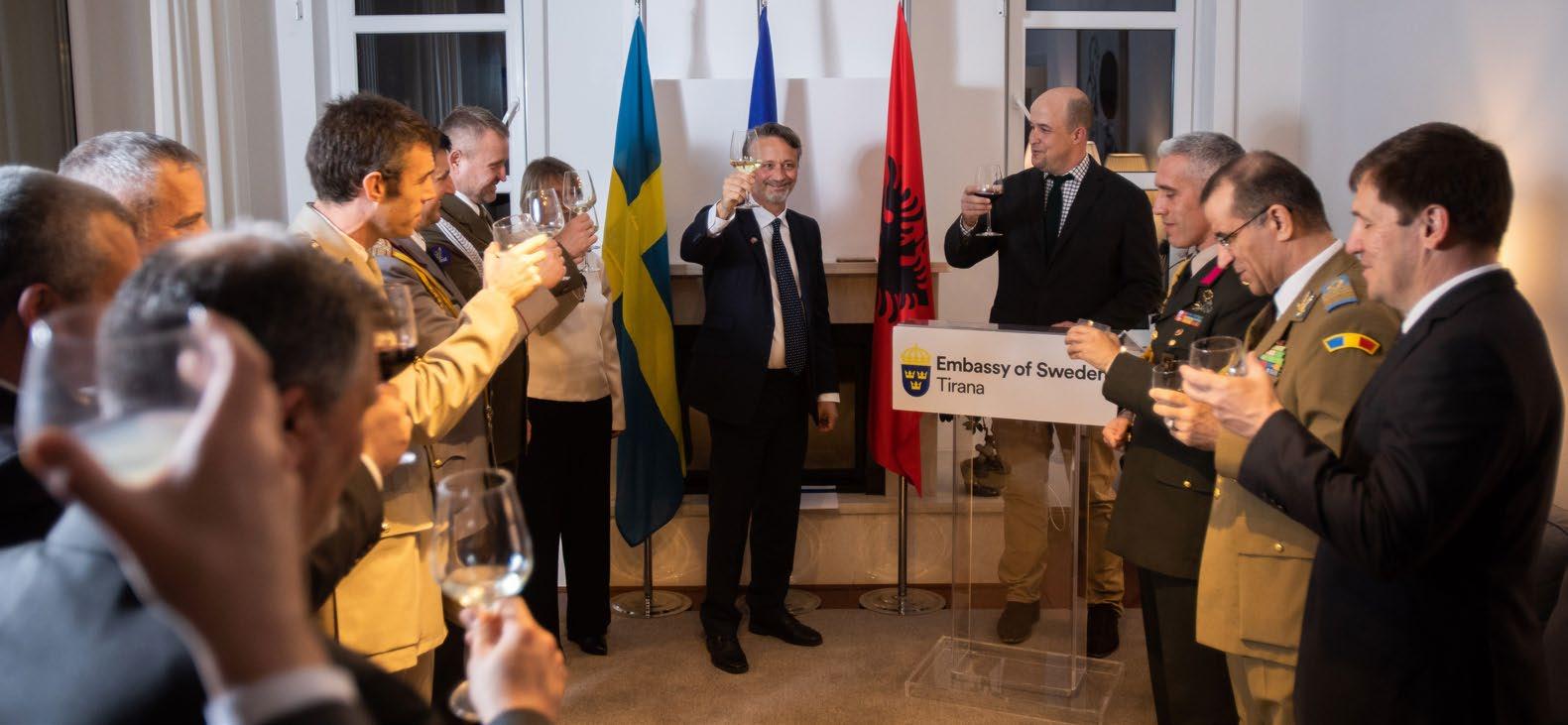
Full interview follows:
As ambassador, one of your priorities is strengthening the business ties between Sweden and Albania. Sweden is also strongly boosting Albanian businesses to be prepared for EU integration. Can you elaborate more on the main directions of this process?
Indeed, one of the priorities of the Swedish government is to boost economic relations between Sweden and other countries. Sweden and Albania have excellent bilateral relations and good cooperation in multilateral organizations, but the trade and investment figures do not yet reflect this. Approximately 20 Swedish companies are present in Albania, mostly through sales offices, and I would like to see the number grow. The Swedish brand is very strong, and our companies have a good reputation worldwide. We have worldleading companies in many areas: IT and telecommunications, gaming and music production, trucks and cars, technology for energy generation and energy efficiency are some examples. I believe that by entering the Albanian market, they could encourage
consumers, other companies and the society to focus more on quality, efficiency, sustainability and innovation. They would also contribute to a modern working culture in Albania.
As you mentioned, we are also trying to boost Albanian businesses to be prepared for entering the EU’s Single Market. We are supporting several projects related to competitiveness and innovation, the most significant one being EU4Innovation, worth 11.7 million Euros. The overall aim of the project, which is funded by the EU, Sweden, and Germany, is to develop and boost the Albanian innovation and start-up sector and to assist the Albanian government in achieving objectives related to economic development. This will increase its competitiveness and also prepare it for EU accession. I have personally met several of the contestants in the project and I must say that it is impressive how many talented and creative young entrepreneurs exist in this country. They need our encouragement!
We are also very interested in facilitating exports from Albania to Sweden. I can see many sectors where Albania is very interesting. You have fantastic agricultural
products and minerals that are of high demand in Sweden, for example. We are supporting projects that aim at strengthening the export capacity in the agricultural sector. One initiative helps farmers of medicinal and aromatic plants (such as lavender, tea, and herbs) and companies to make the production more efficient, raising their capability to adhere to EU-standards. This is a very nice project that both increases poor people’s income and has the potential to boost Albania’s growth and export performance.
Sweden is very big on sustainability and as an embassy you often promote initiatives related to sustainable living. Do you have any advice to share?
Of course, creating a sustainable environment entails large-scale projects such as organizing proper waste collection, sewage, ensuring a well-functioning and attractive public transportation, and transitioning away from fossil fuels. That is something for the government to deal with, and Sweden is one of Albania’s donors that is involved in reforms and capacity-building for a better environment and sustainability. It is, however, important to keep in mind that ordinary citizens can also make a difference. I have noticed that more and more Albanians have started to incorporate sustainable thinking in their everyday lives. Small things such as using paper bags instead of plastic when shopping help make people more aware of sustainability. The fact that small innovative companies want to reuse material and use residual products also helps contribute to a circular economy, which is great.
Other European countries have had the same environmental problems that exist in Albania today. When I was a young boy, Swedes did not think much about
sustainability or the environment, but since then a generational shift has occurred. Our children were taught to take care of their environment, and now they have grown up and that behavior has become mainstream. I cannot imagine throwing glass in my household trash in Sweden, or leaving the engine of the car running while I run into the store. That is perhaps the key message: Sweden used to have the same problems as Albania, but we overcame them. That means that Albania can overcome them too!
There are good initiatives in Albania to come to terms with the waste problem. The embassy has participated in campaigns where we have gathered with schoolchildren to clean beaches and other areas of natural beauty, and whenever we meet the public, we incorporate a sustainability perspective to our presentations. I think it is vital that children and youngsters are taught from a young age that they should make every effort possible to minimize waste.
Sweden is one of the biggest bilateral donors to Albania, having contributed with over 90 million Euros in the last ten years. In which ways does Sweden support development in Albania? Are you engaged in the area of education?
When talking about donors and development needs in Albania, I think that it is very important to remind ourselves that it is the Government of Albania that has the primary responsibility for the development of the country. We are here as a dedicated partner to Albania and its people. As a development partner we cannot assist in everything, we have to choose areas where we have the greatest possibility, in cooperation with Albanian partners, to create the best effect for Swedish taxpayers’ money.
DIPLOMACY
DIPLOMACY 42 JP TRAILBLAZING MAGAZINE 43 JP TRAILBLAZING MAGAZINE

The four pillars of Sweden’s support to Albania are determined by the Swedish Government’s development strategy. They are:
1. Human rights, democracy, the rule of law and gender equality
2. Peaceful and inclusive societies
3. Environmentally and climate-resilient sustainable development sustainable use of natural resources
4. Inclusive economic development.
There is no support specifically targeting education in Albania. However, we have several ongoing projects where school pupils are involved, such as “Strengthening Democratic Citizenship Education in Albania” which is funded by Sweden and implemented by the Council of Europe. It is important that we teach Albanian students about democratic practices from a young age, but they should also learn about critical thinking and source criticism.
We also have a strong connection with Swedish alumni in Albania. I am very impressed with what they have achieved after their studies, and we regularly organize events together, including conversations with Albanian students. The students get to
learn about how studying works in Sweden and the differences between the Albanian and Swedish educational systems, and the teachers can get inspired to implement new teaching methods in their classes.
I truly believe increased academic exchange between our two countries will ensure that the strong ties our countries have now will remain in the future.
Are there new Swedish brands or investments coming to Albania?
As part of our priority to boost economic relations between our countries, the embassy is in contact with several Swedish companies, including some worldfamous brands, to discuss the benefits and challenges of doing business in Albania. We also see increased interest from smaller Swedish companies. I believe that, slowly but surely, they are starting to realize the potential that this country has. There are several parts of the economy which are fully developed and where they could play a role or opportunities for production in Albania.
As the trend of “near-shoring”, the practice outsourcing tasks to nearby countries, increases, I think all countries of the Western Balkans will become more attractive.
However, we cannot ignore that certain problems exist in Albania which need to dealt with. I am talking specifically about corruption, lack of infrastructure (especially railways), a shrinking workforce, and challenges regarding property rights. Nevertheless, it is positive that the government is attaching importance to improving the business climate, combating corruption and developing infrastructure.
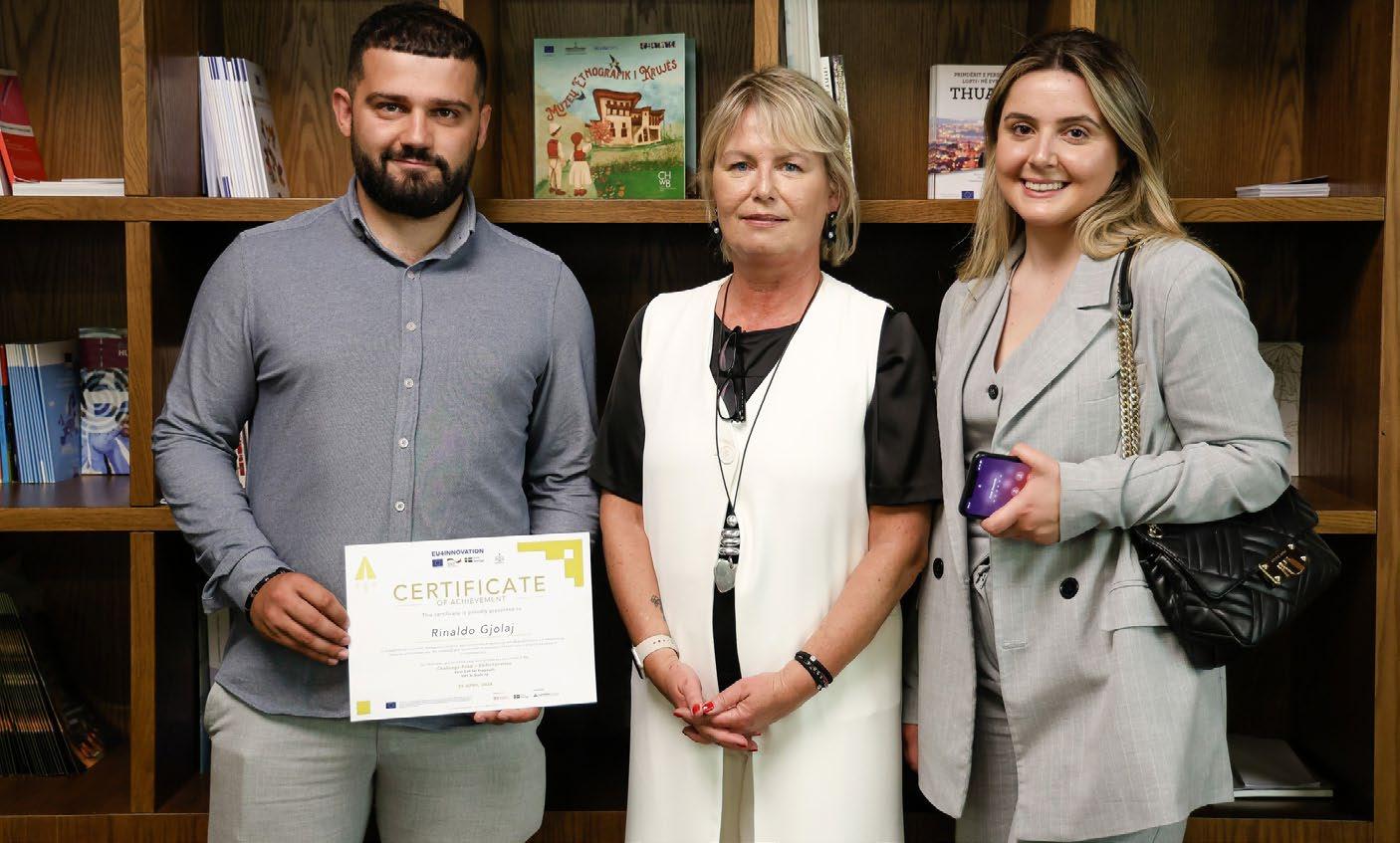
Attracting investments is a win-win scenario in which both the investing company/country and Albania benefit.
Tourism is of course a very important factor for Albania’s future growth and development. Swedish tourists have really begun to discover the country, and I think this also opens up opportunities for new business contacts. Remember that many of those 70 000 tourists that come from Sweden every year are entrepreneurs, investors or employed in companies who import goods to Sweden.
How do you find working and living in Albania? What are your ultimate goals in this tenure?
I love Albania! I had very little experience of the Western Balkans before coming here, but I think Albania is an excellent entry point to the region. I enjoy the Albanian hospitality and the Mediterranean lifestyle, but I am also fascinated to learn about this country
which was a mystery to Swedes when I grew up. I am sure everyone says it, but Albania is truly a unique country and I think you cannot understand it without staying here for a while.
I am also positively surprised by the respect and admiration that many Albanians have for Sweden. We have strong ties, not least through the Albanian diaspora in Sweden, and it makes me happy to see Swedish flags on projects in almost every town I go to. Though the embassy is located in the Tirana, it is only possible to make a true difference by having a presence in all corners of the country.
I believe in Albania and I believe that the country will develop significantly in the coming years. We are already allies within NATO, and I am enthusiastic about our future together as EU member states. My and the embassy’s ultimate objective is to do what we can to support Albania’s quest for integration into the EU and towards EU membership.
DIPLOMACY
Shaking hands with the President of the Republic of Albania, H.E. Mr. Bajram Begaj
DIPLOMACY 44 JP TRAILBLAZING MAGAZINE 45 JP TRAILBLAZING MAGAZINE
Mrs. Petra Burcher, posing with one of the 20 outstanding startups selected from First Call for Proposals of the Challenge Fund April 30, 2024 (Credit: Challenge Fund)
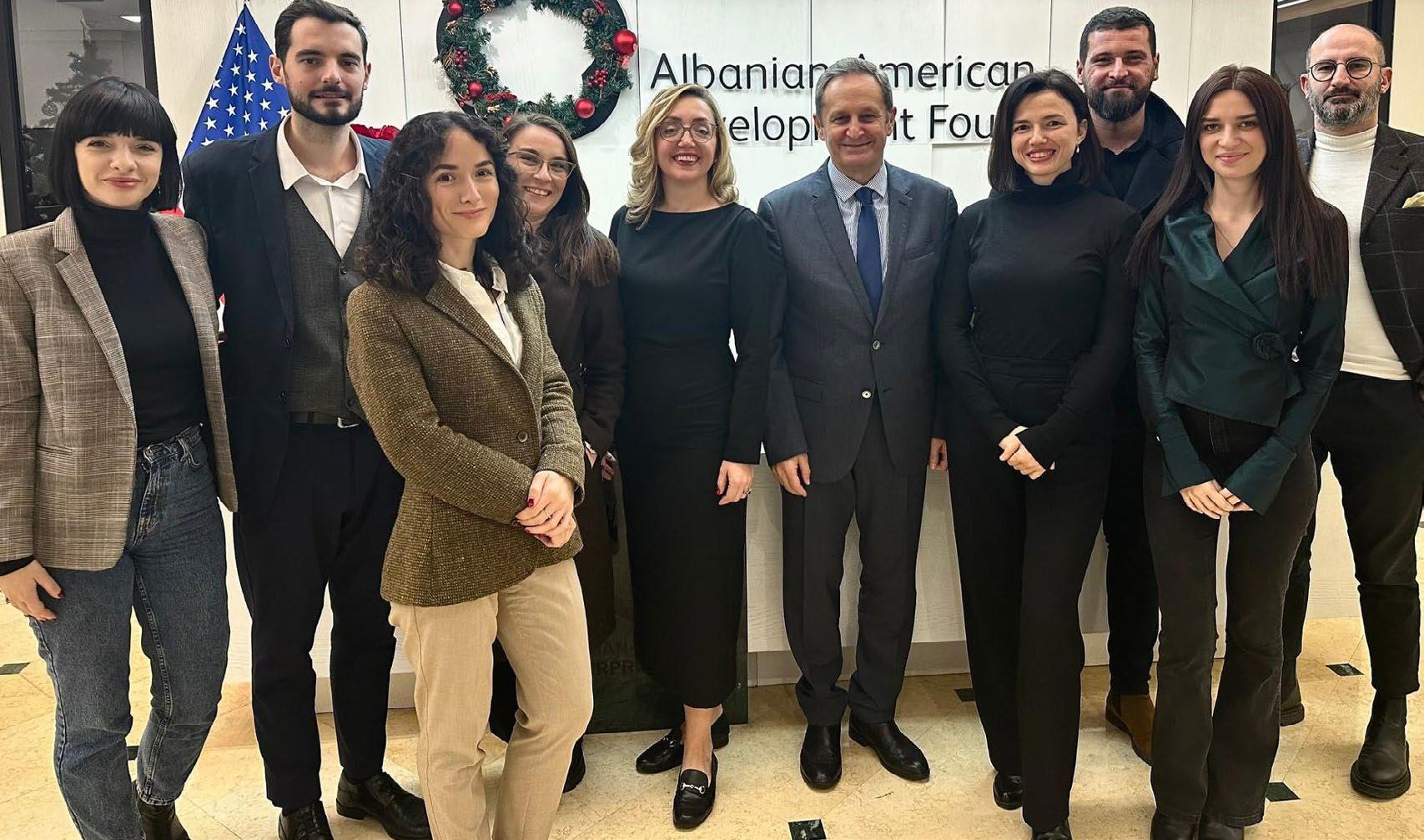
ANILA SHEHI (DOLLANI):
“LEAD Albania Program Aligns with my Principles, where Responsibility, Readiness, and Commitment are the Foundation for a Rich and Sustainable Career”
By Rudina Hoxha
Anila Shehi (Dollani), a LEAD Albania Fellow of 2023-2024 Class underlines in an interview with TRAILBLAZING MAGAZINE that she will continue to apply the knowledge that she gained in the LEAD Albania Program to the process of Albania’s integration into the European Union.
Acting as Advisor to the Albanian Minister of State and Chief Negotiator, she is very happy contributing to the country’s integration to EU.
“As a LEAD Fellow at the Ministry of State and Chief Negotiator, my work involves contributing to the strategic planning and implementation of policies that align with Albania’s goals for European integration. My aim is to facilitate smoother negotiations and help bridge any gaps between Albania’s current policies and the requirements for European integration, by supporting the alignment of Albania’s legal and regulatory frameworks with EU standards,” she says.
Anila stressed that she considered the LEAD Albania Program as “the best mechanism contributing to the essential development of my professional profile.”
“The experience in the LEAD Albania Program aligns with my principles, where responsibility, readiness, and commitment are the foundation for a rich and sustainable career,” she reiterates.
Full interview below:
As a Fellow of the 2023-2024 class of LEAD Albania Program, what initially sparked your interest in LEAD Albania Program and how would you describe your experience with LEAD Albania Program?
When I look back in time, I remember that the first thing that sparked my interest in the LEAD Albania Program was the unique composition of its previous fellows. The involvement of friends and colleagues, who are prominent in their professions, made me reflect and research more about the opportunities this program offered. Meanwhile, with 15 years of experience in public and private administration, I was convinced that I had the professional maturity to compete for the important role of Advisor to the Minister.
So far, my experience in the LEAD Albania Program, both personally and professionally, has been very rewarding. Being involved in dynamic work processes, engaging in various significant initiatives, and meeting young intellectuals, have all been added values to my experience.
The experience in the LEAD Albania Program aligns with my principles, where responsibility, readiness, and commitment are the foundation for a rich and sustainable career.

Why do you believe the LEAD Albania Program is essential for your career and your leadership skills?
I consider the LEAD Albania Program as the best mechanism contributing to the essential development of my professional profile. The opportunity to get to know and interact with high-level leaders is a valuable experience in developing my leadership skills.
In addition to professional experience, another element that makes the LEAD Albania Program essential for my career is the intensive training package. This package addresses multi-dimensional, topical, and complex issues. The combination of theoretical and practical aspects is ideal for enhancing my leadership abilities. Particularly beneficial was the training from the “Center for Creative Leadership,” where I gained substantial knowledge about improving leadership skills, viewing leadership as a social process by creating
46 JP TRAILBLAZING MAGAZINE 47 JP TRAILBLAZING MAGAZINE
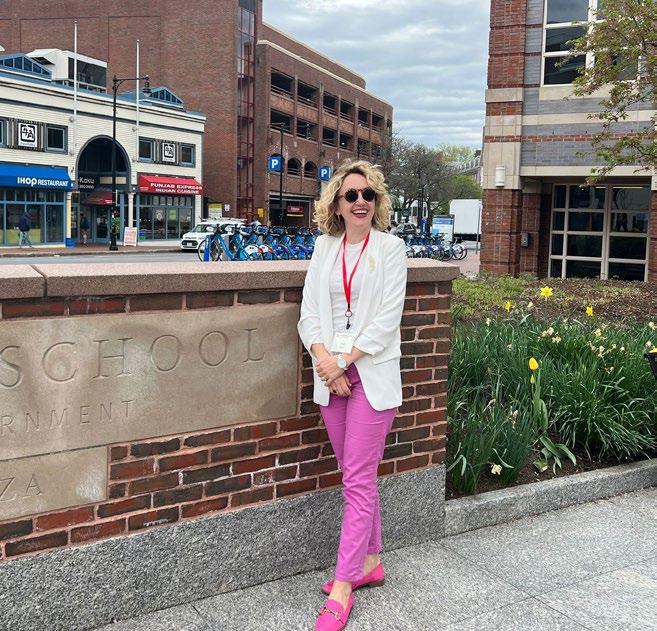
space for open and inclusive conversations and learn how making the success of the collective a personal priority.
It is also important to mention the opportunity offered by the LEAD Albania Program to attend the Executive Program at Harvard Kennedy School. This experience was incredibly valuable and fruitful. I was fortunate to attend the “Negotiation Strategies: Building Agreement Across Boundaries” program, which allowed me to master the strategic, analytical, and communication skills needed for effective negotiation. As an organizational leader, I also acquired tools and frameworks to diagnose problems and build successful coalitions.
Can you tell us a bit about your work and your current engagements at the Ministry of State and Chief Negotiator as a LEAD Fellow? How do you plan to contribute to the European integration of Albania?
As a LEAD Fellow at the Ministry of State and Chief Negotiator, my work involves contributing to the strategic planning and implementation of policies that align with

Albania’s goals for European integration. I am actively engaged in reviewing, analyzing, and assessing legal acts and policy documents, as well as collecting and analyzing both quantitative and qualitative data. My aim is to facilitate smoother negotiations and help bridge any gaps between Albania’s current policies and the requirements for European integration, by supporting the alignment of Albania’s legal and regulatory frameworks with EU standards.
Additionally, I provide trainings on European integration issues, to enhance the skills and knowledge of public servants, ensuring they are well-equipped to handle the complexities of the integration process. Strengthening the institutional capacity is crucial for sustaining the momentum of our integration efforts.
I will leverage my professional experience to advocate for Albania’s interests within the EU framework. By highlighting the progress we have made, I aim to foster positive perceptions and strengthen our position in the integration process. Through these efforts, I am committed to contributing to an
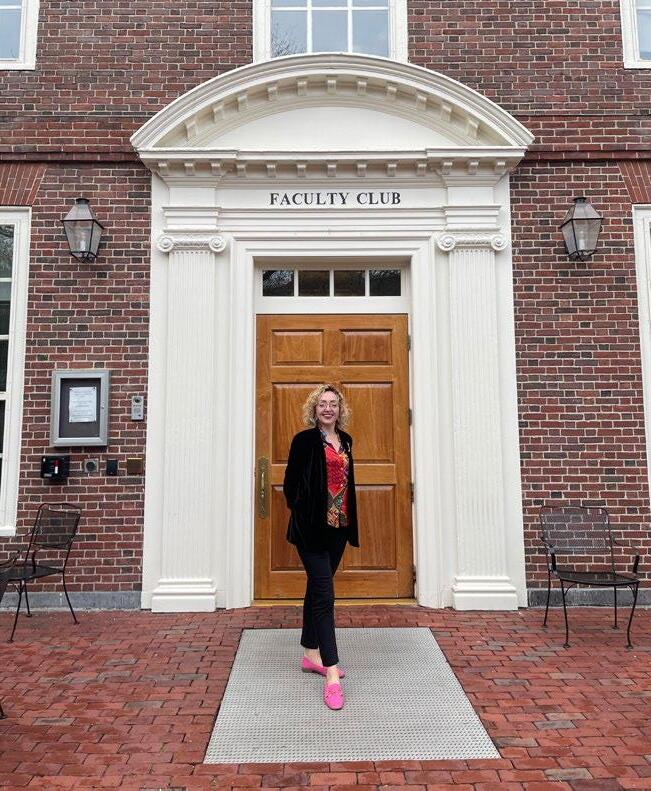
efficient and successful integration process for Albania into the European Union, helping to secure a future of growth, stability, and prosperity for our country.
In what ways is the LEAD Albania Program awakening your leadership potential?
The LEAD Albania Program awakened my leadership potential through exposure to high-level leaders and other high-ranking officials, providing invaluable insights into leadership styles, diplomatic strategies, and decision-making processes. Engaging with complex international issues and real-world problems allowed me to apply my strategic communication skills and test my leadership abilities in practical scenarios. Building connections with influential figures in politics, business, and international relations can open doors for future collaborations and leadership opportunities. The program offered training sessions, workshops, and mentorship opportunities that enhanced my existing skills in negotiation, communication, and strategic thinking. Additionally, participating in such a prestigious program encourages self-reflection and a deeper understanding of your strengths and areas
for improvement, which is crucial for effective leadership.
What is next for you after you finish the LEAD Albania Program?
The closing of the program will mark the end of a very important and meaningful phase in my professional journey. European Integration issues have been a part of my profession for 16 years and will continue to be a priority for me in the future. I will continue to apply the valuable knowledge that I gained in the LEAD Albania Program to the process of Albania’s integration into the European Union.
What can you share with those who intend to apply for the LEAD Albania Program?
I encourage young people to take the step to apply to the LEAD Albania Program, as participating in it provides the opportunity to connect with a large network of young intellectuals from different fields. This network is a valuable asset for anyone committed to developing our country. Exposure to different cultures, viewpoints, and problem-solving approaches can broaden your perspective and improve your ability to lead diverse teams. By participating in the LEAD Albania Program, you can leverage these opportunities to refine your leadership potential and make a greater impact in your field.
Albania is a wonderful nation with excellent young professionals, and collaborating with them on various initiatives is highly rewarding. Seriousness and dedication are the distinguishing features of this program, which remain consistent throughout the entire professional journey in LEAD Albania.
LEADERSHIP DEVELOPMENT
LEADERSHIP DEVELOPMENT 48 JP TRAILBLAZING MAGAZINE 49 JP TRAILBLAZING MAGAZINE
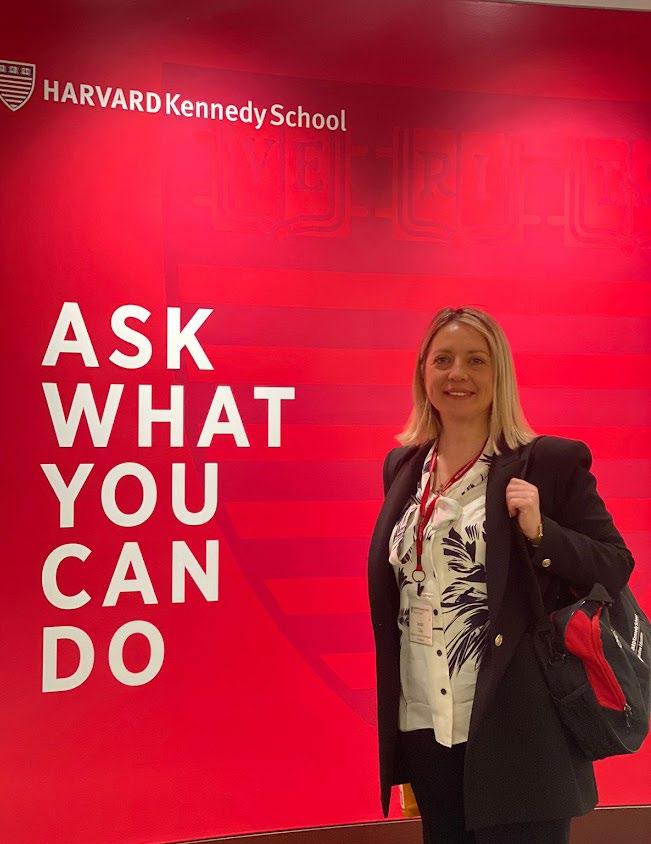
JUNIDA KATROSHI
I NEEDED THE
“RIGHT MOVE” IN MY LIFE and THIS WAS “THE LEAD Albania Program”
By Rudina Hoxha
“The synergy between my role as an advisor to the Minister of Finance and Economy and my participation in the LEAD Albania Program created a dynamic environment for learning and impact, ultimately contributing to both my personal development and the advancement of a greater objective, that of financial literacy and inclusion in Albania.”
This is what the LEAD Fellow 2023, Junida Katroshi stressed among others in her exclusive interview with TRAILBLAZING MAGAZINE.
According to her, the LEAD Albania Program was pivotal in advancing her leadership skills “by providing a robust framework for both
theoretical and practical learning.”
Junida stresses that the LEAD Albania Program is the one which supports leaders in their journeys of continuous improvement by providing the tools, experiences, and support necessary to stay relevant and effective in an everchanging world.
“You don’t just need to be passionate about something, it’s needed to have a strong leadership support. During the program I was happy that at some point, I contributed to the signing of a memorandum of understanding for the improvement of the financial literacy in the vocational education.”
Read her full interview below:
1. What inspired you to embrace the LEAD Albania Program? Why Lead Albania Program and not some other program?
I knew that in that moment of my life I needed to do “the right move” and embracing the LEAD Albania Program was that
LEADERSHIP DEVELOPMENT
51 JP TRAILBLAZING MAGAZINE

move. I was inspired by its unique focus on leadership development and its outstanding reputation. I was informed that the program offered tailored training and experiences specifically designed to enhance leadership skills, which were essential for my further personal and professional growth. The program’s network and mentorship opportunities were invaluable even I had a large network build over 15 years working for the banking system. The access to a network of accomplished professionals and leaders, along with opportunities for mentorship were crucial for my career development.
Moreover, the program’s commitment to public service and governance resonated deeply with my passion to contributing to the financial literacy enhancement of the communities. Personal recommendations and positive feedback from previous participants further reinforce the program’s value, making LEAD Albania a preferred choice over other leadership programs.

2. What do you think is the main benefit a leader will get from attending the LEAD Albania Program?
Let me tell you what I got and I believe it’s what many realized too! This program equipped me with the skills, knowledge, and networks necessary to navigate and address the unique challenges and opportunities that one might encounter when working for the government. I also gained practical insights and experiences that are directly applicable to roles in driving positive change and development in a broader national framework.

3. How was your experience as advisor of the Minister of Finance and Economy in the period you attended LEAD PROGRAM, i.e. 2022-2023?
My experience as an advisor to the Minister of Finance and Economy during the period I attended the LEAD Albania Program was both challenging and enriching. Working closely with the Minister wasn’t easy but it resulted to be wonderful, I was able to contribute to significant initiatives aimed at fostering economic growth and stability, while also navigating the complexities of governmental operations and decisionmaking processes.
That period was marked by substantial professional growth and a deepened understanding of the economic landscape of Albania. The synergy between my role as an advisor and my participation in the LEAD Albania Program created a dynamic environment for learning and impact, ultimately contributing to both my personal development and the advancement of a greater objective, that of financial literacy

and inclusion in Albania. Apparently, it turned to me a personal cause which I intend to push forward.
4. How has the Lead Albania Program helped you advance your leadership skills? How about any aspect of this Program which didn’t go as expected?
The LEAD Albania Program has been pivotal in advancing my leadership skills by providing a robust framework for both theoretical and practical learning. The program’s focus on real-world applications allowed me to directly implement leadership strategies in my advisory role to the cabinet.
However, not everything went as expected. One aspect that didn’t meet my initial expectations was the level of bureaucratic challenges encountered. While the program prepared me for many aspects of leadership, the intricacies of navigating government bureaucracy proved to be more complex and time-consuming than anticipated. This experience, though
LEADERSHIP DEVELOPMENT LEADERSHIP DEVELOPMENT
52 JP TRAILBLAZING MAGAZINE 53 JP TRAILBLAZING MAGAZINE
challenging, ultimately provided me with a deeper understanding of the practical hurdles in public administration and reinforced the importance of patience and persistence in achieving long-term goals.
“Promoting financial education
is a deeply rewarding endeavor
with several significant returns on investment for
me.”
I had a plan when I applied and that was a goal I was carried for a long time! I wanted to make possible the inclusion of the Ministry of Finance and Economy (at that time) in the drafting of the financial literacy and inclusion strategy that the central bank was developing. Coming from the banking sector was very good for me and I was lucky that financial education was in the agenda of the Minister too. You don’t just need to be passionate about something, it’s needed to have a strong leadership support. During the program I was happy that at some point, I contributed to the signing of a memorandum of understanding for the improvement of the financial literacy in the vocational education.
5. Financial Sector is close to your heart. But promoting financial education is your goal now. What will be the return on this investment?
Promoting financial education is a deeply rewarding endeavor with several significant returns on investment for me. Firstly, it allows me to make a meaningful impact on individuals and communities by empowering them with the knowledge and skills needed to manage their finances effectively. This, in turn, can lead to improved financial stability, reduced debt levels, and increased savings and investments, fostering economic growth and resilience at a broader level.
Secondly, the personal satisfaction derived from seeing tangible improvements in people’s financial well-being is immense. Knowing that I have contributed to someone gaining confidence in their financial decisions or achieving their financial goals is incredibly fulfilling. This sense of accomplishment and purpose drives my continued commitment to financial education.
Lastly, promoting financial education enhances my own professional development and credibility in the field of finance. It positions me as a thought leader and advocate for financial literacy, opening up opportunities for collaboration, speaking engagements, and further influence in shaping financial policies and programs. This visibility can lead to new professional opportunities and partnerships, furthering my career and expanding the impact of my efforts.
6. In your view, why is it essential for leaders to learn, re-learn, unlearn and develop continuously? Does the LEAD Albania Program help one reach this objective?
It is essential for leaders to learn, re-learn, unlearn, and develop continuously because the landscape in which they operate is constantly evolving. Technological advancements, economic shifts, and societal changes require leaders to stay adaptable and informed. Continuous learning ensures that leaders can navigate these changes effectively, make informed decisions, and maintain a competitive edge. By re-learning and unlearning outdated or ineffective practices, leaders can

embrace new perspectives and innovative approaches, fostering a culture of growth and resilience within their organizations.
The LEAD Albania Program supports leaders in their journey of continuous improvement by providing the tools, experiences, and support necessary to stay relevant and effective in an ever-changing world.
7. How active are you in the context of LEAD Alumni? In your view, how can this group be kept vivid constantly?
I am actively engaged in the LEAD Alumni
community, participating in various events, discussions, and initiatives that foster ongoing connections and collaboration among alumni. Staying connected with fellow alumni allows me to benefit from shared experiences and insights, enriching my leadership journey and maintaining a strong network.
To keep the LEAD Alumni group vivid and dynamic, several strategies can be implemented. Encouraging mentorship programs where experienced members guide new graduates, initiating collaborative projects addressing community or societal issues, and recognizing the achievements of alumni through awards or spotlight features can foster a supportive and active community.
8. How supportive is your family in helping you implement your projects and achieving your goals?
My family support has given me the confidence and motivation to pursue ambitious projects and overcome challenges.
They understand the importance of my work and their love has allowed me to dedicate the necessary time and energy to my projects. This unwavering support has been a crucial factor in my ability to focus on my goals and achieve meaningful progress in my professional and personal life.
LEADERSHIP DEVELOPMENT
LEADERSHIP DEVELOPMENT 54 JP TRAILBLAZING MAGAZINE 55 JP TRAILBLAZING MAGAZINE
By Donjet Gjoka
As the Iron Curtain crumbled, Europe was poised at the threshold of a new era, with Eastern and SouthEastern Europe particularly on the cusp of monumental change. This region, animated by a domino effect of nations striving for peace, stability, and economic prosperity, embarked on a journey toward integration in a re-unified Europe. This narrative culminated in the historic enlargement of the European Union from 15 to 25 members, a testament to the long and winding road of accession that bridged this division, as the result of the establishment of the Iron Curtain and the Cold War for half a century.
The preparatory phase for the fifth enlargement of the EU kicked off in 1987
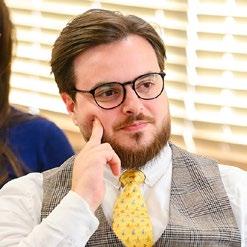
DONJET’s COLUMN
Crossroads of Expansion: the EU’s Enlargement Odyssey
and spanned until 1996, during which 13 countries (10, plus Romania, Bulgaria, and Turkey) threw their hats into the ring to join the EU. The Luxembourg European Council, in its meeting on December 12 and 13, 1997, set the enlargement process into motion, endorsing a tailored approach that allowed each aspirant to advance at its own pace, determined by its readiness. Bulgaria and Romania, having applied in December 1995 and June 1995 respectively, were welcomed as Member States in 2007, while Croatia, applying on February 21, 2003, and officially recognized as a candidate country in June 2004, joined the Union in 2013.
On average, it took a candidate country approximately six years and eight months to

become part of the EU family. While Austria, Finland, and Sweden were quite fast with only one year and eleven months, Portugal and Croatia found themselves in a longer haul, waiting seven years and two months, and seven years and eight months, respectively.
The Western Balkans were initially recognized as potential candidates at the European Council of Feira in June 2000 and later on at the Thessaloniki Summit in 2003, have found their path of accession negotiations increasingly lengthy. So far, Montenegro
56 JP TRAILBLAZING MAGAZINE 57 JP TRAILBLAZING MAGAZINE

has been in limbo for 11 years and four months, Serbia for 10 years and three months, and Albania and North Macedonia for one year and eight months each, while Bosnia & Herzegovina recently receiving the nod to start accession talks. Kosovo is officially considered a potential candidate for membership by the European Union while Turkey, having started negotiations in October 2005, finds itself in a prolonged state of anticipation.
Confronted with the complexities of enlargement, the EU initiated several policy reforms between 2020 and 2023. Political discourse and expert analysis have underscored that further expansion necessitates a revamp of the EU’s budget, policy landscape and perhaps a reevaluation of decision-making processes and institutional architecture. Moreover, the emphasis on a merit-based accession approach remains paramount. The Enlargement Policy, hailed as ‘the most effective EU foreign policy tool and one of the Union’s crowning achievements’, highlights the EU’s commitment to this principle.
Drawing from the lessons learnt of post-Croatia’s accession in 2013, the Commission, on February 5, 2020, unveiled an enhanced methodology for accession negotiations. As Olivér Várhelyi, Commissioner for Neighbourhood and Enlargement, puts it, this new approach is focused on meritocracy, with an increased ‘political steer’ and a concentrated focus on fundamental reforms in rule of law, fundamental freedoms, and the efficacy of democratic institutions, especially within Cluster 1, which is of paramount importance.
As the times called for reforms in the
enlargement methodology, there’s been a concentrated effort to ensure candidate countries benefiting from accession process prior to becoming member states. This includes accelerated integration or gradual accession into EU policies, markets, and programs, alongside enhanced financial assistance for accession countries, conditional on their reform progress, and the design of a tailor-made sanctions mechanism.
One of the cornerstone proposals of the “gradual approach” is access to the European single market, fostering mutual advantageous trade relations between EU Member States and aspirant countries. This strategy aims to recalibrate trade dynamics, particularly given in the EU27’s substantial and growing trade surplus with the six Western Balkan countries. Commissioner Várhelyi has pointed out that bridging the vast economic convergence gap between these regions is crucial for long-term peace and stability.
Despite tangible steps towards refining the enlargement process and ongoing debates around reforming the EU’s decisionmaking machinery to accommodate an expanded membership, the EU faces severe challenges ahead.
The war in Ukraine stands as the most pressing security, stability, and democracy issue confronting Europe, impacting both EU and candidate countries. The war has not only unleashed devastation but ironically opened a window for Western Balkan nations, Moldova, Georgia, and Ukraine to accelerate their EU integration efforts. History often unfolds unexpectedly.
As the EU anticipates new accessions, it must
also grapple with internal challenges that demand urgent attention. The imperative for reform in decision-making processes and financial frameworks cannot be overstated. French President Emmanuel Macron has been a vocal proponent of the view that the European Union must first become independent and economically robust to successfully integrate new members. Similarly, the German government has suggested a shift towards majority voting, moving away from the unanimity, currently required, which has often been a stumbling block at EU summits. Yet, the feasibility of such reforms in 2024 remains an open issue, as transitioning from unanimity, would necessitate an agreement from all member states.
The upcoming EU elections in June cast another layer of complexity. Historically, the voters’ turnout has hovered around the 50% mark, reflecting a degree of apathy or disillusion with the European project. The center-right European People’s Parties is expected to maintain its dominance in the European Parliament, while the far-right also expected to make significant gains.
Commission President Ursula von der Leyen has announced her intention to seek a second term, a bid that requires nomination by the 27 member state governments and subsequent confirmation by the European Parliament. This political maneuver underscores the intricate dance of EU politics, where ambitions and reality often collide.
Anu Bradford, in her book “The Brussels Effect,” astutely observes that the EU thrives on crises, a testament to its resilience and capacity for self-improvement. Yet, a balanced analysis must consider the
looming specter of events that could sway the course of integration.
The accession process itself, more political than technical, highlights the myriad challenges that lie ahead. While candidate countries work to align their legislations with the EU acquis, securing the Commission’s technical recommendation and the political green light from the EU Council at every stage, the journey is fraught with obstacles. Member states have increasingly used the accession process to press candidate countries on bilateral disputes, ranging from border issues and minority rights to historical grievances.
The shift towards a more nationalized oversight of the enlargement policy by member states has introduced a level of politicization that stands in contrast to the successful enlargements of 2004 and 2007, which were largely driven by the European Commission. This change implies a shift from the commission’s decisive role in determining candidate countries’ progress and compliance, toward a scenario where each step requires unanimous approval from all 27 member states.
Looking ahead, the landscape is dotted with nine (10 including Turkey) potential candidate countries eyeing EU membership, reminiscent of the ambitious eastern enlargement. However, the path forward is markedly different from the earlier waves of enlargement, lacking the same enthusiasm and optimism that once characterized European integration. Yet, it’s crucial to remember that for these candidate countries, EU membership remains the ultimate geostrategic goal for the continent, in the absence of a viable alternative.
58 JP TRAILBLAZING MAGAZINE 59 JP TRAILBLAZING MAGAZINE

ENO PECI “In Love with Dancing and Creating. New Cultures Always Lead me to Something New”
By Rudina Hoxha & Jose Pinto
We met the world-known Albanian dancer and choreographer, Eno Peci, and his partner in dancing, Kety Papava in Vienna, Austria. We met at the most acclaimed rendezvous in the heart of Vienna – Sacher Café.
In this exclusive interview with TRAILBLAZING MAGAZINE they both brought us in their artistic world revealing how wonderful and amazing was for them to be in the lead cast in the New Year Concert in Vienna while the projects for them are increasing in number.
For Eno, it was amazing to represent Albania and Austria in this much-admired concert and for Kety Papava, a twin mum from Georgia, dancing with the notable Albanian dancer and choreographer is a pleasure since he knows how to bring the best out of the dancers.
61 JP TRAILBLAZING MAGAZINE

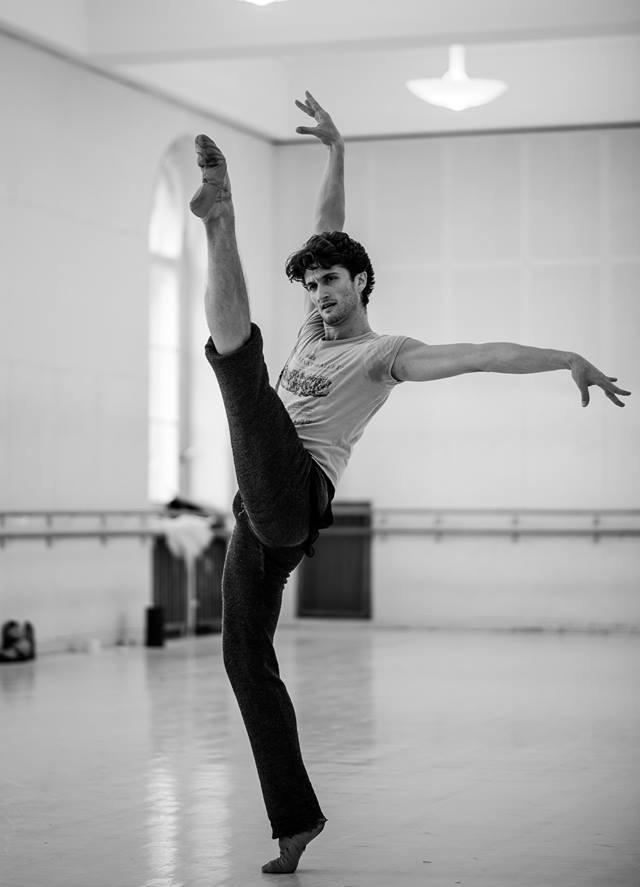
Full interview follows:
Eno, you are in Vienna for 26 years. How has been this time for you?
It has been a long time. I have lived actually more in Vienna than I did in Albania. I left Albania when I was 16. Now I am here for around 26 years. It is amazing. I feel like home in Vienna but my identity is Albanian. This is something that even if I want to forget, it will never get out of my body or my mind. It is something that is inside me. It is in my roots. I like that. I am an Albanian in Vienna.
How are the projects going on?
They are going well. At the moment I am dancing and creating. They are completely two different things. But there are some
connections between them, first of all psychologically, because when I dance, you give your emotions away. The curtains are closed and you feel empty. It feels like you gave something away. After that, you go home and sleep.
When you create, it is something different. Even if the premiere is today and is over, you rethink about it the next day; how can I make it better, what can I change. Because there is no perfection though we look for it all the time. Because we think differently every day. We search for new emotions, new feelings, new creativity. In other words, we are never satisfied.
What inspires you?
Life itself inspires me. The things you have been through, those you are going through


at the moment, the things that connect you with the profession. For me, since I start dancing, I never thought it would everything in my professional and private life. Because it involves you psychologically. Therefore, you understand life better, so it keeps you moving all the time, finding something new, being more social, more open, learning more. It will be something that will never end. You are always searching. As a result, you evolve.
How such great culturally mostly cities like Vienna or Dubai where you have performed have influenced your career?
It has made me rich from the artistic point of view. This has influenced on my artistic directions. Personally, I love the different cultures, languages because you learn more. They bring you new ideas helping
you to think and create. So, it is important to understand and accept. The new cultures always bring something new to you.
Can you talk a bit more on one of your latest projects in Dubai?
It was my first time in Dubai. I went there to present a special project, It was splashed across a full evening at Zabeel Theatre. It was a combination of videos displayed on three big screens and the concept of this video needed to be adapted in dancing. I was coordinating the idea and the concept of this video with the dancing. There was a lot of coordination which made real sense. People loved it. It was something innovative. It was a coordination of dancing with technology.
FAMOUS ALBANIANS ABROAD FAMOUS ALBANIANS ABROAD 62 JP TRAILBLAZING MAGAZINE 63 JP TRAILBLAZING MAGAZINE
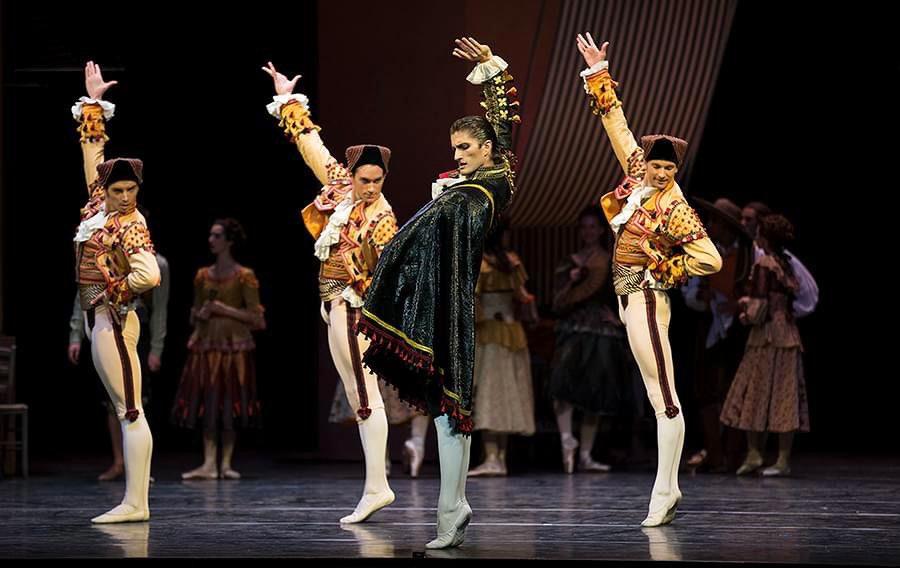
The Albanians all over the world were proud when they saw you in the annual New Year Vienna concert. How can you describe this experience side by side with your dance partner Kety? What did you feel when you thought that all your compatriots were watching you?
The New Year Concert in Vienna is something special, just amazing. It is already a tradition and I have been so happy to represent Austria with its big traditions. It is always breathtaking. For me, it was amazing to dance with Kety because we have danced together before a lot. Sometimes this is very helpful because when you find a good partner in the dancing and the chemistry is there, you don’t need to talk so much. You continue searching more in this artistic direction without talking.
KETY PAPAVA –Principal Dancer in Vienna State Opera
“Such people, who make you laugh and the next moment, they prepare you for the stage, are like diamonds for me.”
Please can you describe yourself and your career here in Vienna?
I am from Georgia. I left my country when I was 9 because of the war there. At that time, my aunt was the prima ballerina of MARIINSKY company. She took me to St. Petersburg and I continued studying ballet at Vaganova Academy. After finishing my studies in this Academy, I was at Mariinsky company for 5 years. I was focused mostly on classical repertoire, so I wanted to try more contemporary ballet, so I decided to send my CV in Milan, Vienna and even in San Francisco. I received an answer from Vienna. It says that there were no places but I could

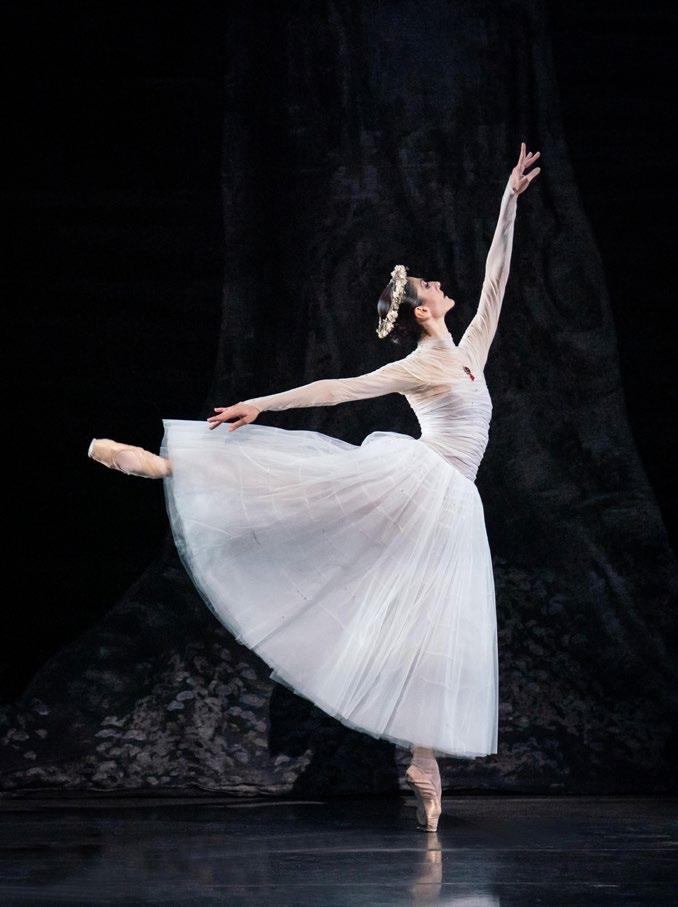
give a try. Luck was with me, I managed to reach a contract. It was completely another work environment compared to Georgia. There were not many performances on my list, so I had time for myself as well. Unlike the directors of Mariinsky company, who did not believe in me, here in Vienna I found a complete support. I worked hard for it. But as I said, luck was on my side.
I was really spotted in Anna Karenina performance and soon after I reached a five-year solo contract.
I can say that in Vienna I really feel like a dancer. I also grew up here. I have my own family too. It is home for me. When I go to Georgia, I feel like a tourist because I left my own country very little. I really love Vienna and I am very happy.
You danced with Eno Peci in the annual New Year Concert in Vienna and both of you got a lot of world attention and fame. What was the experience you had? Was it a surprise or you really expected that given your hard work?
In general, it is so beautiful that this tradition continues and we are always so exciting to be part of the cast and be among the major dancers. So many people can see us. I have friends in Japan, in Georgia, in US, all over the world. So, all of them called me congratulating. It is also fun as this experience includes even filming. Rehearsals took us outside Vienna and we were close to each other spending time and enjoying it. This concert took one week of rehearsals and then 10 days of filming.
I know Eno since 2008. It was his fourth time participating in the New Year Vienna Concert. For me, I could not wait to have Eno on my side as he is able to take the best out of all the dancers he performs with. It
FAMOUS ALBANIANS ABROAD FAMOUS ALBANIANS ABROAD 64 JP TRAILBLAZING MAGAZINE 65 JP TRAILBLAZING MAGAZINE
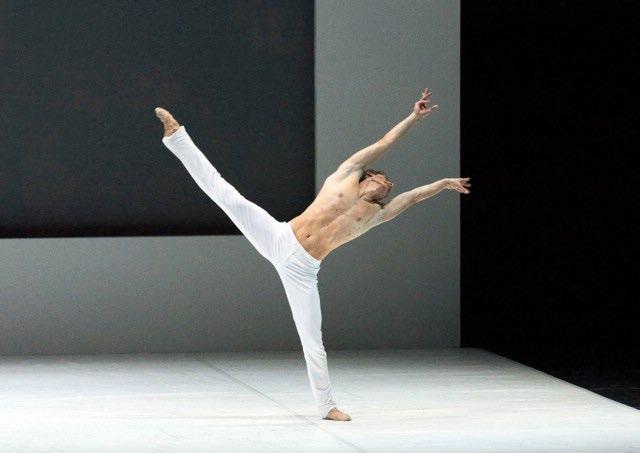
happened that during this performance I was suffering foot pain. And all these jumps were challenging for me. I told to my director that I can jump but I cannot land on my foot as I have pain and he replied: “No problem, you can land on Eno’s legs.” It looked great and none could see that I was in pain. It is amazing and important to understand each other.
How do you see the cooperation with the famous Albanian ballerino and do you have other projects together?
Because I am dancing a lot and many performances are on my list, it is difficult to go on other collaborations outside
the Vienna State Opera. Eno works as a choreographer, so he goes all over to make immemorable pieces. He uses other dancers too. But during summer, I can be part of his choreographies. Each summer we perform together. It is amazing working with Eno because we know each other for many years. I actually know how he breathes when he dances with me (smiling!)!
We got to know each other in the Vienna State Opera. When I started to work here, we began dancing a lot together. We were placed together to dance because maybe they spotted the same synergy. Also, we mix the partners but often the chorographers

cast us together. When you find the right partner to dance, we don’t want to change the partner. Otherwise, it takes time to adapt yourself to a new partner. We have a great chemistry together.
Joyful and amazing are our collaborations. Eno is very professional. Also, between the
breaks, he always makes jokes. This is very important because it creates a nice work atmosphere. What we do is already hard, so not taking all so seriously make a big difference in our work. Such people, who make you laugh and the next moment, they prepare you for the stage, are like diamonds for me.
FAMOUS ALBANIANS ABROAD FAMOUS ALBANIANS ABROAD 66 JP TRAILBLAZING MAGAZINE 67 JP TRAILBLAZING MAGAZINE
Art Shorties
This Iconic Italian Food is a Fashion Influencer
Italy is so pasta-centric that it even influences fashion and design. A couple of recent examples:
At the 2023 Fashion Awards held in London in December, actor Anne Hathaway was draped in an elegant, ecru Valentino gown with a tasseled bodice inspired by strands of spaghetti. Hathaway famously told Vogue “I’ve always dreamed of..

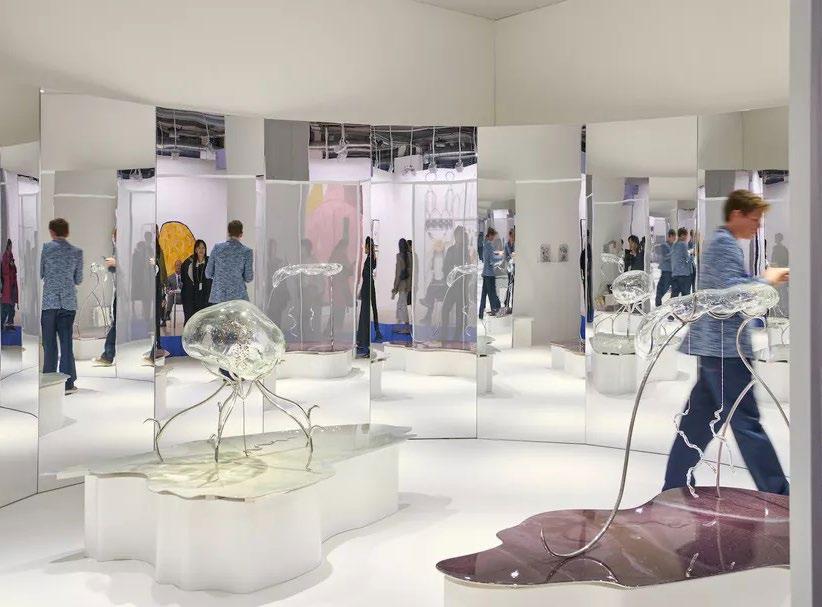
The Best Booths at Art Basel 2024
This year’s edition of Art Basel features 285 galleries from 40 countries and regions, including 22 first-timers. The preponderance of strong secondary-market works by established artists was perhaps the strongest theme throughout the fair, as was the inclusion of works by many artists currently featured in the 2024 Venice Biennale.
READ FULL STORY
READ MORE 68 JP TRAILBLAZING MAGAZINE 69 JP TRAILBLAZING MAGAZINE

Eric Fischl Captures the Secret Side of Hotels
Last March, the artist, Eric Fischl mounted a fascinating new exhibition at Skarstedt Gallery in New York titled “Hotel Stories”, which was on view until May 4th. It evoked a backdrop that many painters, filmmakers, writers, musicians, and storytellers in general have explored in their narratives. Do these rented spaces, separate from…


A Dazzling New Tiffany & Co. Exhibition Is Set to Open in Tokyo This Spring
Creativity and craftsmanship have long been the central pillars of Tiffany & Co
Now, the iconic American jeweler has unveiled plans for its latest exhibition, “Tiffany Wonder,” an immersive experience exploring those unique ties. Slated to take place in Tokyo, Japan, this spring, the show will be on view from April 12 through June 23, transporting visitors on a journey through hundreds of Tiffany masterpieces utilizing legendary diamonds and showstopping colored gems.
The Costume Institute’s 2024 Show Wants You to See,
Smell, Touch, and Hear Fashion
“Sleeping Beauties: Reawakening Fashion,” the 2024 exhibition by the Metropolitan Museum of Art’s Costume Institute promises to be a multi-sensory experience. Approximately 250 objects will be brought out from its collection, their various qualities enhanced onsite technologies.
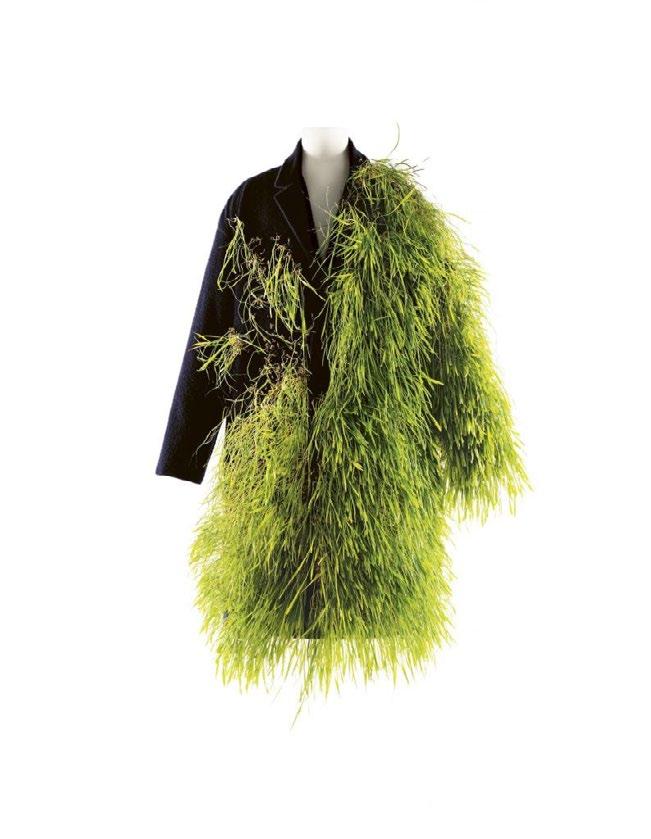
READ THE COMPLETE ARTICLE
READ THE FULL ARTICLE READ MORE 70 JP TRAILBLAZING MAGAZINE 71 JP TRAILBLAZING MAGAZINE
ANDRIOLA KAMBO When Inspired by NENE TOLA for MUZA Competition
By Rudina HOXHA

For Andriola Kambo, Producer of MUZA Competition the third edition of this unique event, will serve as an international platform for the promotion of our youth worldwide.
“This experience is nothing short of extraordinary, a testament to the resilience and creativity of our youth. Working on the Muza Competition is a joyous endeavor that fuels my creative spirit,” she says keeping many names secret.
According to her, MUZA Competition is already a game-changer.
The foundation of this event lays on blending tradition with innovation. “We’re not just creating fashion; we are promoting cultural heritage, tourism, and employment opportunities,” she says.
Full interview follows:
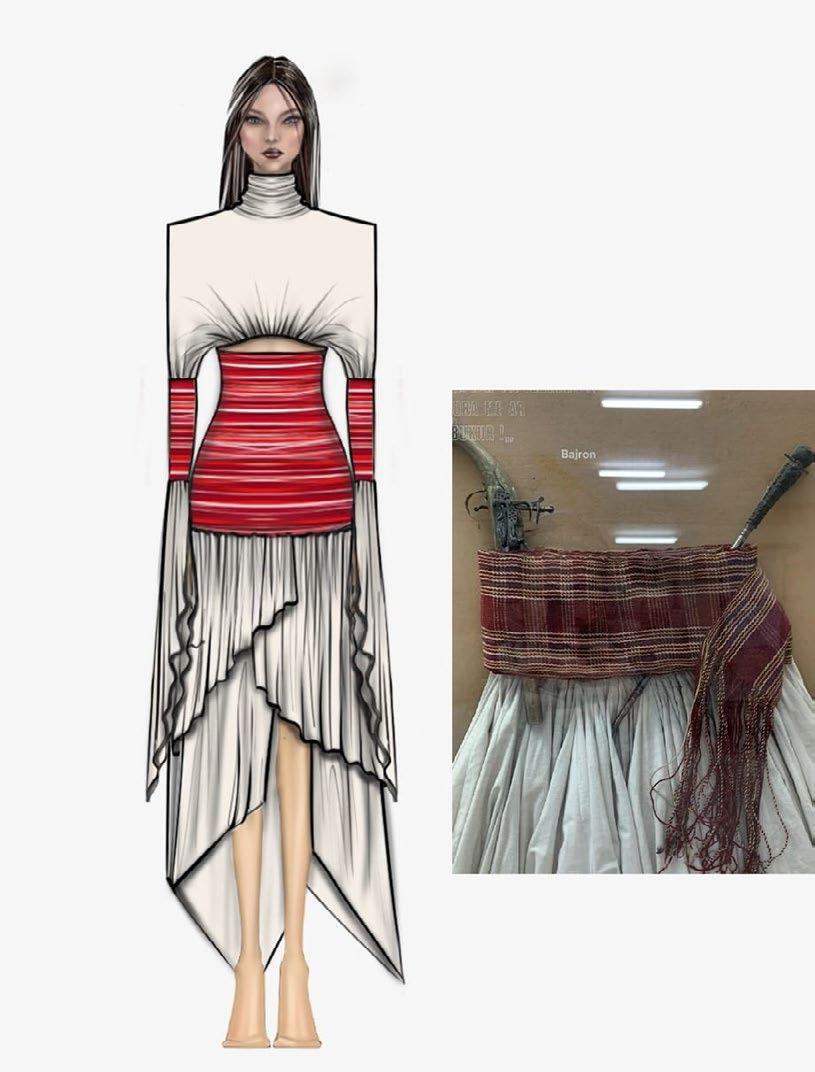



How did you get started and why are you passionate about what you do? Where did you draw the inspiration from?
In my frequent travels, I was fortunate enough to meet Nënë Tola in the municipality of Tuzi, an elderly woman who still kept our cultural heritage alive while working on the loom. She inspired me. It sparked a passion within us to create a platform where young talents could explore this intersection creatively. It was here where I got the idea that a competition like this will bring together three main components of economy: innovation, tourism, and the creative economy.
Having been through the second editions of the Muza Competition and at the doorstep of the 3rd, how do you see this exceptional fashion experience?
As we stand on the threshold of the third chapter of the Muza Competition, I can’t help but marvel at the journey we’ve embarked on. It’s been a whirlwind of creativity, passion, and sheer determination. With each edition, we’ve seen our vision evolve, our designers blossom, and our cultural narrative grow richer. This experience is nothing short of extraordinary, a testament to the resilience and creativity of our youth. Working on the Muza Competition is a joyous endeavor that fuels my creative spirit.
Would you like to tell your audience any more information about your upcoming shows and collaborations?
Our upcoming shows are going to be nothing short of spectacular. We’re weaving together a tapestry of talent, collaborating with international artists, musicians, and visionaries to create an immersive experience that transcends
mere fashion. This year, “Muza” will serve as an international platform for the promotion of our youth worldwide. Two honored and famous artists from USA are going to join the jury as well and we can’t wait to unveil their names.
Can you elaborate on the novelties of the incoming edition of MUZA competition? What brands and designers are participating in this edition and what they represent to you?
The upcoming edition of the Muza Competition is going to be a gamechanger. We’re welcoming a diverse lineup of brands and designers who embody the spirit of innovation while staying rooted in tradition. From bold designs to more traditional ones, each participant brings their own unique flavor to the mix.
Why do you enjoy working on MUZA Competition’s event? What is your favorite part about putting together a show? What do you think our guests can look forward to this year?
What I love most about working on the Muza Competition is the sense of community it fosters. It’s about bringing people together, celebrating our shared heritage, and shining a spotlight on the next generation of Albanian talent. My favorite part? Watching it all come together on the runway, seeing the pride and passion of our designers reflected in every stitch. The project itself is a year of work and dedication to give a magical night, to the young people, our designers, to the public, to the guests, to the jury members who have given their time and insights to this competition and have done a job fantastic with all their dedication, for the team that I lead.
ARTS/CULTURE 75 JP TRAILBLAZING MAGAZINE
Glion, Institute of Higher Education can help you develop yourself and pursue excellence in your life and career. We teach our students the foundations of Swiss hospitality, business and luxury that can help them develop great international careers or start their own business abroad or in beatiful Albania.

Goran Yordanov
“The Students from Albania at Glion Understand Hospitality Very Well”
There are many Albanian young talents we come across in various hotels in the country and abroad who confirm that they are graduates of The Glion Institute of the Higher Education.
Founded 62 years ago, this education institution is specialized in hospitality and luxury management. It offers applied business education, combining academic rigor, hands-on practical skills and professional internships. Ranked among the global Top 5 institutions for Hospitality and Leisure Management and among the Top 5 institutions for Employer Reputation (QS World University Rankings by Subject, 2023), this is the place where 94% of the job-seeking students have one or more job offers on graduation. Obviously, The Glion Institute of the Higher Education’s finest expertise is crafting the graduates to achieve their career ambitions.
Klara Hoxhallari:
“The Glion Opens Up Numerous Career Opportunities for its students after graduation.”
Klara Hoxhallari is one of the Albanian students who finished her studies at the Glion Institute of the Higher Education in December 2018. Upon the completion of her studies, she was convinced to come back to Albania and offer her contribution and knowledges gained to the Albania’s economic betterment. Today she works as Business Development Manager at the European Hotel Management Group, a dedicated team of hospitality professionals passionate to create sustainable and profitable hotels for their partners.
For her, “the Glion experience” was nothing short of transformative and empowering.
“The school expertly combines academic rigor with practical learning, which is one of the main reasons I’d recommend it,” Klara says.
77 JP TRAILBLAZING MAGAZINE
Photo Credits: GLION INSTITUTE OF HIGHER EDUCATION
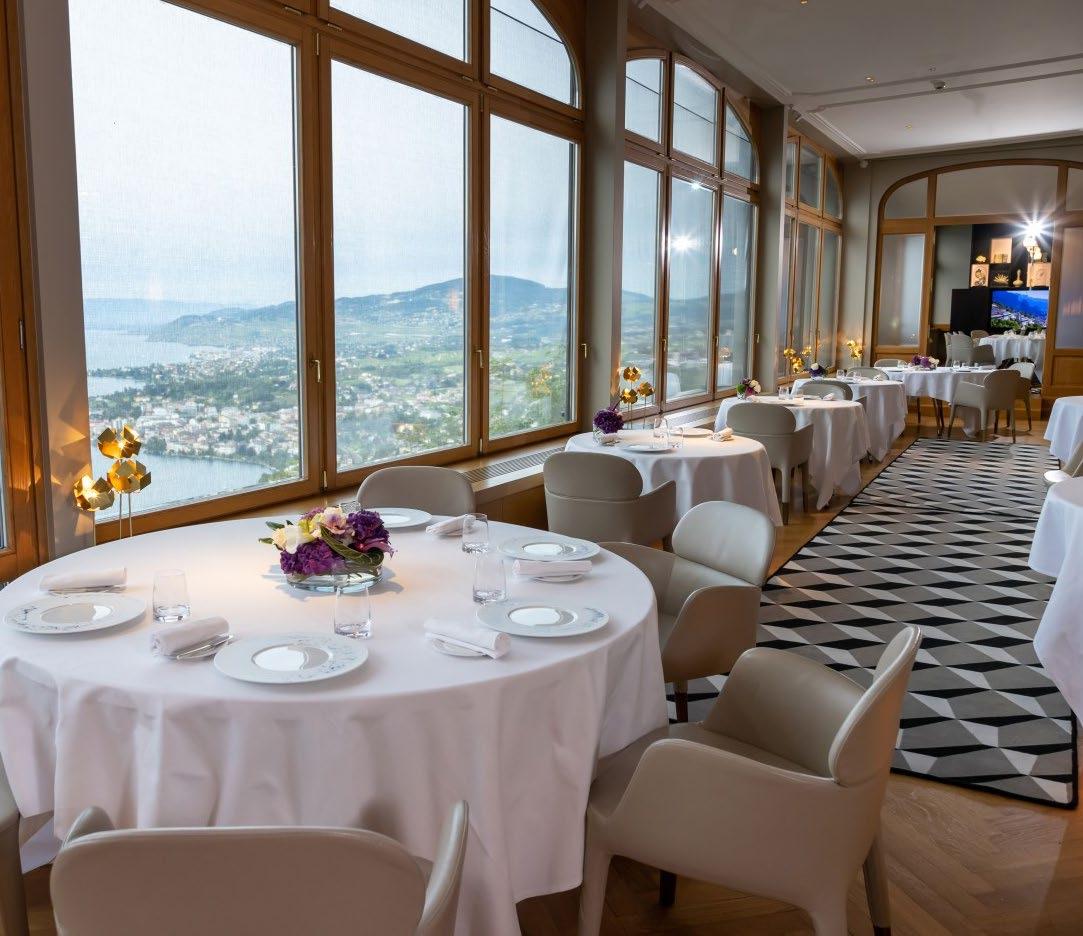
For her, the Glion Institute was a magnet because of “its stellar reputation as one of the top hospitality management schools globally.” According to her, the Glion Institute programs stand for a unique combination Swiss hospitality traditions with American business management techniques.
She describes how this experience was for her. “From the get-go, Glion immerses you in real-world scenarios; in just the first semester, we rotated through various roles in the campus’s restaurants and student dormitories—from kitchen assistant and waiter to receptionist and housekeeper, culminating in a stint as manager. This approach drilled into us the importance of understanding every aspect of the business before leading it.”
The Glion Institute takes good care of the students’crafting of their knowledge and performance. This way, they undergo
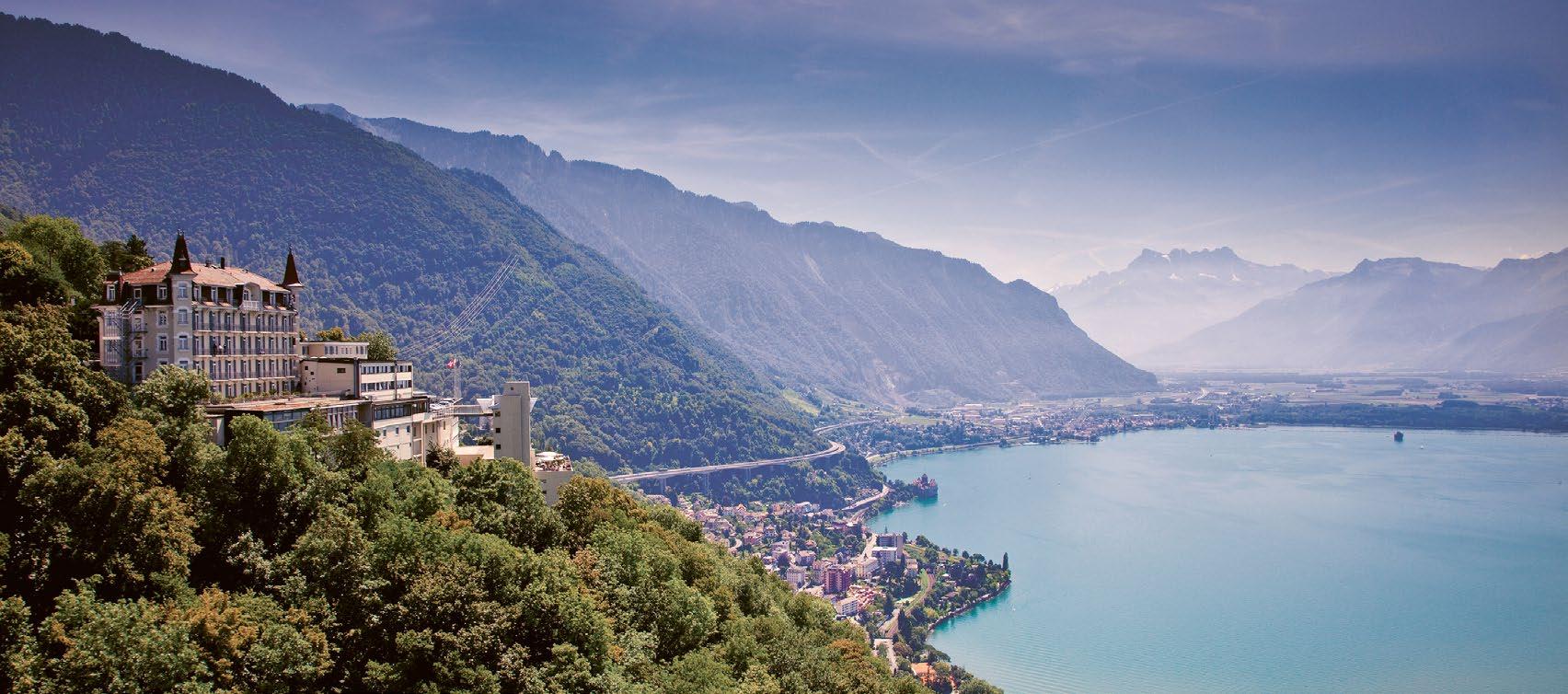
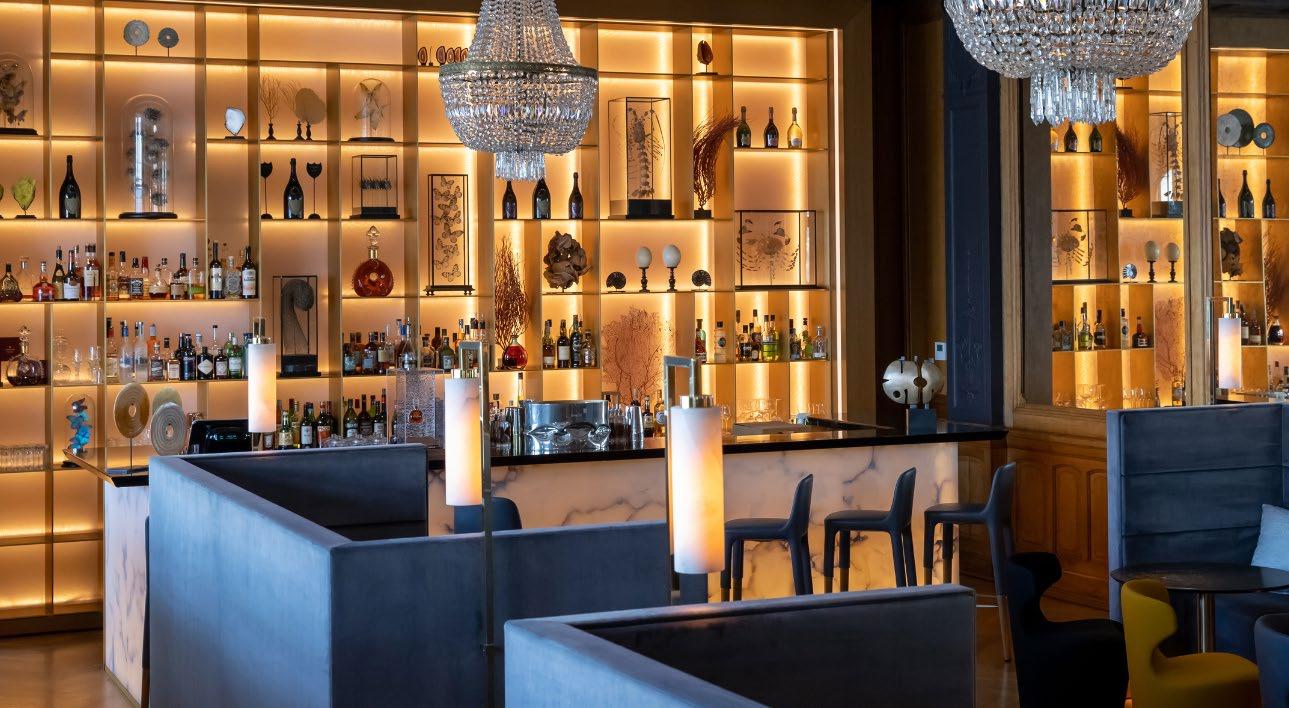

KLARA: “I remember my first time visiting the school. What a view! Set atop a hill overlooking Lake Geneva, and the French Alps on the horizon, I remember thinking my school looks like Hogwarts. As I stepped onto the campus during the open day, older students guided us around. Their warmth and pride in showcasing everything—from the academic programs and dorms to the restaurants, including a Michelin-starred one, and vibrant student life—were infectious. I was immediately convinced and eager to begin my own journey at Glion.”
78 JP TRAILBLAZING MAGAZINE 79 JP TRAILBLAZING MAGAZINE
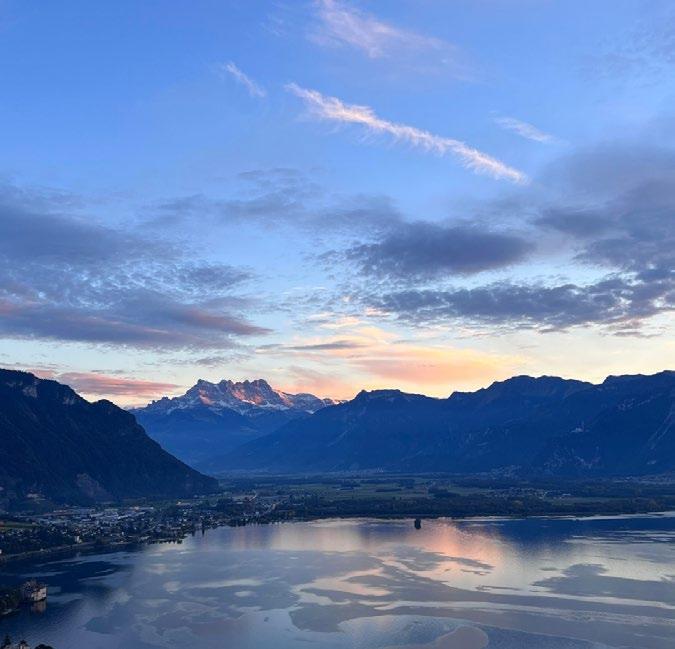
exciting internships and other hands-on experiences. “Glion required us to complete two six-month internships, which could be undertaken anywhere in the world, thanks to its vast network of branded hotels. I spent my first internship in Hong Kong at the W Hotel, and it was one of the best experiences of my life,” she states, adding “My second took me to Barcelona, where I worked with an online travel agency. Each position tested and honed different skills, preparing me thoroughly for a dynamic career in hospitality.”
Klara has always believed that the best education involves hands-on experience.
Goran Yordanov:
“Glion and our exceptional campuses also appeal to Albanian students.”
Goran Yordanov, Regional Director for Central Europe and Nordics at Sommet Education shared with TRAILBLAZING MAGAZINE the numbers of the Albanian students studying in the Glion Institute.
“We looked at our statistics and we can say that over the past 10 years we have always had Albanian representation at
Glion, whether it is a Bachelor’s degree or Master’s degree candidate, every year we have had a few students from Albania,” said the highly experienced sales and marketing professional with over 20 years of work experience in the hospitality industry.
He underlines that speaking with some of the Glion lecturers, he has received positive feedback and that “usually students from Albania understand hospitality very well. The strong development of the tourism industry in the country has helped candidates understand the importance and basic ingredients of delivering excellent experiences and service.”
In your surveys, why have the Albanian students chosen The Glion Institute? What have they appreciated more in this School?
Students choose Glion for similar reasons, regardless of their country, usually it is the international atmosphere, great internship and work opportunities after graduation, last but not least the great lecturers and teaching approach that Glion has to offer. We focus the programs on practical learning, skills and knowledge that you can apply immediately in your life and in your professional deveopment. The great reputation of Glion and our exceptional campuses also appeal to Albanian students. After all, Switzerland is well known for the high quality of life and education.
What would be your invitation to the prospective students from Albania and the Balkans in this School?
I believe that education is the single best

investment that you can make for your future. Glion, Institute of Higher Education can help you develop yourself and pursue excellence in your life and career. We teach our students the foundations of Swiss hospitality, business and luxury that
can help them develop great international careers or start their own business abroad or in beatiful Albania. The tourism will be florishing in your contry in the coming years and studying at Glion could help you stand out and make a difference.
EDUCATION
EDUCATION 80 JP TRAILBLAZING MAGAZINE 81 JP TRAILBLAZING MAGAZINE
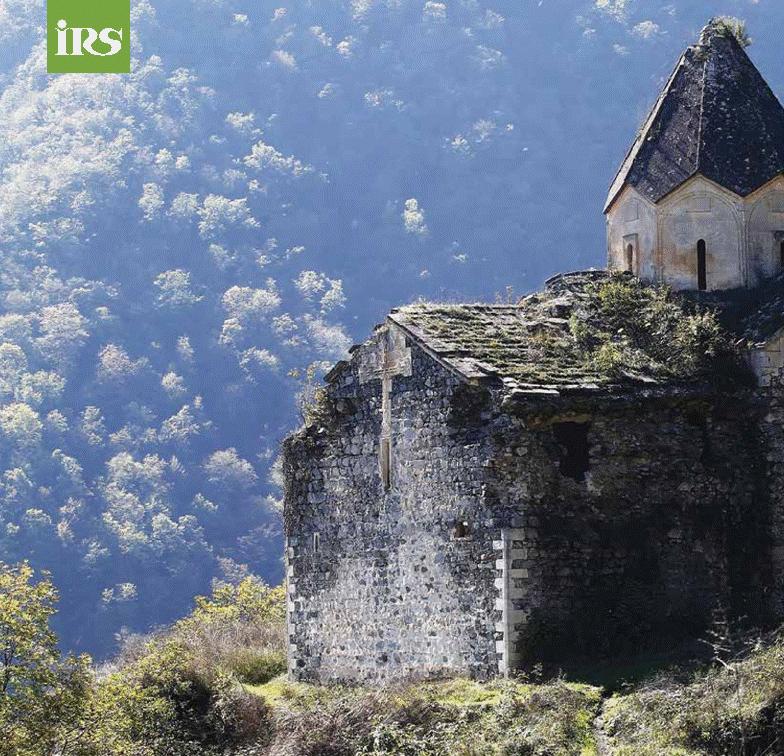 By Naziya MAMMADOVA SOURCE: IRS Heritage
By Naziya MAMMADOVA SOURCE: IRS Heritage
Shrines of Caucasian Albania in Karabakh
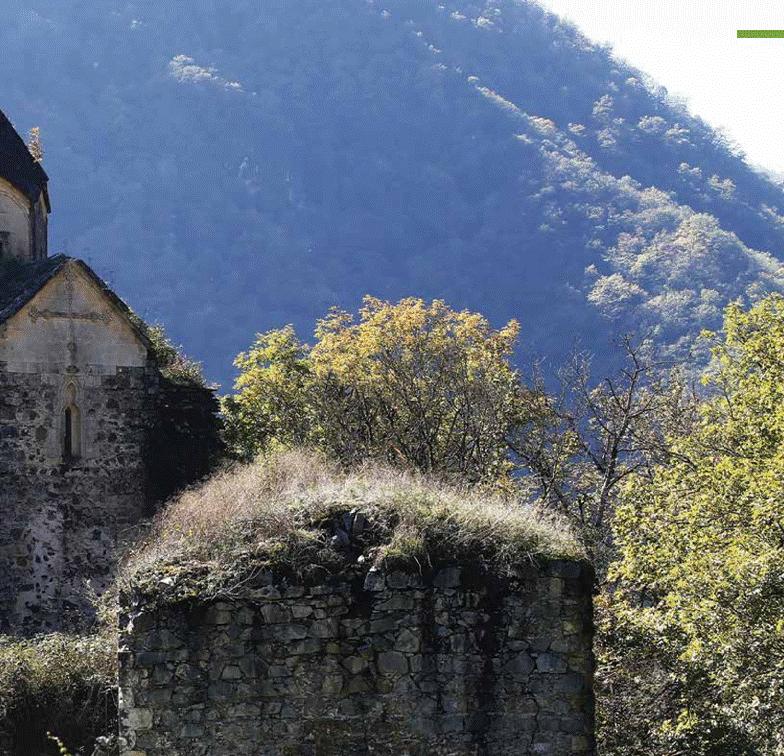
Falsification of history for the sake of political interests is widespread in Armenian historiography. The efforts aimed at politicizing and distorting history include religious misrepresentation of the architectural monuments of Caucasian Albania.
Armenian scholars have been seeking throughout decades to prove the unscientific theory suggesting that the unique architecture of Caucasian Albania was the outcome of Armenian architects’ activity.
This is an integral part of an extensive and longterm campaign aimed at
Albanian Church near Aghdara settlement of Azerbaijan’s Tartar district
82 JP TRAILBLAZING MAGAZINE 83 JP TRAILBLAZING MAGAZINE

“Armenianizing” the historical and cultural heritage in the vast territory of the South Caucasus, including the previously occupied Azerbaijani land.
The falsification of the Christian architectural monuments of Caucasian Albania has been carried out by pursuing so-called “restoration”, forging various inscriptions, replacing symbols, applying special sacred identification marks and “khachkar” crosses to monuments, etc.
It is worth mentioning that any attempts to falsify monuments of material culture in an occupied territory completely run counter to the principles of international law, including the 1954 Hague Convention

for the Protection of Cultural Property in the Event of Armed Conflict, the 1970 UNESCO Convention on the Means of Prohibiting and Preventing the Illicit Import, Export and Transfer of Ownership of Cultural Property, etc.
Caucasian Albania, which occupied a significant part of the territory of presentday Azerbaijan and a part of the Armenian territory, existed from the 4th century BCE to the 8th century CE. This state stood out for a high-level development of material and spiritual culture, including construction, architecture and artistic crafts. It also played a leading role in the spread of Christianity in the Caucasus region.
The history of Christianity in Azerbaijan dates back to the 2nd century. Saint Elisha, a disciple of Syrian Apostle Faddei, is considered to be the first Christian preacher in the region. Urnayr, an Albanian king, proclaimed Christianity as the state religion in the early 4th century. The historic Aguen meeting, convened in the 5th century by Albanian king Vachagan III, was instrumental in passing this decision.
The Aguen canons comprised of 21 clauses, have remained to date. It is a written historical monument that contains valuable data on issues pertaining to Christianity, the clerical structure, as well as the social system of Caucasian Albania, relationships among the classes and the country’s legal system. In particular, the Aguen
canons reflect the process of asserting the independence of the clergy and church and its gradual strengthening.
According to the Aguen canons, the hierarchy of the Albanian church was headed by the archbishop or the Catholicos. Unlike the Armenian catholicoi, Albanian ones were ordained by Albanian bishops. The Catholicos was elected at a council meeting attended by the king, princes and noblemen, as well as representatives of each diocese. As a rule, an influential senior representative of the clergy was elected to this position.
General Christian norms and special rules
84 JP TRAILBLAZING MAGAZINE 85 JP TRAILBLAZING MAGAZINE

served as sources of canon law for the Albanian church. The norms of ecumenical councils, edification of the apostles and senior clergymen were deemed mandatory and common for all Christian communities. These principles, which were mainly of dogmatic and organizational nature, defined the clergy’s competence and the responsibilities of believers.
From the 4th century, the Albanian church became autocephalous, i.e. it had its own monastic institution, order of worship and dogmatic principles. The establishment of autocephaly was stipulated by the political independence of the Albanian state and the quest of the authorities, clerics and people for both political and canonical independence.
The existence and activity of Christian temples and monasteries in Caucasian Albania is evidenced by written sources
dating back to the early Middle Ages, in particular, the works of Albanian historians Moses Kalankatuksky and Kirakos Gandzaksky. These sources contain information regarding the churches and monasteries built by Albanian kings and princes in different periods of history. Building churches and monasteries upon the foundations of ancient shrines was a common practice in Caucasian Albania. It is noteworthy that the construction of Christian temples was launched following the endorsement of Christianity as the state religion, i.e. from the 4th-5th centuries.
The construction of a church is regulated by certain canons. The composition of the building is developed from the west eastward, heading toward the altar from the entrance. The first room in the building is the lobby. Afterwards, visitors enter the main premises, i.e. the aisle whence one may proceed to the main

room of the church, which has an altar with a throne. The main part of the divine service takes place in this room. The altar room, located to the east of the nave, is covered by an iconostasis and on the outside it is adjacent to apses, i.e. semicircular extensions. There are drums or round-shaped towers with windows above the centerpiece of the shrine to provide lighting. The drums end in a conic or hemispherical dome. Both the porch and the flight of steps may be used as the entrance. Dining halls usually adjoin the main facility. The arrangement of the shrine may include bell towers and chambers. Initially, shrines consisted of a long nave and an apse, which was a semicircular altar room ending at the top with a conch, a shell with a mosaic image inside.
Throughout the 5th–8th centuries the architecture of the Christian East underwent the stages of the emergence
and development of vaulted basilica and cross-domed temples whereby the dome was mounted on a drum supported by pillars. The basilicas, which had a rectangular shape, were divided into several rooms by longitudinal rows of columns.
Along with temples, the construction of monasteries and adjacent facilities
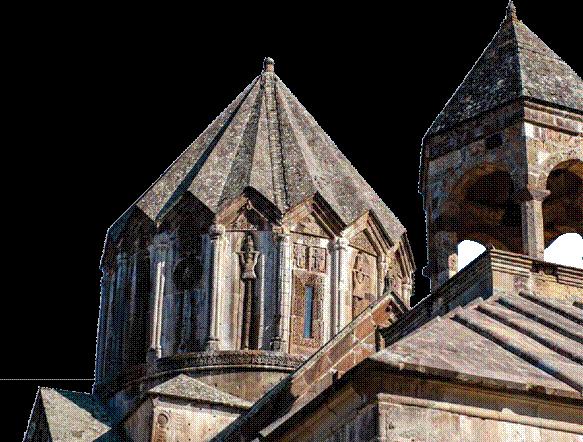
86 JP TRAILBLAZING MAGAZINE 87 JP TRAILBLAZING MAGAZINE

monasteries. Monastic complexes were built in a way that naturally correlated with the surrounding landscape, becoming its inseparable part. A temple conventionally served as the central structure of the monastery complex. Its size prevailed over the rest of the structures. Depending on the local terrain, auxiliary structures were erected, such as refectories, scriptoriums (rooms for storing books and censusrelated activities), bell towers, residential and ancillary facilities. As a rule, the monastery compound was surrounded by a firm stone-made wall, turning into a small fortress.
Basilicas and cross-domed religious buildings, which emerged with the adoption of Christianity in Caucasian Albania, became highly advanced over time in terms of planning and design solutions.
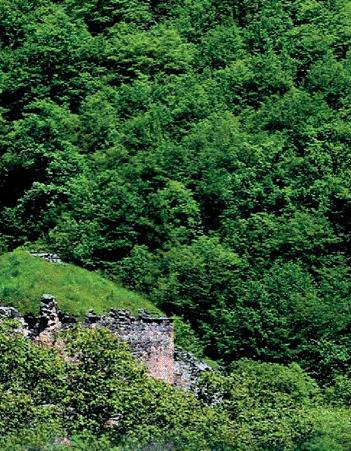
In fact, Albanian churches originate from the early basilica structures dating back to the 5th-9th centuries, which existed mainly in Karabakh and north-western Azerbaijan. The period starting in the 5th6th centuries saw changes in the layout and the volumetric-spatial structure of church buildings in Caucasian Albania, along with an increase in the number of the basilicatype domed structures equipped with deep horseshoe-shaped altar apses. The latter subsequently turned into semicircular apses as their length shortened. The trend toward the prevalence of rectangular shrines led to the creation of multi-nave basilicas.
The cross-domed space planning structure of buildings was widespread in Azerbaijan and the neighboring Georgia, but the solutions applied in numerous locations varied.
The architectural planning and construction techniques applied to build monuments in Caucasian Albania are significantly different than those used on the architectural monuments of Armenia. Medieval Armenian religious architecture could not develop separately from the architectural craft of the neighboring countries, including Syria, Byzantium, Georgia and Caucasian Albania. The links to the monumental architecture of Syria and Byzantium are quite noticeable in the Armenian temple architecture. It is no coincidence that western European scholars interpret Armenian architecture as a branch of Byzantine architecture Moreover, some prominent researchers regard it as nothing more than an imitation of Byzantine architecture. On the other hand, the design featuring four and six-column three-nave basilicas, which is inherent to Albanian temples,
is rarely encountered in Armenian architectural monuments.
The best Christian temple facilities of Karabakh are shining examples of Albanian church-building.
1. The Gandzasar monastery. In 1240, Hasan Jalal, the ruler of the Khachen principality in Karabakh, built the Gandzasar temple in the area of the present-day Kalbajar district of Azerbaijan. An inscription made upon this monument on behalf of the prince regards it as “the throne cathedral of Albania” constructed for the Albanian people. From then onward, the monastery became the residence of the Albanian Catholicos, who also started to be called “Gandzasar Catholicos”
Both Hasan Jalal, himself, and later his descendants, were buried in this monastery in 1261.
From the viewpoint of architectural style, the Gandzasar complex is a crossdome composition with a semicircular apse adjoining the space under the dome from the east. The angular rooms of the twostory building have an elongated shape. The pointed arches of the underdome area were decorated with a plain bowtel at the top. The religious worship symbols and the decorative components of the gables in the northern, southern and western facade of the cathedral are particularly remarkable. Sculptures were placed on a 16-faceted drum with capitals. Wardens would hold models of shrines above their heads near the window on the western side. Ascension was displayed above the western window and there was a figure of Virgin Mary with her baby above the southern window; there were also two female figures on the sides of the window with a bird hovering above them. Moreover, there were two bull heads above the eastern window, an ornament
88 JP TRAILBLAZING MAGAZINE 89 JP TRAILBLAZING MAGAZINE
The
middle nave, covered with a pointed vault, ends in a deep apse, while the lateral naves, covered with a cylinder-shaped vault, end in two built-in chapels. The apse
above the northern window, as well as two birds with outstretched wings next to it. The carvings on the ledges, window frames, in the recess of the eastern wall, as well as on large crosses and portals, were made thoroughly and artistically as well. The shrine is divided inside into eight pairs of semi-columns that cross over into hanging arches. The completeness of the composition and the perfection of the architectural shapes of this remarkable monument is also worth mentioning. Numerous dyophysite elements indicate that the Gandzasar complex refers specifically to the Albanian church, not the Armenian one.
2. Amaras Monastery was built during the reign of Albanian king Vachagan III in the territory of the present-day Khojavand region of Azerbaijan. The facility is comprised of a church or basilica, the underground section, residential and household facilities. The church building has a rectangular design, while the interior space is divided into three naves and ends in an altar apse raised above the floor of the hall and crowned with a semi-dome. The facades of the shrine are lined with well-made stone blocks produced by pure hewing. A small six-column bell tower with
is covered by a semi-dome
a hipped pyramidal top rises above the roof. The doorway is located in the western wall.
3. The Aghoglan cathedral. The three-nave cathedral of the Aghoglan monastery located in the Lachin region was built in the 6th century. The monumental basilica building, made of local grey basalt, naturally suites the surrounding landscape. The middle nave, covered with a pointed vault, ends in a deep apse, while the lateral naves, covered with a cylinder-shaped vault, end in two built-in chapels. The apse is covered by a semi-dome.
The interior part of the cathedral was decorated with fresco paintings. Decorative stone carvings used in the upper tiers of the building were illuminated well from the windows of the higher nave located in the middle. As for its external appearance, the shrine is a conventional basilica with a higher middle nave, as well as clearly and simply designed facades.
One of the distinct features in the design planning is worth mentioning. Powerful columns were set up in front of the main entrances, which is also the case with regard to the Lekit temple and the
Kuma basilica. This pagan feature has been preserved in a number of Christian shrines located in the Azerbaijani territory. However, it is not encountered in the Christian architecture of Armenia and Georgia, which proves that the monument is attributed to the architecture of Caucasian Albania.
4. Khudavang. The Khashavank or Khudavang monastery, an ancient architectural monument of Caucasian Albania in Azerbaijan’s Kalbajar district, emerged in the region in the early period of Christianity and significantly differs from the pieces of religious architecture of the neighboring countries. The facility includes a cathedral church, designed asymmetrically both from the spatial and planning points of view. The bell tower was constructed uniquely on a high stylobate with a semi-circular vaulted passage created underneath. The Albanian patriarchate in Karabakh existed independently until the beginning of the 19th century and had no affiliation to Etchmiadzin whatsoever. In the 6th13th centuries, the Albanian church was based in Barda (Partav) and prior to that it was located in Kabala (currently, Gabala), the capital of Caucasian Albania.
The Albanian Catholicate was located in the Gandzasar cathedral from the 13th century till 1836. Furthermore, Russian Emperor Nicholas I issued a decree in 1836 titled “Regulations on handling the affairs of the Armenian Gregorian Church in Russia,” which included clauses on the abolition of the Albanian Church and the transfer of its entire property, archives, libraries, and dioceses to the Armenian Church. Two dioceses based in Shusha and Shamakhi were established in lieu of the abolished Albanian Catholicate and handed over to
Etchmiadzin’s jurisdiction.
A previous imperial decree issued in 1815 abolished the position of the Albanian Catholicos. The abolition of the Albanian autocephalous church gave an impetus to the “de-ethnicizing” of the Albanians. The process of pursuing either destruction or falsification and appropriation of the Albanian historical and cultural heritage by the Armenian Church considerably intensified as well Henceforth, the Armenian Apostolic Church acted as a political ally of the Russian Empire, which used the “Armenian issue” to assert its geopolitical interests in the region.
The abolition of the Albanian Catholicate in Karabakh became a major event in the history of the South Caucasus. As a result of the measure enacted by the Russian authorities, a significant layer of the material and spiritual culture of not only Azerbaijan but also the whole region was actually erased from existence.
References:
Мамедова Ф. «История албан» Моисея Каланкатуйского как источник по общественному строю раннесредневековой Кавказской Албании. Баку, «Элм», 1977 2. Ахундов Д.А. Архитектура древнего и раннесредневекого Азербайджана. Баку, Азгосиздат, 1986 3. Алиев И, Мамедзаде К. Албанские памятники Карабаха. Баку, Азгосиздат, 1997 4. Гусейнов Р. К истории армянизации и упразднения Албанской церкви Гандзасара // İRS – Наследие, № 2, 2017 5. Есаи Хасан Джалал. Краткая история Албании 1702-1722 гг. Баку, «Элм», 1989 90 JP TRAILBLAZING MAGAZINE 91 JP TRAILBLAZING MAGAZINE
1.
Unveiling Excellence European Inventor Award 2024 Finalists Revealed
Global inventors in the spotlight: 12 teams and individuals across 10+ countries nominated for Europe’s premier Inventors’ Award in four diverse categories: ‘Industry’, ‘Research’, ‘Non-EPO Countries’, and ‘SMEs’
Popular Prize voting starts today for all the finalists
Join us to discover the winners in each category during the award ceremony on 9 July 2024, streamed live online
These finalists and their inventions are taking on challenges that help build more sustainable societies and improve our daily lives, across diverse domains from healthcare to energy storage
Munich, 16 May 2024 – The European Patent Office (EPO) proudly unveils the twelve finalists for the esteemed 2024 European Inventor Award, spotlighting inventors leading technological advancement across diverse domains including healthcare, energy storage, and manufacturing, these innovators stand as models of ingenuity, recognised not only for their scientific and technological prowess but also for the profound societal impact of their inventions.
Selected through rigorous evaluation by a distinguished international jury, these visionary minds will be celebrated at a dynamic hybrid ceremony on July 9, 2024, against the stunning backdrop of Malta. This location serves as the perfect stage to pay tribute to their groundbreaking contributions at the European Inventor Award 2024 ceremony. Global audiences can partake in the excitement through live streaming, ensuring worldwide engagement with this important occasion.
The 2024 finalists
From healthcare breakthroughs to ecofriendly manufacturing, the innovations of our finalists transcend boundaries, tackling pressing global issues headon. Their visionary work encompasses pioneering biotechnological treatments, sustainable energy solutions, and cuttingedge diagnostics, forging a path towards a brighter, more sustainable future.
The 2024 finalists comprise a diverse cohort of visionaries coming from a multitude of countries, including France, Finland, Germany, Iceland, Italy, Malta, Poland,
Sweden, Brazil, Japan and the United States. An esteemed international panel of jury members, including past finalists, drew upon their rich expertise in technology, business and intellectual property to identify the most exceptional entries. Steering this rigorous selection process once more was Prof. Wolfgang M. Heckl, Director General of the Deutsches Museum in Munich, whose leadership ensured the curation of finalists from a pool of over 550 proposals spanning the globe.
The finalists by category are...
Industry
• Icelandic Fertram Sigurjonsson and his team for developing a biotech-derived wound healing product using fish skin. Find out more about the inventor.
• Fiorenzo Dioni from Italy and Richard Oberle from Germany for their advancements in aluminium casting technology that reduces carbon
emissions in automotive manufacturing. Find out more about the inventors.
• Ulf Landegren and Simon Fredriksson from Sweden for their work in molecular diagnostics enhancing disease detection and management. Find out more about the inventors.
SMEs
• Finnish inventors Sirpa Jalkanen and Markku Jalkanen for their work on a targeted immunotherapy to treat cancer. Find out more about the inventors
• French inventors Bruno Mottet, Lydéric Bocquet and their team for their osmotic power generation technology utilising nanostructured materials.
Find out more about the inventors.
• A Polish team led by Olga Malinkiewicz for their innovative thin-film perovskite solar cell printing technology. Find out more about the inventor.

INNOVATION 92 JP TRAILBLAZING MAGAZINE 93 JP TRAILBLAZING MAGAZINE
EIA -03 Landegren and Fredriksson -Inventor with Invention
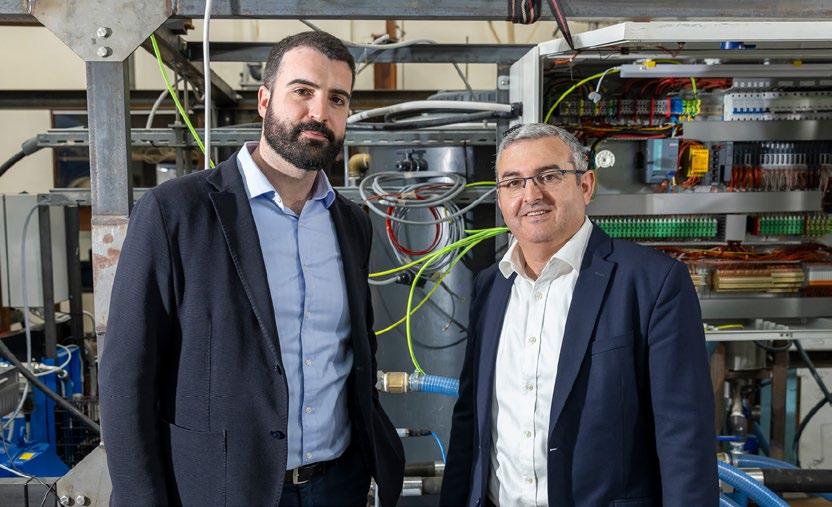
Research
• German Cordelia Schmid, for her AI solutions that enable advanced machine perception that closely mimics human visual interpretation.
Find out more about the inventor.
• Maltese Tonio Sant and Daniel Buhagiar and their team for their sustainable offshore energy storage solution.
Find out more about the inventors
• The French team led by David Devos and Caroline Moreau for their innovative treatments for Parkinson’s disease that offer better management of the disease and fewer side effects.
Find out more about the inventors

Non-EPO Countries
• A Brazilian team led by Fernando Catalano and Micael Carmo for their innovations that reduce noise and carbon emissions in air travel.
Find out more about the inventors.
• American-based David Fattal for his advancements in display optics and software to create glasses-free 3D imaging.
Find out more about the inventor
• Masato Sagawa from Japan for his contributions to developing superior permanent magnets used in various high-tech applications.
Find out more about the inventor.
Lifetime Achievement, Popular Prize and Young Inventors Prize
• From today, the public is invited to engage with the European Inventor Award 2024 by voting for their favorite invention among the 12 finalists for the Popular Prize. Voting will continue until the ceremony day on 9 July 2024.
Celebrating its third year, the Young Inventors Prize spotlights the ingenuity of individuals aged 30 and under whose technical innovations hold promise in advancing the United Nations’ Sustainable Development Goals. This platform underscores the pivotal role of youth in propelling global inventions forward. Additionally, the unveiling of the esteemed Lifetime Achievement category winner of the European Inventor Award 2024 will precede the ceremony by two weeks, adding further anticipation to this momentous event.
About the European Inventor Award
The European Inventor Award is one of Europe’s most prestigious innovation prizes. Launched by the EPO in 2006, the award honours individuals and teams, who have come up with solutions to some of the biggest challenges of our time. The European Inventor Award jury consists of inventors who are all former finalists. To judge proposals, the independent panel draws on their wealth of technical, business, and intellectual property expertise. In 2024, the jury is chaired by Wolfgang M. Heckl. All inventors must have been granted a European patent for their invention. Read more on the various categories, prizes, selection criteria and livestream ceremony to be held on 9 July in Malta.
About the EPO
With 6,300 staff members, the European Patent Office (EPO) is one of the largest public service institutions in Europe. Headquartered in Munich with offices in Berlin, Brussels, The Hague and Vienna, the EPO was founded with the aim of strengthening co-operation on patents in Europe. Through the EPO›s centralised patent granting procedure, inventors are able to obtain high-quality patent protection in up to 45 countries, covering a market of some 700 million people. The EPO is also the world’s leading authority in patent information and patent searching.
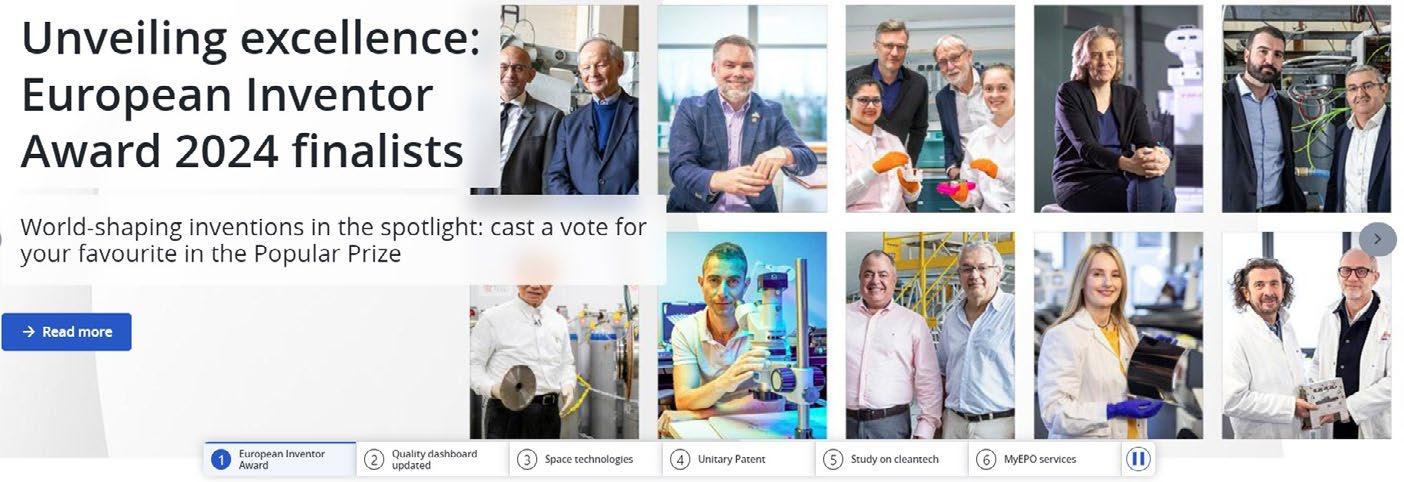
 EIA -05 Sant and Buhagiar -Inventor with Invention
EIA -06 Devos and Moreau -Inventor with Invention
EIA -05 Sant and Buhagiar -Inventor with Invention
EIA -06 Devos and Moreau -Inventor with Invention
INNOVATION 94 JP TRAILBLAZING MAGAZINE 95 JP TRAILBLAZING MAGAZINE
“By Developing Quieter Aircraft, We
 By Rudina HOXHA
By Rudina HOXHA
Able to Meet Customers and Society Needs.”
Would be
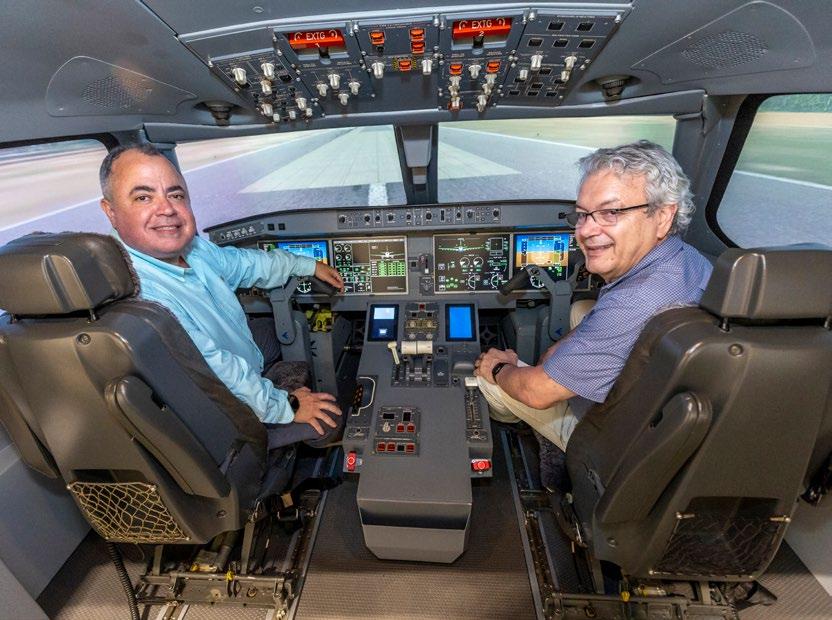

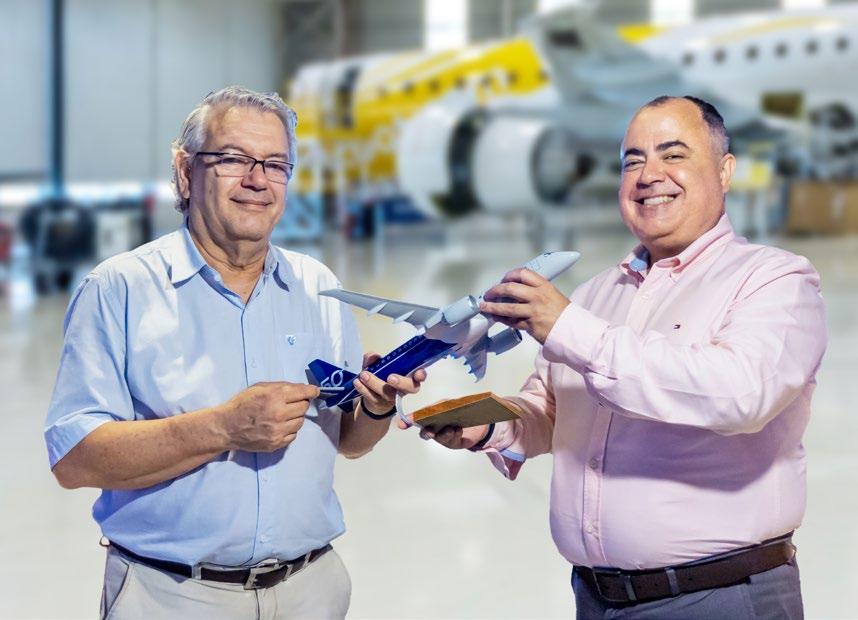
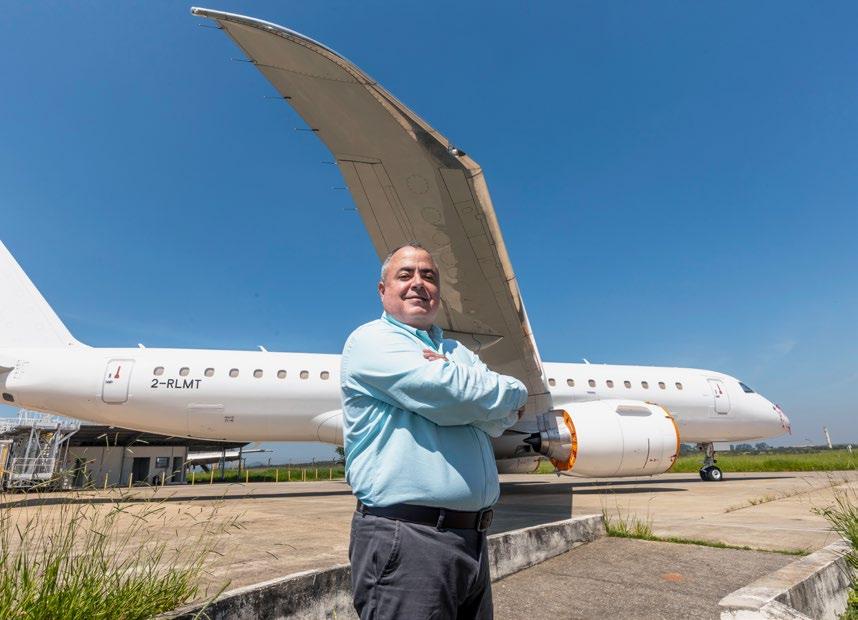
Fernando Catalano, Micael Carmo and team came to TRAILBLAZING MAGAZINE to talk about their invention on developing quieter aircrafts.
“Our inventions positively affect daily people’s lives. It was a result of great successful teamwork with more than 200 researchers, students and specialists involved,” they stated.
This project came as a result of a long and successful teamwork of more than 200 researchers, students and specialists.
“At Embraer, we were so proud to see researchers from Brazil, England, Germany and the Netherlands involved in this project that generated important contributions for the sustainable aviation journey,” they said.
This invention is considered an important step toward the green aviation of the future.
Full interview below:
Can you share with our readers how you came to this invention? Can you share its story?

In the early 2000s, when Embraer was developing a brandnew commercial aircraft family our team was invited to face some technological challenges. One of them was related to noise reduction to meet the authorities’ requirements and increase our product competitivity in strategic markets. By developing
quieter aircraft, we would be able to meet customers and society needs. So that was the rationality behind the “Brazilian Silent Aircraft Program” launched in 2006.
At Embraer, we strongly believe that collaboration between companies and research centers can produce innovations to make people’s lives better and we were so proud to see researchers from Brazil, England, Germany and the Netherlands involved in this project that generated important contributions for the sustainable aviation journey.
The project was able to accelerate the knowledge of highly qualified specialists in the acoustics field and combine other cutting-edge technologies that support the development of a new generation of quieter aircraft, like the Embraer E-Jets E2 commercial jets, that reduced the noise footprint by 65% and also has 25% lower CO2 emissions per passenger than the previous model.
Can you describe your invention in 5 words?
Practical, elegant, sustainable and efficient.
What’s your favorite part of your invention and its development and why?
Our inventions positively affect daily people’s lives. It was a result of great successful teamwork with more than 200 researchers, students and specialists involved.
How would you regard the collaboration among you and the team? How key was it in this assignment?
I’d say it was crucial to the success of the project, we needed to develop optimized noise solutions that would not affect other aircraft performance parameters, so one of the main challenges was the teamwork, to get noise and aerodynamic specialists with different goals to find the best way to succeed, a balance of interests between noise and other aircraft characteristics like drag, lift, fuel consumption, etc.
In your view, does your invention play a role in the context of climate change?
Yes, it does. Air transport industry is committed to developing new technologies to reduce emissions and this project was another important step toward the green aviation of the future.
98 JP TRAILBLAZING MAGAZINE 99 JP TRAILBLAZING MAGAZINE
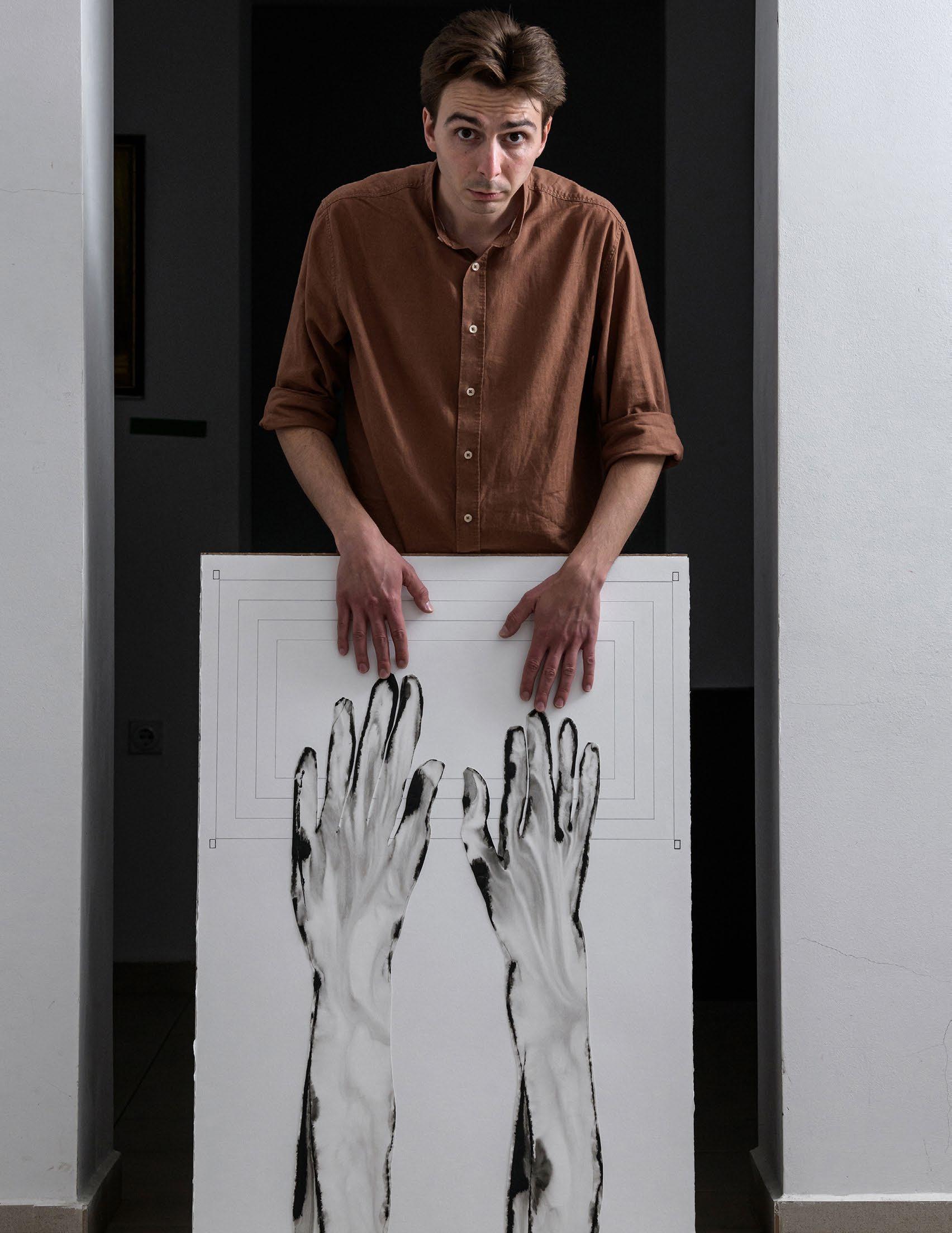

THE PERSPECTIVE OF YOUNG ARTISTS IN MACEDONIA AND ALBANIA: CREATIVE PASSION VERSUS HARSH REALITY IN THE ART WORLD
THE PERSPECTIVE OF YOUNG ARTISTS IN MACEDONIA AND ALBANIA: CREATIVE PASSION VERSUS HARSH REALITY IN THE ART WORLD
Young visual artists often navigate a maze of challenges as they strive to find their place in the vibrant art world. Due to insufficient institutional support and information on accessing funding, these young creatives find themselves at a crossroads between artistic integrity and commercial viability, fighting to showcase their work and gain recognition.
What are the opportunities for young artists in Albania and North Macedonia and can they receive adequate education, access to art spaces to exhibit and present their work, and build their own career, we learn from the perspective of the Albanian multimedia artist Redina Qose and the Macedonian graphic and visual artist Stefan Mladenovski.
101 JP TRAILBLAZING MAGAZINE
Redina Qose, born in 1996 in Patos, Albania, is currently living and working in Tirana. She earned her degree in Multimedia from the University of Arts in Tirana in 2019. Her artistic practice spans across various mediums, in visual and conceptual art, such as photography, video art, performance, and audio-visual installation, reflecting on thought-provoking narratives. Her work explores themes like migration, beliefs, exploring the complexities of human relations, and societal issues. In her practice she reflects also on generational trauma, and the enduring impact of historical and social contexts on Albanian contemporary realities..
Stefan Mladenovski from Macedonia is only 28 years old, and he has a Master‘s degree in Graphics and is the winner of three national awards. He received his education at the Faculty of Fine Arts in Skopje and has so far held 8 solo and over 30 group exhibitions in the country and abroad. He is considered a promising and talented author, who is part of the younger generation of graphic artists in Macedonia, and since 2020 he is also a member of the Association of Artists of Macedonia. A medium through which he can fully express himself is paper, and despite the fact that he is a graphic artist, lately he has been more and more devoted to drawing and even painting techniques.
As many young artists, their artistic dream began with inspiration, but now both admit that the road to success is difficult and fraught with obstacles - from accessing education, securing finance to the relentless pursuit of visibility in a crowded market. Both agree that in both countries there is a gap between the artistic community and state support for young artists. However, while Mladenovski is satisfied with the quality of
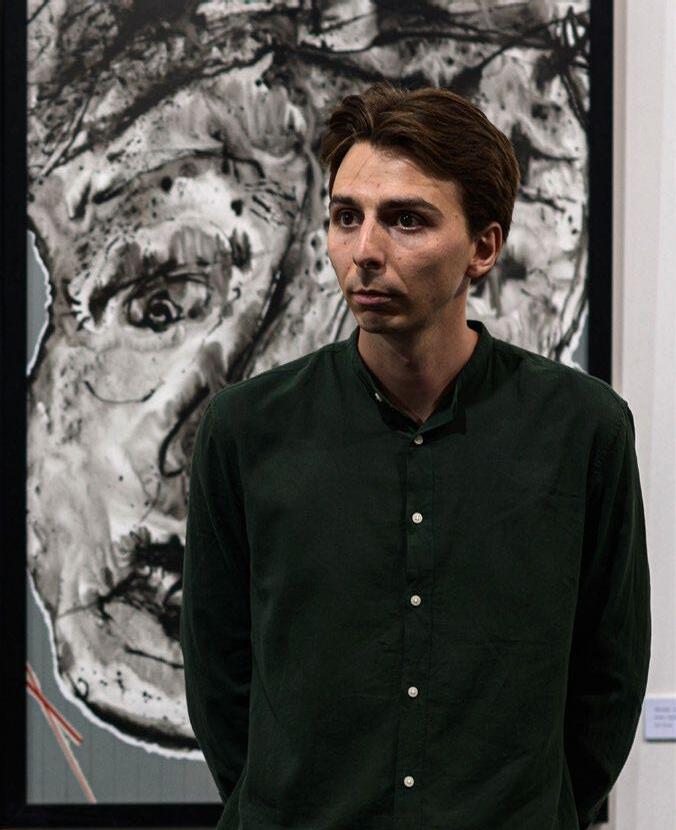
education and mentoring support in his home country, according to Qose, the lack of cooperation in Albania starts from the limited access to quality art education and mentoring, and ends with the lack of funding for appropriate programs and art projects. She points to the lack of specialized art schools and institutions offering comprehensive art programs, as well as an independent scene free from political influences.
“The biggest challenges for art education are the „outdated“ schools and the lack of specialized programs in these institutions. Many aspiring artists, myself included, struggle to find formal training opportunities that meet their needs,“ responds Qose.
Art universities in Albania are mainly represented by the University of Arts in Tirana and Shkoder or 2-3 private universities, such as Polis University or Marubi, which are also very limited with programs. Additionally, several private universities offer specialized programs related to art and design, providing alternative options for students seeking
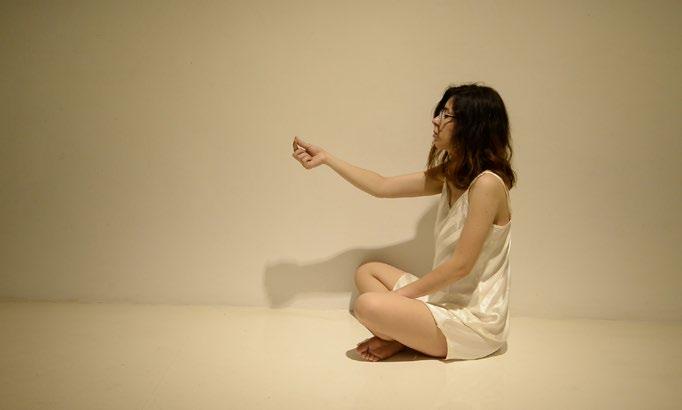
more specialized training. But despite this, access to quality art education remains limited. There is a noticeable gap in institutional support for emerging authors with mentorship programs, artist residencies or exhibition spaces dedicated to showcasing the work of young artists.
“Although, in recent years there have been such spaces intended for young artists, it is still a problem that only a few of them remain independent of political affiliations. However, these challenges have encouraged me to be adaptable, resilient and open-minded in my artistic practice,“ the young artist notes.
Studying Multimedia was her choice, as it represented the best and probably the only option aligned with her interests at the time. Despite receiving a bachelor‘s degree, she faced challenges in finding a suitable master‘s program in the field, so she decided to skip a few years.
“After university, I struggled to find professional work, so I had to adapt to the market by working as a designer or even in the social society area. This change, let‘s say, took me away from the art scene and practice for a while,“ says Qose.
On the other hand, the Macedonian graphic
artist Mladenovski, who is satisfied with the education and mentoring in his country, says that it helped him significantly in shaping his personal handwriting. His only remark is that as a student of graphics, some of the basic graphic techniques could not be learned at all due to lack of equipment and basic materials.
“In my case, things worked out well. In secondary education, I had excellent teachers from whom I learned the basics of the profession and who always knew how to build a relationship with the students. During my university days, however, I had mentors with whom I built an excellent relationship that has lasted, and whose guidance helped me a lot to realize myself from an author‘s point of view“, explains Mladenovski.
According to Qose, the Albanian art education system can provide more support to young artists by improving infrastructure and resources, including studio spaces and technology on the one hand, and by opening up more interactive and modern teaching methods and informal, non-academic programs on the other.
“These institutions should be more open to cultural and artistic exchanges, providing students with more opportunities. Encouraging collaboration between educational institutions, cultural organizations and industry can provide students with hands-on experience and networking opportunities, preparing them for their careers in the arts,“ the multimedia artist believes.
The barriers they encounter often put young artists at a crossroads, torn between
ARTS/CULTURE
ARTS/CULTURE 102 JP TRAILBLAZING MAGAZINE 103 JP TRAILBLAZING MAGAZINE
the pursuit of their passion and the harsh realities of the industry. But despite the limitations that stand in their way, as persistent individuals they continue, driven by a burning desire to leave their mark on the world stage.
It was precisely the insufficiently creative and inclusive artistic environment that left a strong impact on Qose, who at the beginning of her artistic journey faced a discouraging experience in cooperation with public institutions. She particularly highlights the project that included a traveling exhibition in Korča and Dibra.
“Unfortunately, this experience highlighted the sense of isolation often felt in the arts community and the reluctance of institutions to engage in meaningful collaboration with artists or citizens.“ It revealed the significant barriers in bridging the gap between the artistic community and government bodies,“ explains Qose.
As in the case of North Macedonia, the art scene in Albania is small, and artists, especially young ones, may have difficulties to connect and collaborate with other artists and art organizations on an international level. This may limit their opportunities to explore and be a part of changes in the global art scene.
“There are many challenges and barriers in Albania that can limit me in my growth, starting from the difficulties to find financial means to support projects or works due to the lack of financial grants or their unequal distribution. The possibilities are limited, and the competition is strong,“ concludes Qose.
Qose plans to continue her training and education abroad. She points out that moving from the Liceum to the University of
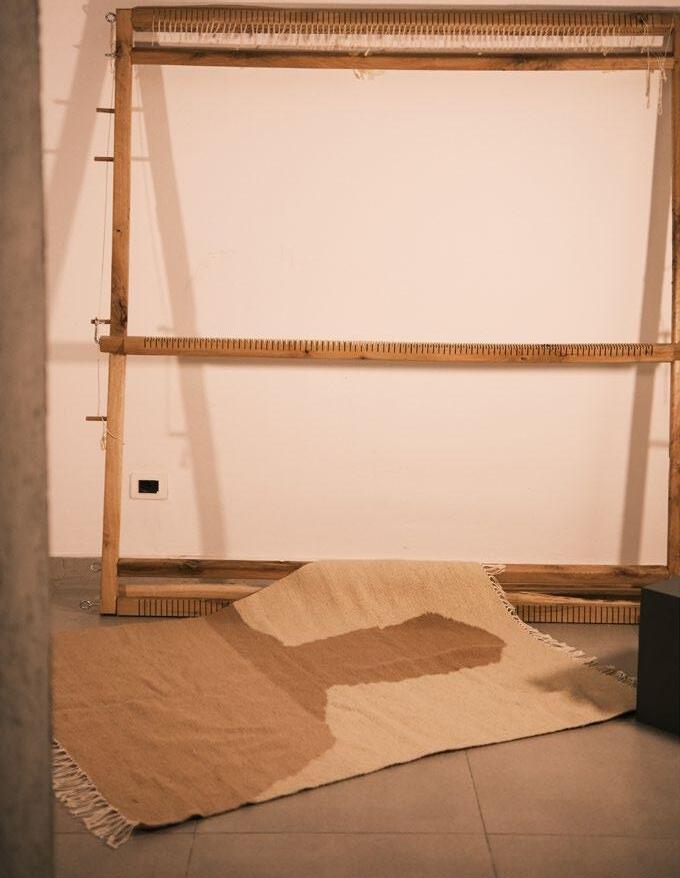
Arts where she started exploring different media such as photography, video, performance and installation, she was lucky enough to meet a foreign curator who recognized the potential of her work. This meeting also created new opportunities for collaboration.
“Besides an appropriate educational program, one of the main motivations for studying abroad is the opportunity to immerse myself in a new artistic environment. Experiencing different cultural contexts, artistic traditions and approaches to creativity can significantly enrich my artistic practice. Furthermore, studying abroad can facilitate networking and making connections in the global art world, future collaborations and career opportunities,“ says Qose.
She believes that the opportunities for exposure and cooperation abroad are greater. There are multiple galleries, art fairs, residencies and cultural institutions that provide platforms for young artists
to showcase their work and connect with other creative individuals. International exhibitions and networking, she says, are absolutely vital to the career development of any artist, at all stages of the career. The ability to present one‘s work on a global stage not only increases the audience, but also exposes the artist to different artistic perspectives and influences. Networking with artists, curators and collectors from around the world, in turn, opens up opportunities for collaboration and professional development that may not be accessible through local networks alone.
“Not to go further, I can compare Albania and Kosovo and notice significant changes in the dynamics of the artistic community and the relations between artists, state institutions and private structures. The artistic community in Kosovo is energetic and supportive, shows resilience and creativity, unlike in Albania where the art scene can face certain institutional challenges or limitations, and there is also an absence of cooperation between the actors,“ says this young artist.
Mladenovski also has a pleasant experience from the art scene in Kosovo, having recently stayed at the artistic residency in Kosovska Mitrovica, organized by the private cultural center „Aquarius“, where he also showed his work through an independent exhibition.
“Even though I don‘t have many exhibitions outside, from the experience so far I can notice that the fine art is put on
a higher level there for nuance. There was an excellent organization and new acquaintances, which will certainly result in new collaborations in the future,“ says Mladenovski.
But despite all the challenges, Qose singles out the performance at the Zeta Gallery in Tirana as one of the most beautiful experiences in her artistic career. During the exhibition, she embarked on a deeply personal and introspective journey, where she devoted herself every day to weaving a carpet on a loom.
“The carpet represented my father‘s silhouette, like a shadow falling on the surface, but this could only be seen after the work was finished,“ recalls the multimedia artist.
In the coming period, Qose wants to fully dedicate herself to creating and producing works that reflect her artistic vision and will explore topics that are personally meaningful to her. In parallel, she continues to search for further education abroad, looking for opportunities to fit into a new artistic environment and work on her growth and self-exploration. She suggests that young people to cultivate relationships with the local art community and connect with fellow artists, curators and art professionals. Building a strong network can open doors, provide new inspiration and a creative process to achieve one‘s goals.
Co authored by Zaklina Cvetkovska, North Macedonia and Lauresha Basha, Albania
Disclaimer: The production of this story was supported by the Thomson Foundation as part of the Culture and Creativity for the Western Balkans project (CC4WBs). This story was created and maintained with the financial support of the European Union. Its contents are the sole responsibility of the author and do not necessarily reflect the views of the European Union.
ARTS/CULTURE
ARTS/CULTURE 104 JP TRAILBLAZING MAGAZINE 105 JP TRAILBLAZING MAGAZINE
In Brief
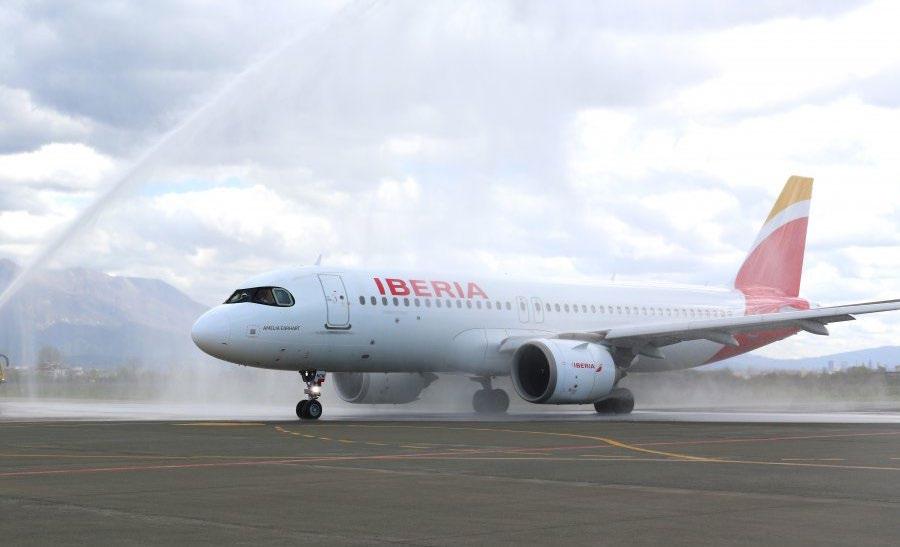
March 28, 2024 marked a significant milestone for Tirana International Airport (TIA) as we celebrated the commencement of operations by Iberia, connecting Tirana with the vibrant city of Madrid. The inaugural flight, IB3386, departed from Madrid to Tirana with 152 passengers onboard, signifying the beginning of a promising partnership between TIA and Iberia.
Tickets for these flights are now available for purchase at
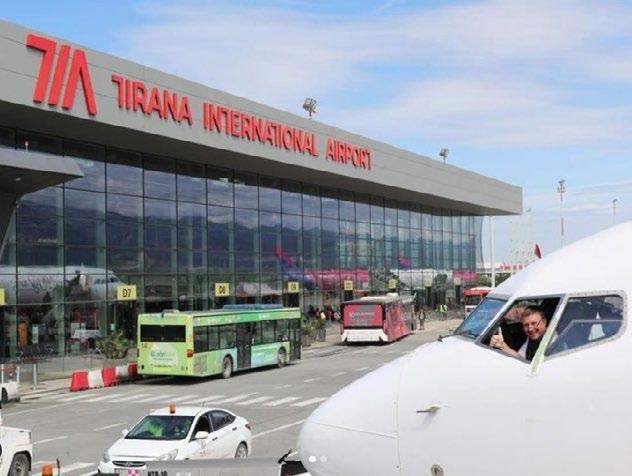
EIB Global boosts Albania’s railway transport
€100 million for the EU-financed Vorë-Hani i Hotit railway line
EIB Global, the outward facing arm of the European Investment Bank, has just unlocked a substantial €100 million loan to give Albania’s railway system a major facelift. The cash is going straight into improving the railway line that stretches a good 120 km from Vorë all the way to Hani i Hotit right up against the Montenegrin border. The project’s a big part of the EU’s actions to get rail infrastructure in

and ecofriendly transport.
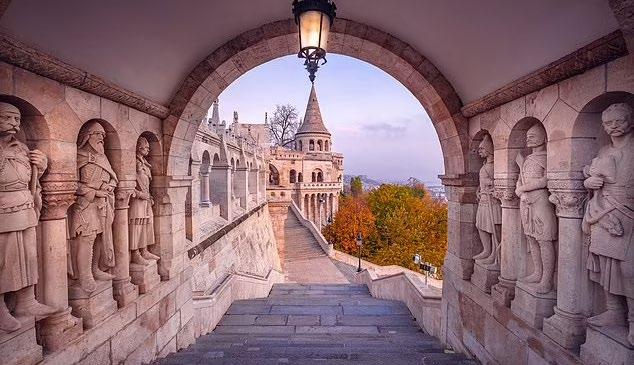
THE PERFECT BUDAPEST CITY BREAK
Thermal baths, castles, and buzzing bars - here’s how to spend four days in the Hungarian capital
Here’s how to spend a perfect city break in Budapest.
READ MORE BELOW
READ MORE BELOW
READ MORE HERE
106 JP TRAILBLAZING MAGAZINE 107 JP TRAILBLAZING MAGAZINE
the Western Balkans on the fast track to better economic ties, trade,

HOTEL BRANDS: COMPLETE
GUIDE TO THE TOP HOTEL CHAINS
Hotel brands are unique identities created by hotel chains or individual hotels to stand out in the market. They represent a mix of
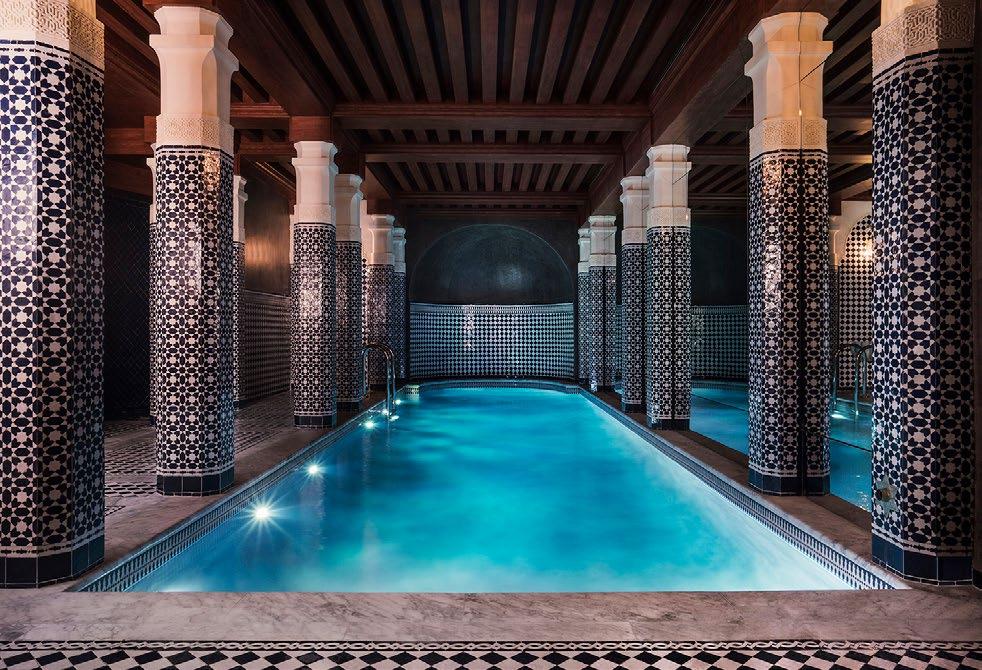
12 OF THE WORLD’S MOST SPECTACULAR NEW SPAS
From the seclusion of mountain fastnesses to beachfront tropical
hideaways, each spa represents the power of place. Designers are increasingly mining local heritage, weaving spaces with materials, motifs, and rituals that echo the essence of their locales. Journey through to unveil how the dreamiest new spas of today transcends the ordinary, becoming gateways to enriched harmony, profound connection, and radiant beauty.
11 REMARKABLE ISLANDS IN EUROPE TO VISIT IN 2024
If you’re contemplating a European adventure, consider at least one of these islands. Each offers its own unparalleled flavor of relaxation, fun and indulgence.

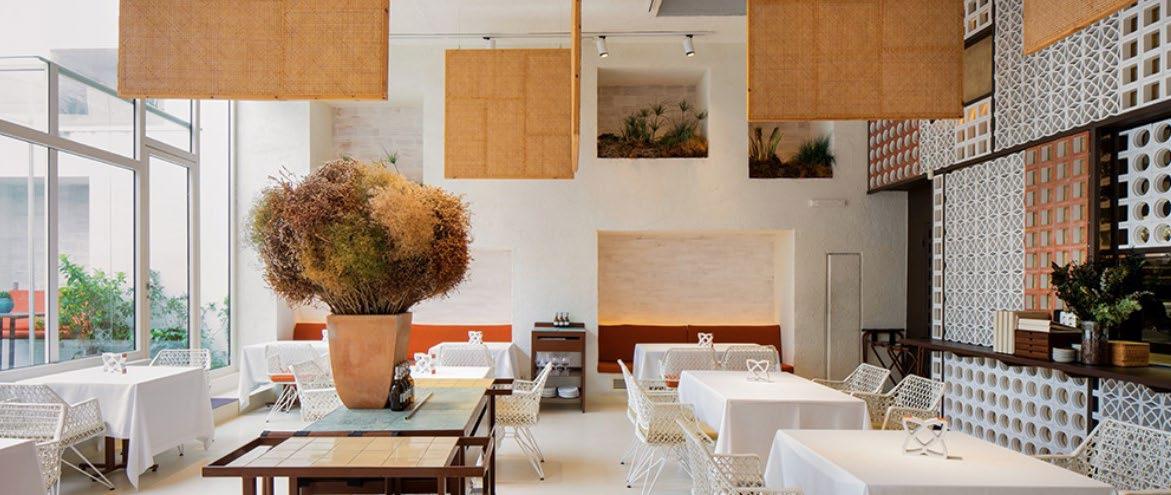
WORLD’S BEST RESTAURANT FOR 2024 REVEALED
Any doubts that Spain remains the fine dining center of the world may just have evaporated with the revealing of the World’s 50 Best Restaurants for 2024 list.
Five eateries from the European nation made the list – three of them in the top five.
READ MORE HERE READ MORE HERE
READ MORE HERE
READ MORE HERE 108 JP TRAILBLAZING MAGAZINE 109 JP TRAILBLAZING MAGAZINE









































 Albert Borschette, Conference Centre, Brussels
Place the caption here: Participation in the WB Youth Summit 2022 in Vienna.
Participation in the WB Youth Summit 2022 in Vienna.
Albert Borschette, Conference Centre, Brussels
Place the caption here: Participation in the WB Youth Summit 2022 in Vienna.
Participation in the WB Youth Summit 2022 in Vienna.









 With Mr. Kristian Cuku, founder of XTRA Real Estate LLC and co-founder of various startups.
With Mr. Kristian Cuku, founder of XTRA Real Estate LLC and co-founder of various startups.
 By Rudina Hoxha
By Rudina Hoxha


 With the Albanian singer, Ms. Besa Kokedhima who represented Albania in Eurovision 2024 in Malmo, Sweden
With the Albanian singer, Ms. Besa Kokedhima who represented Albania in Eurovision 2024 in Malmo, Sweden













































 By Naziya MAMMADOVA SOURCE: IRS Heritage
By Naziya MAMMADOVA SOURCE: IRS Heritage












 EIA -05 Sant and Buhagiar -Inventor with Invention
EIA -06 Devos and Moreau -Inventor with Invention
EIA -05 Sant and Buhagiar -Inventor with Invention
EIA -06 Devos and Moreau -Inventor with Invention
 By Rudina HOXHA
By Rudina HOXHA


















